Taku Ota Waṡte
(Many Good Things)





SHAKOPEE MDEWAKANTON SIOUX COMMUNITY
FOUR-YEAR REPORT | 2020-2023

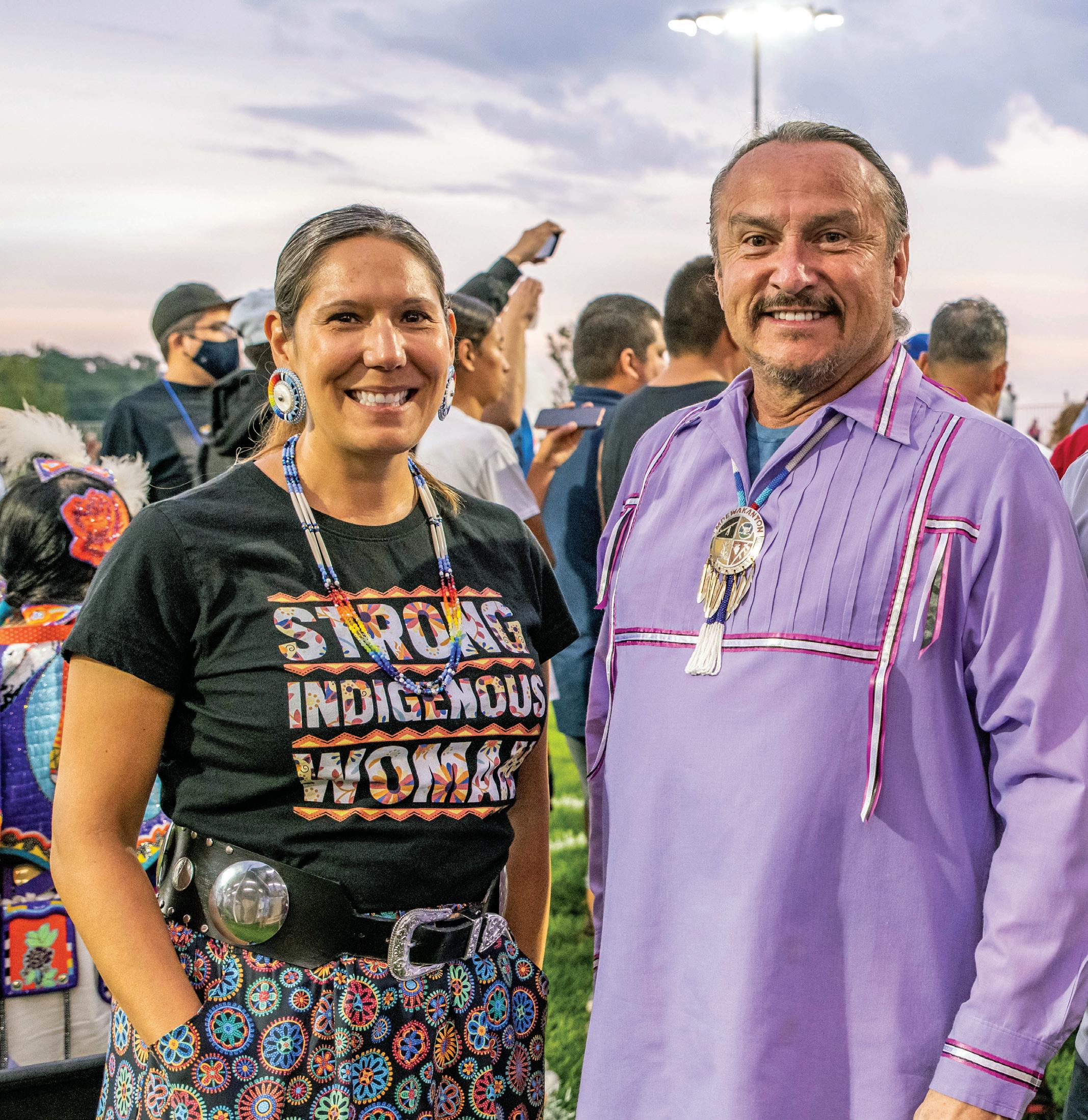

These past four years have brought many changes to the SMSC. We’ve seen significant progress and overcome unprecedented challenges, from navigating a pandemic to regaining significant parcels of our original homeland.
Without question, the COVID-19 pandemic was a uniquely challenging time in world history and had a profound impact on the tribe and our operations. We learned how to quickly enact measures to protect the health of our members and employees, while identifying new and innovative ways to manage our enterprises effectively. Throughout it all, our tribe proved resilient and resourceful, rising to face every challenge presented by a public health emergency that was far-reaching and devastating in its impact.
There were many successes to be celebrated as well. The Business Council continued to protect tribal sovereignty and plan for the next seven generations by prioritizing land acquisitions and strategic community planning. In fact, the SMSC had one of the largest land acquisitions in the tribe’s history approved into trust, with the 294-acre Hiŋhaŋkaġa parcel placed into trust status in July 2022. Expanding our land base for future generations is critical for our Community, and the acquisitions of the last four years represent significant progress in this regard.


The SMSC has also been pushing to defend tribal sovereignty on a national level by advancing legislation to support the 2023 Farm Bill. As one of the leaders of the Native Farm Bill Coalition, we have continued to work toward making sure the United States fulfills its treaty-based obligations to ensure that every Native community is food self-sufficient and economically self-reliant.
As a Community committed to collaboration, good communication, and positive relationships with neighbors in Scott County and beyond, the SMSC has sought out ways to be more efficient with its resources and develop partnerships that mutually benefit the tribe and surrounding cities, governments, and local municipalities. During the pandemic, many of these relationships evolved into truly collaborative alliances, as we worked together to address the extraordinary challenges before us. We were honored to celebrate the 30th anniversary of our mutual aid agreement with the city of Prior Lake in 2023, and participate in a flag exchange with the city in recognition of our ongoing partnership.
The relationship between tribal governments and state government has also improved dramatically over the last few decades. Tribes now have greater access to tell their stories and describe their needs, and to fight for what is right for Indian Country and for tribal governments. In March 2023, the second Sovereignty Day was held, with members of the Minnesota Senate participating for the first time in the Senate’s history. The day served as a chance to uphold and affirm the government-to-government relationship that the state of Minnesota has with the 11 tribal nations that share our boundaries.
As we reflect on the last four years, we are especially grateful for our Community Members who have served and continue to serve on the SMSC’s various boards, committees, and work groups. Your efforts have helped to propel our tribe forward in a positive direction and we are confident that your continued commitment and contributions promise a bright future for us all.


What accomplishments are you most proud of in the last four years?
These last four years, the Business Council, our tribe, and the nation as a whole had to navigate a worldwide pandemic. Albeit challenging, we were able to successfully develop strategic plans for protecting the well-being of our members, employees and team members, and visitors to the SMSC. Not to mention, maintaining our tribal members’ quality of life with the shutdown of the Gaming Enterprise. With the help of many, we were able to get through this challenging time with grit and determination for a better future. The COVID-19 pandemic changed many things around the Community, from smoking policies in our Gaming Enterprise to expanding our public health and safety protocols with the help of Tribal Public Health and Mdewakanton Public Safety. I’m proud of the way in which we persevered as a Community, and I look forward to what else the SMSC can achieve.
Another thing that I am extremely proud of finally seeing come to fruition is the groundbreaking of the new location of the SMSC Organics Recycling Facility. For years, we have
Chairman Keith Anderson is serving his fifth consecutive four-year term on the SMSC Business Council. Before becoming Chairman in 2020, he served two terms as Vice-Chairman and was previously Secretary/Treasurer. Earlier in his career he served on the SMSC Gaming Enterprise Board of Directors for seven years, including five years as chairperson. He also worked as a design drafter for Rosemount, Inc., and as a store planner for Target Corporation.
On behalf of the SMSC, Chairman Anderson helps represent the tribe in Minnesota and across Indian
been planning and preparing for this relocation. There are so many individuals who helped us get to this point, and I extend my gratitude to each and every one of them. The new location will help us continue to be a leader in the composting field and to reach Minnesota’s goal of recycling 75% of the state’s waste by 2030.
Lastly, the tribe and its lobbying team have been working tirelessly to make sure that electronic pull tabs are being used correctly in accordance with the legislation that was passed in 2012. At that time, agreements between the state, tribal governments, and charities stated that electronic gaming would simply update paper pull tabs and not function like video game slot machines. Electronic pull tabs have benefited many, but not the tribes. Beginning in 2025, a new Minnesota law plans to ban the “open all” feature in electronic pull tabs. I’m proud of the work that has been done to protect the original intent of the law.
What was the biggest challenge for the tribe during your term, and how did you work to address it?
Undoubtedly, one of the biggest challenges during this term was the onset of the COVID-19 pandemic. The entire
Country. He serves on the board of directors for Greater MSP, is the chairman of the Minnesota Indian Gaming Association (MIGA), and is the chairman for the SMSC’s Hotel Development LLC, which owns the JW Marriott hotel at Mall of America. He previously served as the Co-Chair of the Native Farm Bill Coalition, which successfully advocated for Native American interests in the 2018 Farm Bill.
Chairman Anderson has a degree in small business administration and mechanical design has lived in Prior Lake and Shakopee since 1969.
world had to learn new ways of everyday living, and our tribe was no exception. From adjusting our enterprise operations to developing and enforcing health and safety measures, we navigated the pandemic in a manner that makes me proud to be Chairman of this tribe. There were also difficult financial decisions that had to be made in order to protect our assets while prioritizing the Community’s health. Thanks to the efforts of our team, we were able to thread the needle in this regard and demonstrate resilience during a very challenging time in our history. I appreciate the work that many Community Members, employees, and team members put into sustaining our tribe as a modern, thriving government. I also want to call attention to the many talented and passionate people we were able to hire in recent years— even during a pandemic. Together, we put the tribe first and made positive changes for all.
What makes serving on the Business Council special?
It is an honor to serve the members of the SMSC. It has always been important to me to lead with integrity. There have been many leaders who have inspired me to continue serving on Business Council all these years, and I have done my best to ensure that I honor their legacy while continuously evolving for the future needs of the tribe. I appreciate the support I have received during my terms, and I’m excited for what the future holds.
I have great hopes for the future of the SMSC. First and foremost, I look forward to our tribe continuing to exercise our sovereignty and be self-sufficient. Over the years, we have learned how to successfully advance the tribe’s priorities while fostering valuable working relationships with other governments and organizations. I hope that the Community continues to take every opportunity to defend its sovereignty, while educating others on its significance.

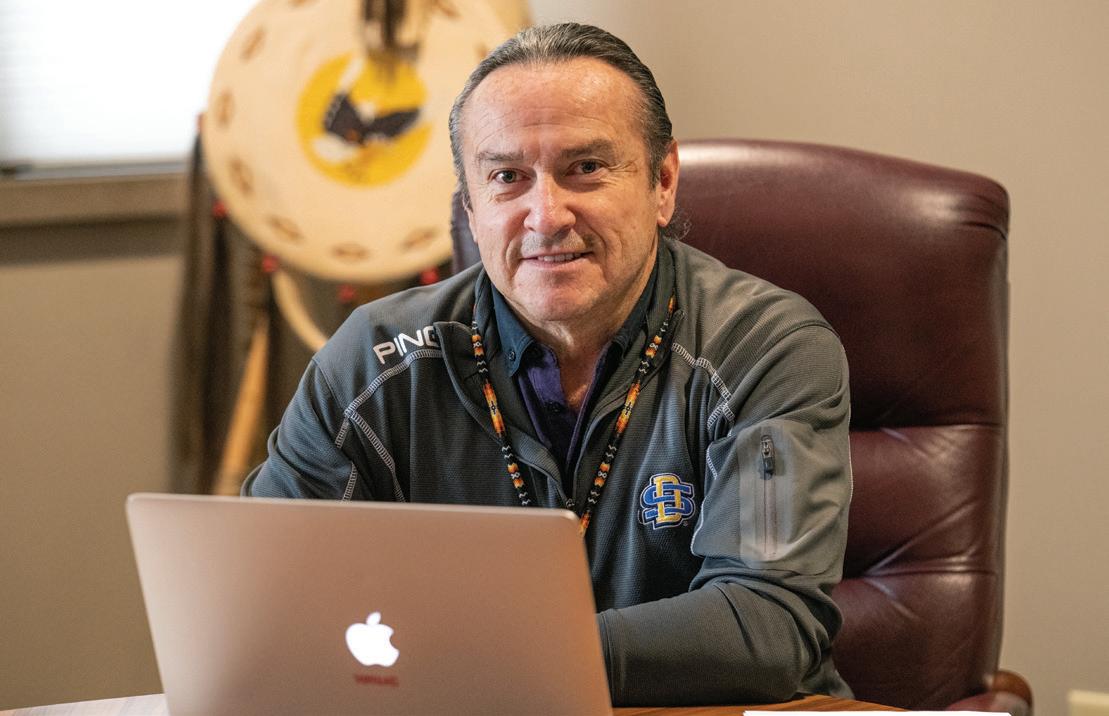
I also hope the SMSC will continue to prioritize growth and enterprise expansion. Our Community has grown tremendously over the last few decades and is poised to continue growing in the decades ahead. In recent years, the tribe has created an Economic Development Department to help the growing needs of our Community and to assess our current structure and business ventures. We have also added new levels of leadership such as the Public Safety Administrator and Economic Development Administrator. By taking measures today to build upon and diversify our current level of operations, we will be much better situated to meet the needs of the Community tomorrow. The SMSC has long been forward-thinking in its strategic planning and I truly believe our tribe is positioned to thrive for many generations to come.

What accomplishments are you most proud of in the last four years?
Our ability to formulate a rapid, well-informed, multifaceted response to the COVID-19 pandemic was a major accomplishment, given the difficulty and uncertainty of the time. As a council, we met seven days a week for months at a time to evaluate the situation and devise strategies for protecting the health and safety of our members, employees, team members, and guests—while also being mindful of carefully managing the tribe’s assets and resources. It was unquestionably challenging at times, but the silver lining was being able to work so closely with the many capable, competent teams we have here at the SMSC. Thanks to the coordinated efforts of Tribal Public Health, our leadership team, and countless others, we were able to effectively navigate an unprecedented situation and come through it stronger as a Community.
I was also honored to serve as Co-Chair of the Native Farm Bill Coalition and have the opportunity to advocate for the SMSC and other tribes on key issues related to farming, nutrition programs, and more. The SMSC has long been a leader in Indian Country in this regard, so devoting our resources and partnerships toward the betterment of tribal interests across the nation is—to me—not just a privilege but a responsibility. Many of the tribes that are most affected by the provisions within the Farm Bill do
not necessarily have the resources to advocate on their own behalf, so the work that we have done as part of the coalition has helped to ensure that Native priorities across Indian Country are acknowledged and included in the decision-making process. I’m grateful to have played a role in this important work.
On a more personal level, I’ve relished the opportunity to build deeper connections with many Community Members and their families since taking office, which has truly been one of the most fulfilling parts of the role. I consider myself a problem-solver, so I enjoy working directly with the members on the issues most pressing to them, whether they’re small or large in scope. I think it’s important that leaders remain accessible to the people they’re serving, in order to better understand their needs so that an appropriate solution can be reached. It’s been very rewarding to foster those relationships and help others through whatever challenges they might be facing.
What advice would you give to the SMSC’s youngest members and future leaders of the Community?
I would encourage our younger generations to learn from our Community’s elders and leaders. We have so many individuals in this Community who possess a wealth of knowledge and wisdom about our story as Dakota people,
Vice-Chairman Cole Miller is serving his first term on the SMSC Business Council. He serves as the Co-Chair of the Native Farm Bill Coalition, which advocates for Native American interests in the federal Farm Bill. Before becoming ViceChairman, Miller served as the community liaison for Mdewakanton Public Safety, the tribe’s full-time fire department, paramedic-level ambulance service and emergency management organization. He has been active in the Community for many years, including chairing the tribe’s Wacipi Committee.

so I would encourage youth to seek out every opportunity to listen and learn from their experiences and life perspectives.
I would also remind our youngest members that it’s ok to struggle—you don’t need to be immediately successful in everything you do. Even if you drop the ball or fail outright at something, you cannot let that deter you from working toward your goals.
What do you foresee as being some of the more pressing challenges the Community will face in the near future?
Mental health has come to the forefront of the national discourse in recent years, and the SMSC is certainly not immune to the many issues afflicting an increasing percentage of the population. Prioritizing the emotional, psychological, and social well-being of our members is a top concern of mine and I hope that we will continue to expand our outreach efforts to help anyone who might be struggling. I believe the more that we can do to equip our members with the resources needed to identify and address any potential issues before they escalate, we will be happier and healthier as a Community.
What are your hopes for the SMSC’s future?
As Vice-Chairman, one of my primary duties is to help oversee the tribe’s land and its assets. In the last four years, we’ve made record-breaking progress not only through the purchase of hundreds of acres of land, but also by successfully placing significant parcels into trust. I don’t think there is any better way to invest in our future than through land acquisition, so I hope that we continue to prioritize this expansion in the future. Growing our land base not only offers the opportunity to reclaim our historical homelands, but it also reaffirms our tribal sovereignty and gives us greater control over our resources and plans for future economic development. I don’t think there’s anything more important for the future of our tribe.
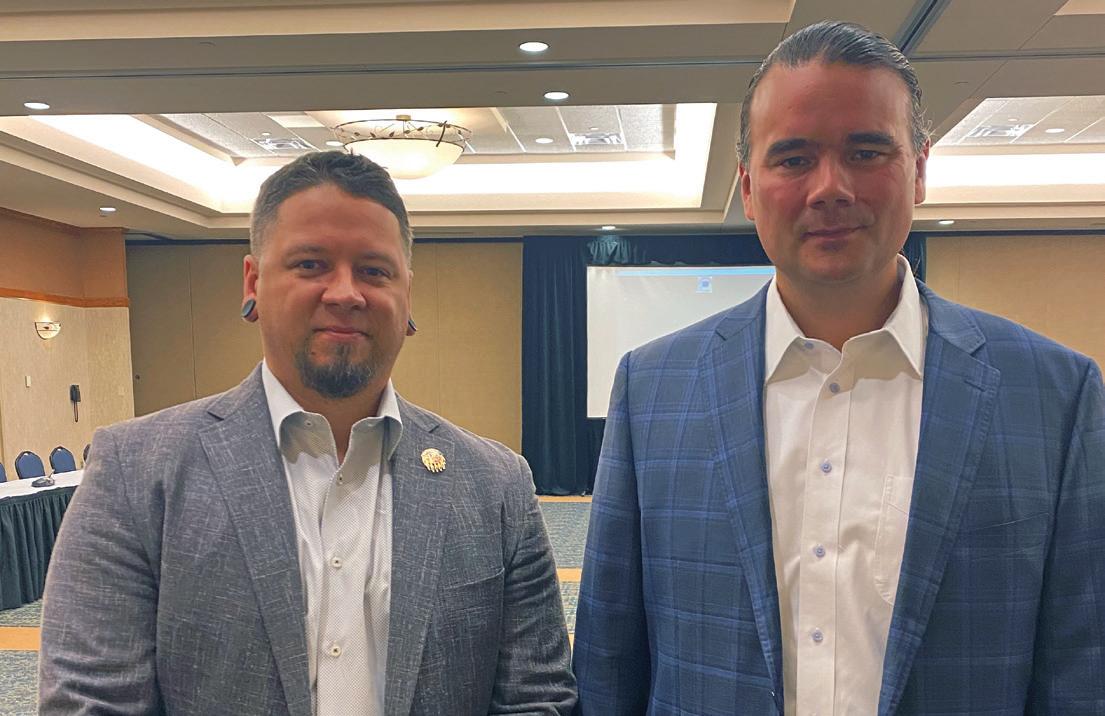

I also hope that the Community continues to diversify its operations and build for the future. We know that we cannot take any current successes for granted, so having the foresight to broaden the tribe’s portfolio will help shield the Community against any volatility that might arise in the future. We have always been forward-thinking in this regard and our various endeavors have served us well, so I hope that we continue to apply this sustainable growth mindset to future opportunities that present themselves.
Looking to the future, I also hope that we can work toward greater unification as a collective Community. It’s wonderful to see the incredible growth we’ve experienced in just a few short decades, but such growth also requires a more concerted effort to maintain the close connections that arise naturally in smaller populations. We have so much to learn from each other and I believe that by embracing the different strengths and perspectives we bring to the table, we can more easily reach our shared objectives to everyone’s benefit.
It’s been an absolute honor to serve on the SMSC Business Council. Knowing that my fellow Community Members entrusted me with this role is not something that I ever took lightly and I endeavored every day to lead with compassion, fairness, and humility. Above all, I think it’s invaluable for a leader to be approachable and connected to the community they are serving, so that they can understand the issues and priorities of the people who put them in office. The past four years have certainly not been without their challenges, but the entire experience has been incredibly rewarding and I have learned and grown a lot as an individual and as a leader. I am immensely grateful to the Community for having given me this opportunity, and I have done my best to live up to the high standards set by the leaders who came before me.
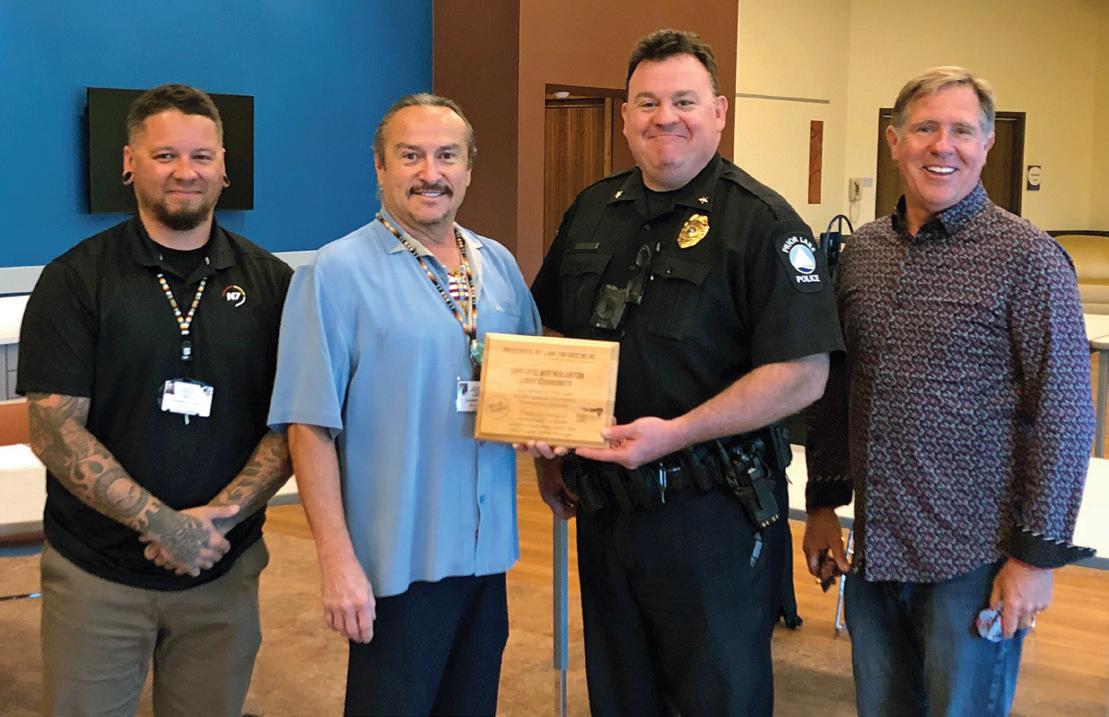
What accomplishments are you most proud of in the last four years?
Despite the challenges we faced in the last four years, there were certainly many more accomplishments to celebrate. It was a true honor to serve as chairwoman of the Understand Native Minnesota campaign, which we launched in 2019 to help improve the Native American narrative in Minnesota schools. The campaign has already had a profound impact upon K-12 education, which I’ve been able to witness firsthand through my conversations with educators—most of whom have enthusiastically embraced the resources and guidance offered through the initiative. There is more work to be done of course, but it’s been incredibly gratifying to see significant progress made in the way schools are now approaching Native history, governments, and culture.
Secretary/Treasurer Rebecca Crooks-Stratton is serving her second term on the SMSC Business Council. CrooksStratton previously served one term on the SMSC Gaming Enterprise Board of Directors and chaired its Audit Committee. She also served two terms on the SMSC Gaming Commission and worked for the tribal government in administration roles from 2007-2016. She has led projects such as the Minnesota Tribal Nations Plaza at Huntington Bank Stadium in Minneapolis and helped launch the SMSC’s Understand Native Minnesota campaign.
Throughout her career, Crooks-Stratton has been an active member of the broader community. She is the
In the past four years, we have also secured a number of significant and sizable land acquisitions, as we continue to plan for future growth as a Community. Few things are more important than growing our land base for future generations, and I’m proud to say that we have added 1,370 more acres from 2020-2023, with more than 59% of the tribe’s land now in trust.
As part of this larger effort to plan for the Community’s future, the Business Council and the SMSC’s lobbying team worked hard to foster legislative relationships and protect the tribe’s interests at all levels of government. This work is neverending but absolutely essential to the continued survival and success of the SMSC. We tallied several wins in the last four years in this regard, including adding technical amendments to the gaming compacts to protect tribal exclusivity.
Midwest Area Vice President of the National Congress of American Indians, and serves as Treasurer on the Board of Directors for the Native American Rights Fund. Recently she served as program director at the Native Governance Center, a nonprofit that provides leadership development and governance resources to tribal nations in Minnesota and the Dakotas. She serves on the Minnesota Zoo Board of Trustees and previously served on the Metropolitan Council’s Equity Advisory Committee, and served as ViceChair of the Prior Lake Indian Education Parent Advisory Committee. Crooks-Stratton has previously served on the SMSC Scholarship Selection Committee at the University of Minnesota and on the Community Education Services Advisory Council for Prior Lake-Savage Area Schools.
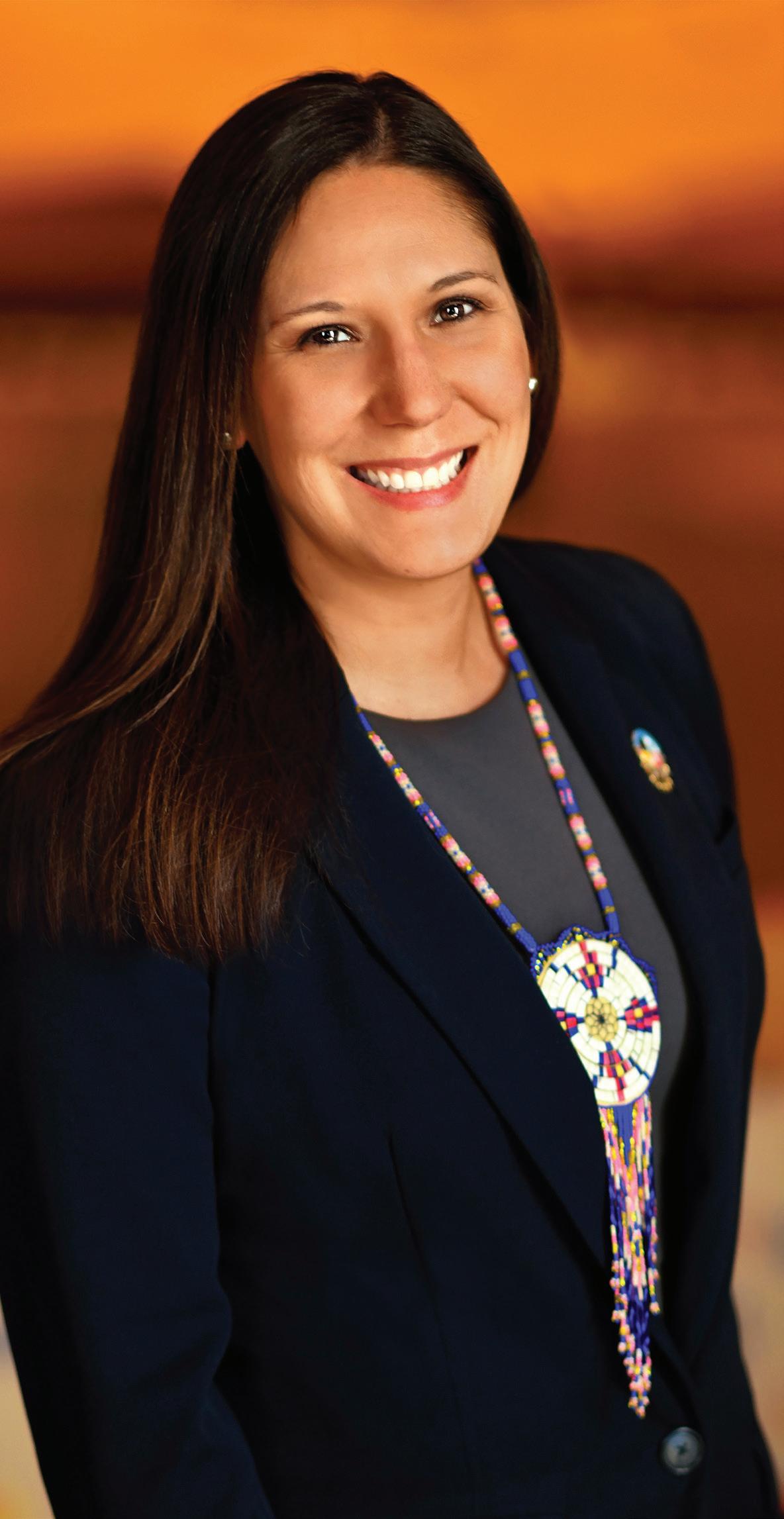
Relocating the SMSC Organics Recycling Facility is another highlight from my time in office, as that transition has been many years in the making and will allow us to expand upon the thriving operation the facility has built over the years. And finally, the reintroduction of pte (bison) to tribal lands has been very exciting. Our history as Dakota people has always been closely intertwined with that of the bison, so to see them return to our lands alongside native prairie is especially meaningful.
What was the biggest challenge for the tribe during your term, and how did you work to address it?
Obviously, the COVID-19 pandemic presented a huge challenge for our Community, but I’m proud of how we responded. The formation of Tribal Public Health and
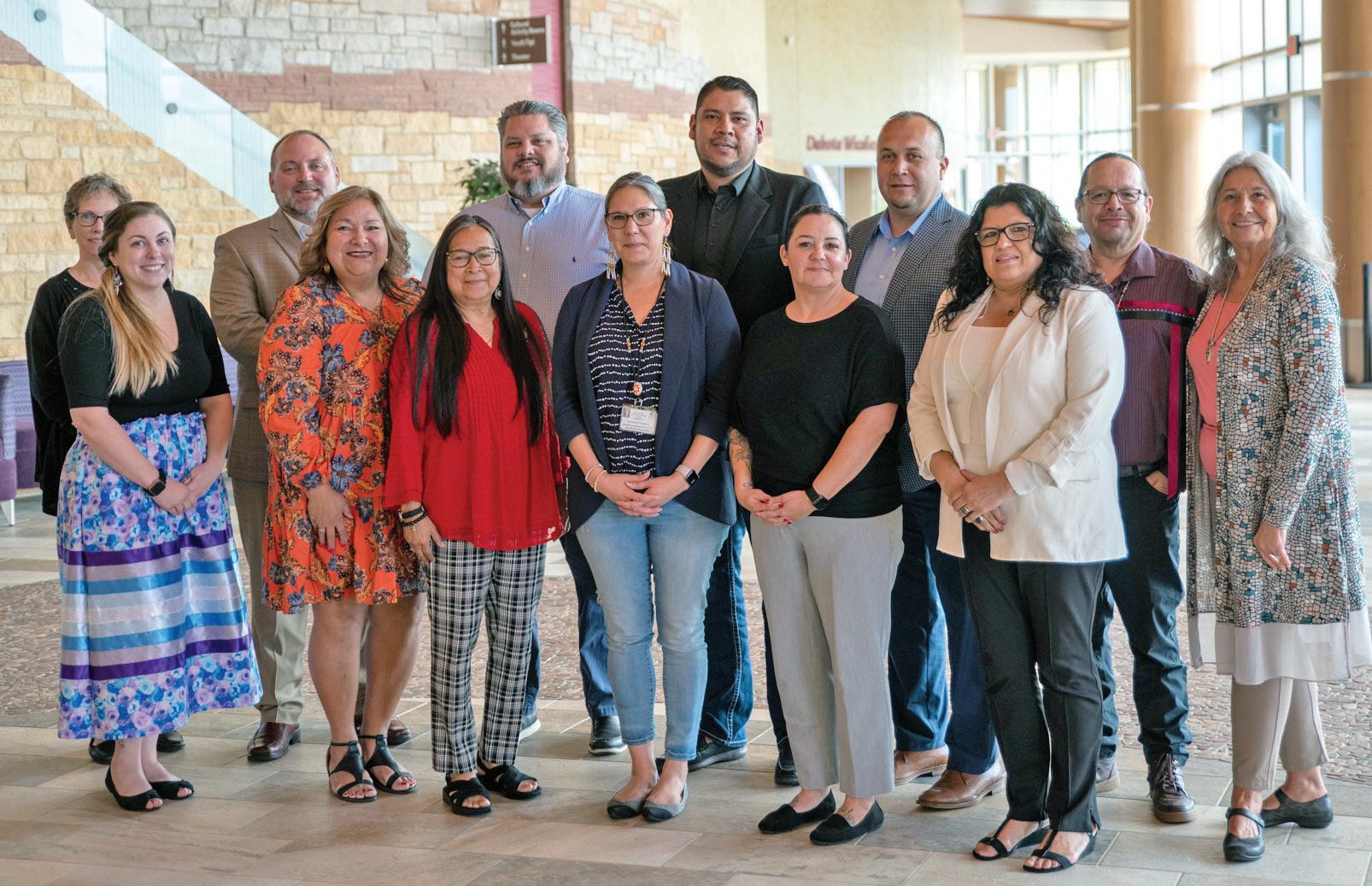
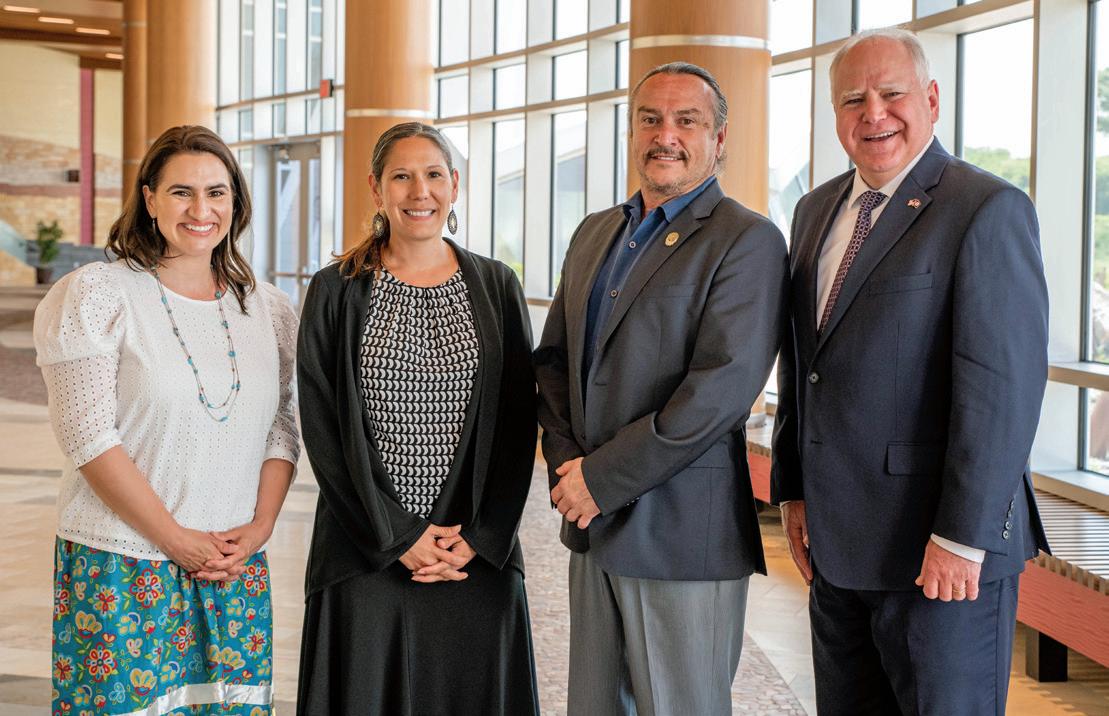

the diligence with which they monitored the developing situation was admirable, and helped prevent the disease from spreading uncontrollably in our Community. Protecting everyone’s health and safety was always the top priority, but we also managed our resources responsibly and were able to mitigate the financial impact of the pandemic as a result.
What are your hopes for the SMSC’s future?
I hope that our future leaders continue to take steps to protect the current and future needs of the Community. It’s not always easy to make the tough decisions, but the SMSC is stronger when its leaders are able to act decisively and judiciously when confronted with challenging situations. We have an incredible team here—lean on your experts but stay grounded in your values.
What advice would you give to the SMSC’s youngest members and future leaders of the Community?
In 2017, she received a Native American 40 Under 40 award from the National Center for American Indian Enterprise Development. She also participated in the Young American Leaders Program at Harvard Business School. CrooksStratton has a bachelor’s degree in American Indian studies and political science from the University of Arizona, and a master’s degree in tribal administration and governance from the University of Minnesota Duluth. Rebecca and her husband have three children.
Make an effort to truly understand tribal sovereignty, so that you can effectively protect it and exercise it as the future leaders of this Community. There are always going to be challenges made to our sovereignty, so it is critical that our younger generations are able to recognize the significance of it as a foundational principle to this Community, so they can effectively ensure its continuation in the future.
As with the rest of the world, the SMSC faced unprecedented challenges and uncertainty following the onset of the COVID-19 pandemic in 2020. Under the vigilant guidance of SMSC Tribal Public Health, tribal leaders worked swiftly to enact measures to protect the health and safety of all Community Members, employees, team members, and guests—helping to mitigate the significant impact of a multiyear, global health crisis while maintaining the SMSC’s forward momentum as a thriving Community.
In order to mitigate the spread of COVID-19 and protect the health and safety of its Community Members, employees, team members, and guests, the SMSC Business Council acted swiftly by creating Tribal Public Health (TPH), a collective team of public health and safety officials that would serve as a resource and authority on the pandemic and its many challenges. The team worked tirelessly throughout the pandemic to study the effects of the virus, suggest Community policy for Business Council and General Council to enact, and ensure compliance of guidelines throughout SMSC enterprises and departments.
It was under the direction of this team that the SMSC made careful but necessary decisions such as postponing several Community events, implementing temporary enterprise and department closures, passing resolutions, and more to mitigate the virus’ impact on the Community.
SMSC officials including the Business Council and the Tribal Public Health team—which includes representatives from the Health and Wellness Department and Mdewakanton Public Safety—continued to closely monitor the COVID-19 pandemic and took necessary precautions to regularly keep Community Members, employees, guests, and neighbors safe.
The SMSC also continued to regularly meet with other tribes in Minnesota, the governor’s office, and other local and federal officials to ensure the SMSC’s needs were met during the pandemic and beyond. General Council meetings included briefings and informational sessions from the Tribal Public Health team and regular updates were shared to keep Community Members and staff informed with the most up-to-date information that surrounded the pandemic.
In an effort to prevent the spread of the infectious disease, the Tribal Public Health team collaborated with the Minnesota Department of Health to conduct contact tracing in the Community throughout the pandemic. Additionally, the SMSC had five contact tracers who were certified through

Johns Hopkins University. This process involved identifying individuals who had an infectious disease (cases) and their contacts (people who may have been exposed) and worked with them to interrupt disease transmission. Tribal Public Health not only worked to identify who was infected and where but continued to work with individuals through their isolation processes and serve as a resource for patients from infection to full recovery.
As more ways of preventing the transmission of COVID-19 came to light, Tribal Public Health was quick to implement and communicate Community-wide best practices such as mask use protocols, social distancing procedures, screening practices, contact tracing, and more. The team also implemented procedures for Community Members who traveled during the pandemic. A health screening team worked to clear travelers when returning to the Community. For those who recently traveled—domestically or internationally— Tribal Public Health implemented protocol particularly related to identifying symptoms and potential exposure to COVID-19, along with quarantine processes if needed.
“I am proud of my team and their relentless efforts to combat this virus and keep our Community safe,” said Community Member and Tribal Public Health Administrator Joanna Bryant. “This experience has been far from easy to overcome, but we made it through, and I am confident that we are better because of it.”
The Tribal Public Health team was instrumental in keeping the SMSC safe since the beginning of the pandemic and continues to put the needs of Community families at the forefront of its efforts to cultivate a healthy and thriving Community. From monitoring daily developments to providing timely guidance on health and safety measures, Tribal Public Health offered an immeasurable amount of support and was able to mitigate the impact that the pandemic had on the Community and our neighbors.
The Department of Health and Human Services declared the federal Public Health Emergency for COVID-19 to expire on May 11, 2023, and Tribal Public Health got to work on ensuring an orderly transition out of the COVID-19 Public Health Emergency. This announcement serves as a testament to the major role that Tribal Public Health played to keep the SMSC and surrounding communities healthy and safe along the road to recovery.

This experience has been far from easy to overcome, but we made it through, and I am confident that we are better because of it.”
— Community Member and Tribal Public Health Administrator Joanna Bryant
Since the beginning of the COVID-19 pandemic, public health officials have echoed the sentiment that receiving a vaccine would be key to protecting oneself and others around them from the virus. Historically, vaccines have been proven to prevent serious complications and hospitalizations to individuals of all backgrounds.
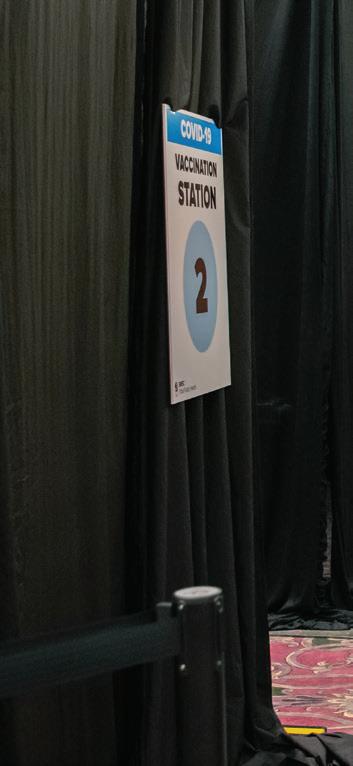
With the Food and Drug Administration’s (FDA) approval of a COVID-19 vaccine, the SMSC received its first batch of the vaccine in December 2020 and quickly began distributing them to Community Elders and high-risk individuals. The distribution expanded in the months that followed after the Community began to receive additional shipments. While Community Members waited for vaccination, they were encouraged to continue prioritizing their health and the health of those around them by practicing safe social distancing, wearing a mask, and staying at home when possible.
The process for vaccinating was regularly revised and updated as it evolved. To prevent the spread of the disease, the SMSC had to get creative with vaccine distribution. Drive-thru clinics, hosted by Mdewakanton Public Safety and Tribal Public Health, saw great success in reaching Community Members, employees, and members of the public on a large scale. A mobile unit also traveled near and far to distribute vaccines to other tribal nations and communities.
As new vaccines were approved by the US Food and Drug Administration and distributed, the SMSC worked to provide them at a rapid pace to keep up with new variants of the COVID-19 virus. To safely store the vaccines, the SMSC purchased an ultra-cold freezer, which the Tribal Public Health team kept at -70°C and monitored regularly to ensure appropriate storage of the tribe’s inventory. Appointments and pop-up clinics were eventually available to individuals of all ages and health conditions.
At the time of publication, more than 10,000 vaccines have been distributed by the SMSC.
Community families, employees, and team members can continue to receive regular vaccines at SMSC clinics and are encouraged to do so along with their flu shot annually. Doing so is one of the best defenses to help ensure a safe and healthy future.
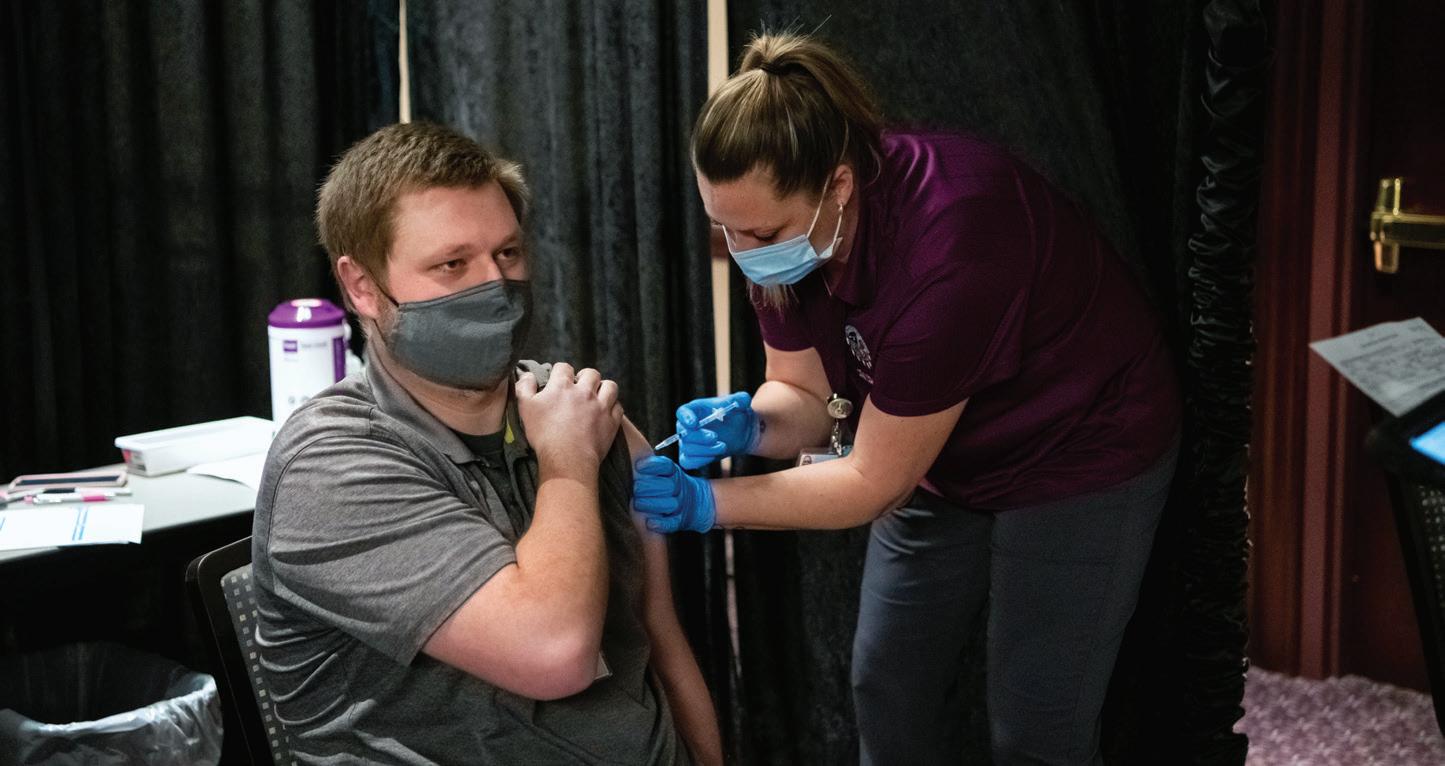
In addition to large-scale vaccination clinics, Tribal Public Health organized several drive-thru vaccination events for Community Members, employees, team members, and local residents.
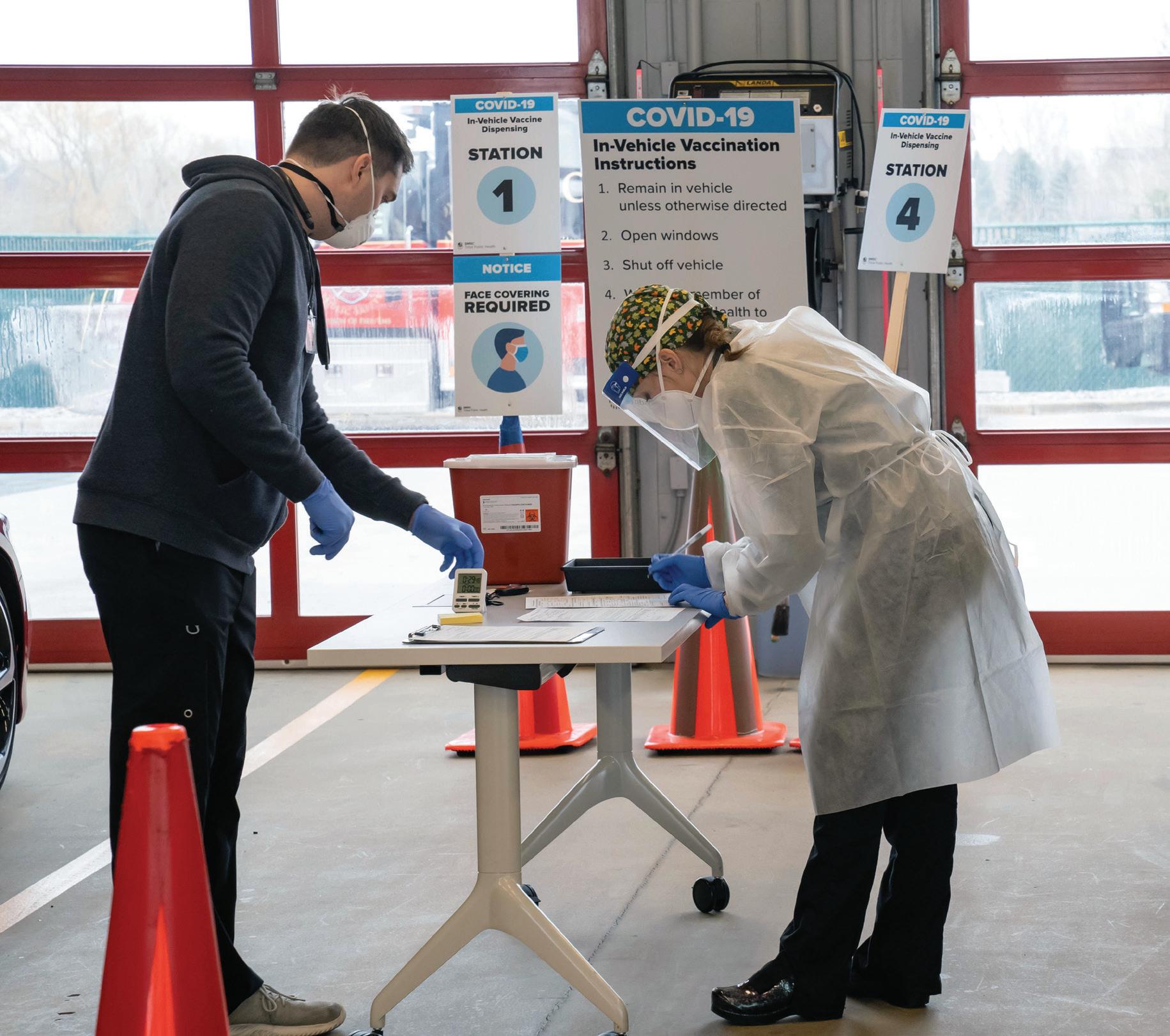
After the COVID-19 outbreak in 2020, the SMSC’s first and highest priority was to take measures to protect the health and safety of Community Members, Tribal Operations employees, Gaming Enterprise team members, guests, neighbors, and the public.
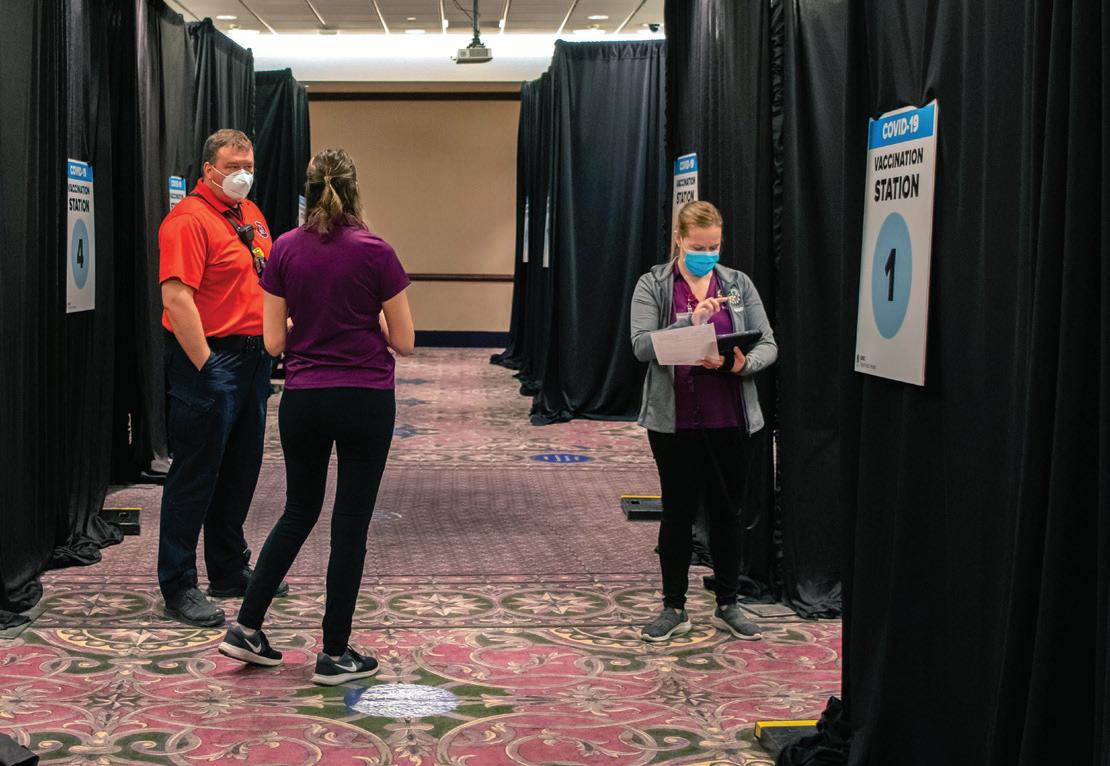
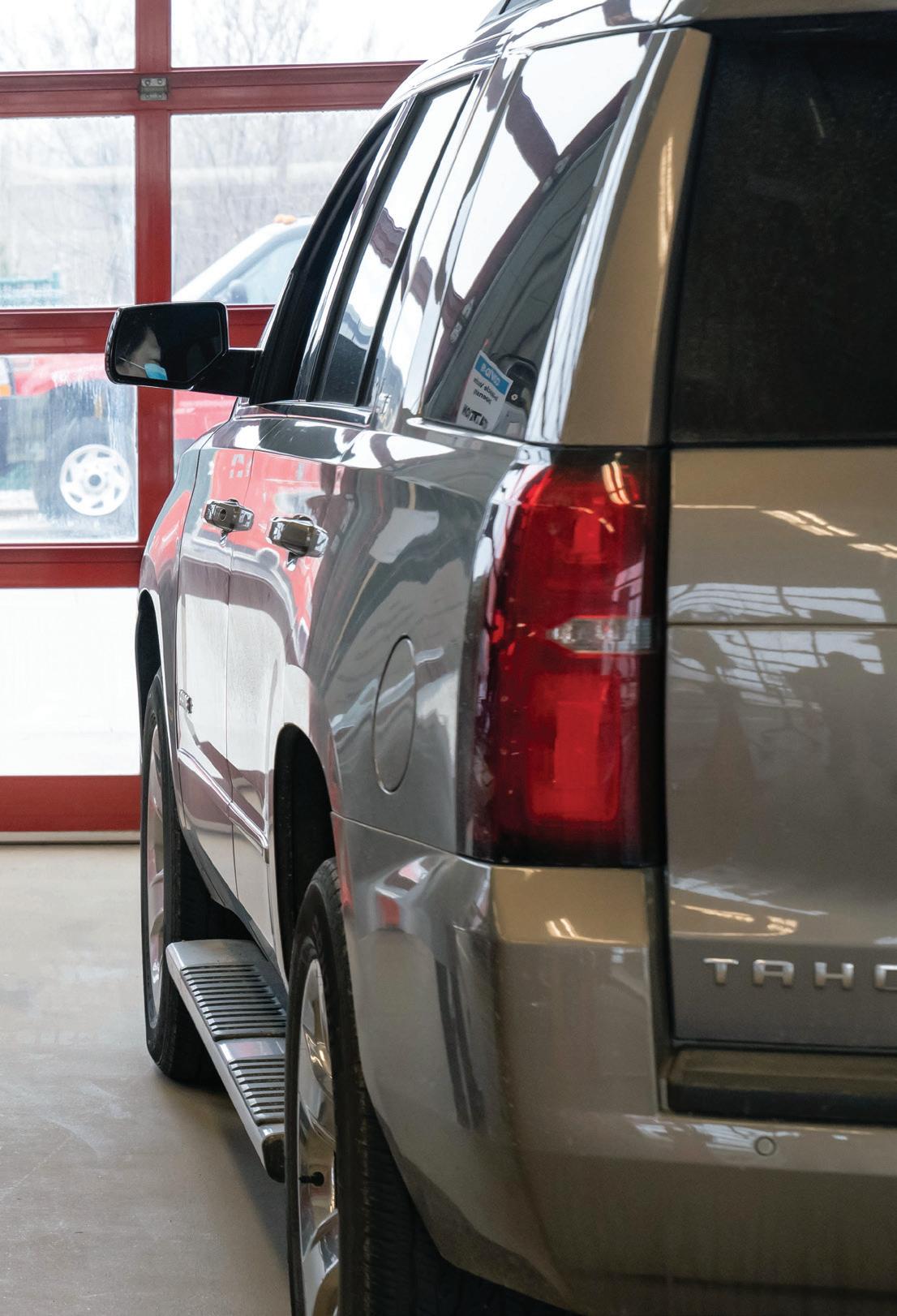
SMSC health care professionals, first responders, and Tribal Public Health staff worked tirelessly to provide care, guidance, and resources to all those who needed it—often at great personal risk to themselves. All staff members underwent daily health screenings with Tribal Public Health to determine whether it was safe for them to report to work for the day or whether they should quarantine at home and/or seek immediate care.
Testing for COVID-19 became available to Community Members, employees, and team members at SMSC clinics, and later at the SMSC Pharmacy. From 2020-2023, the SMSC Pharmacy alone dispensed more than 4,700 athome COVID-19 tests at no cost and more than 70 doses of Paxlovid, an at-home treatment for COVID-19.
At times, limited amounts of personal protection equipment were available around the world, and the SMSC was no exception to this obstacle. To help protect the Community, cloth face masks were sewn by a number of Community Members and were distributed for free.
As the tribe coped with the primary and secondary effects of COVID-19, many experienced various levels of distress. To mitigate the effects of the pandemic on mental health, the SMSC Health and Wellness Department continued to offer Community Members and their families free mental health services with ASPIRE and the SMSC Specialty Clinic. Virtual appointments and in-home visits were made available to those who needed to remain at home.
The COVID-19 pandemic created a number of challenges, many of which fell to health care workers and officials to
In partnership with the SMSC Health and Wellness Department, Community Members Cyndy Milda, Kimberly Thomas Bemrose, Allene Ross, and Ashley Towne created cloth face masks for Community Members, which were distributed at the General Council meeting in April 2020.
quickly navigate and solve. Through it all, however, they were able to keep countless people from getting sick and others from being hospitalized. It is important to recognize the dedication and sacrifices of health care professionals and to thank them for their services.


As was quickly identified after the outset of the COVID-19 pandemic, one of the most effective ways to reduce the spread of COVID-19 was—and continues to be—limiting closeproximity interactions with others. Because of this, strict social distancing measures were implemented and followed across the SMSC and its enterprises, starting in March 2020. These precautions required Community Members and others to get creative in order to stay connected with each other while prioritizing safety, including through virtual, outdoor, and distanced settings throughout the pandemic.
With the onset of COVID-19, the power and reach of digital platforms quickly came to the forefront as a means of staying connected and in the know with loved ones, colleagues, and the outside world. Online classes and other programs were scheduled for Community Members to attend, such as book club sessions, a virtual Wellness and Benefits Expo, digital art classes, and more. General Council meetings and other important gatherings were conducted with adequate social distancing measures in place or through a live video broadcast.
The pandemic quickly changed the way many people perform their work and SMSC team members and employees were no exception to this as many were instructed to begin transitioning to remote working environments in 2020. This allowed for staff to safely log in and work from home while limiting exposure to others. Today, some employees and team members still have the option to work in hybrid schedules, which allows for greater flexibility and a healthy work-life balance.
With widespread school closures across the country, online learning resources were made available to Community Youth as a way to continue, expand, or enhance their
education in a safe way as virtual classrooms became the norm. The Minnesota Department of Education shared a comprehensive list of approved grade-specific online options that Community Youth were encouraged to explore and Tribal Public Health offered resources to families when the time came for Community Youth to safely return to school.
As in-person activities were slowly able to return to the Community, precautions were implemented to keep everyone safe such as preregistration processes, maximum participant protocols, drive-thru event operations, regular health screenings, and more. In an effort to gather with one another safely, outdoor events and activities—both large and small— such as the annual Graduation Celebration and Youth Leadership Council outdoor movie nights—were planned whenever possible with social distancing measures in place. Being able to connect with one another was essential for the mental and emotional well-being of Community families and helped everyone navigate the challenging times together. From phone calls and social media to online group activities and video chats, the SMSC and its members, employees, and team members were able to help everyone stay connected and combat feelings of isolation during a time of great stress and worry.
“The resilience that Community Members have displayed through the pandemic has truly shown what this Community is capable of,” said Chairman Keith Anderson. “Thank you for your sacrifices over the last three years. They have not gone unnoticed and were instrumental in our success.”
As a sovereign nation, the SMSC closely monitored the COVID-19 pandemic and continually adjusted its operations, while consulting with the state of Minnesota and Scott County, and following guidance from the Centers for Disease Control and Prevention (CDC), World Health Organization (WHO), and Minnesota Department of Health about COVID-19. During the height of the pandemic, the SMSC Business Council, Tribal Public Health team, and other officials met daily to evaluate and plan any necessary operational changes within the Community.

Following the rapid onset and spread of COVID-19 in the spring of 2020, many precautions were implemented and difficult decisions were made to protect tribal members, employees, team members, and guests, including enterprise and department closures and limited hours of operations. During these unprecedented times, the SMSC also chose to postpone and even cancel the entire summer’s worth of concerts and Community programming. The tribe also made the very difficult decision to cancel the 2020 SMSC Wacipi—a choice that had never been on the table before.
While cancellations and closures certainly came as a disappointment to many, the SMSC was—and continues to be—committed to doing its part to protect the health and well-being of all those who live in, work for, or visit the Community. Lists of program and operation adjustments throughout the Community changed rapidly on a day-to-day basis, making continuous communication key.
As the summer of 2020 progressed, the SMSC continued to make its own sovereign decisions about reopening its enterprises and facilities. Tribal elected officials across the state met regularly to coordinate efforts, share best practices, and learn from each other.
As the Community worked diligently to reopen enterprises as quickly and efficiently as possible, it also continued to keep health and safety in mind. Phased approaches were used along with enhanced health and safety protocols such as mask mandates, temperature screenings, sanitation measures, and more to protect the well-being of employees, team members, and guests.
Though the SMSC had to make a lot of difficult decisions and close its doors at times during the pandemic, these decisions helped save lives and positioned the Community to better weather the storm.
Left: The SMSC Pharmacy transitioned to drive-thru only services during the height of the pandemic.

Center: Plastic glass shields were installed at many SMSC enterprises and departments to help protect staff and customers alike.
Right: Playworks enacted stringent sanitizing and cleaning protocols and discontinued many public-facing offerings to continue safely offering crucial child care services to Community families and employees.

Guided by the Dakota tradition of giving and the SMSC’s commitment to being a good neighbor, Community Members, employees, and team members rose together to help meet the needs of the surrounding communities following the onset of the COVID-19 pandemic and its aftermath.

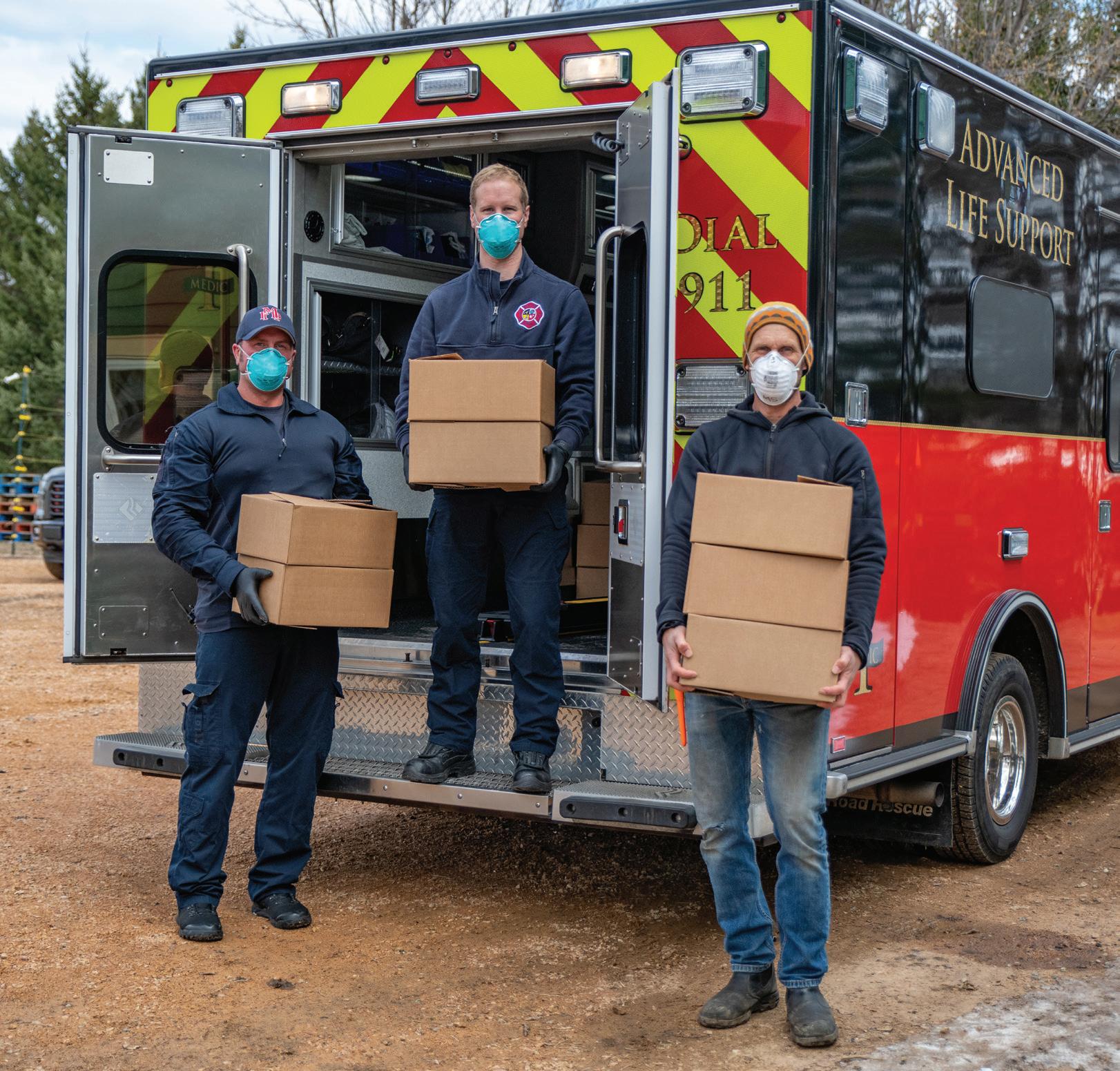
� In 2020, the SMSC partnered with Harvest Pack to provide healthy meals to food-insecure communities during the COVID-19 pandemic. Over the last four years, 116,904 meals were packed as part of the #SMSCgives program while the SMSC also donated $6,000 to Harvest Pack for funding in 2020. The CAP Agency helped distribute the packed meals to local communities in Scott, Carver, and Dakota counties. (Photo at bottom left.)
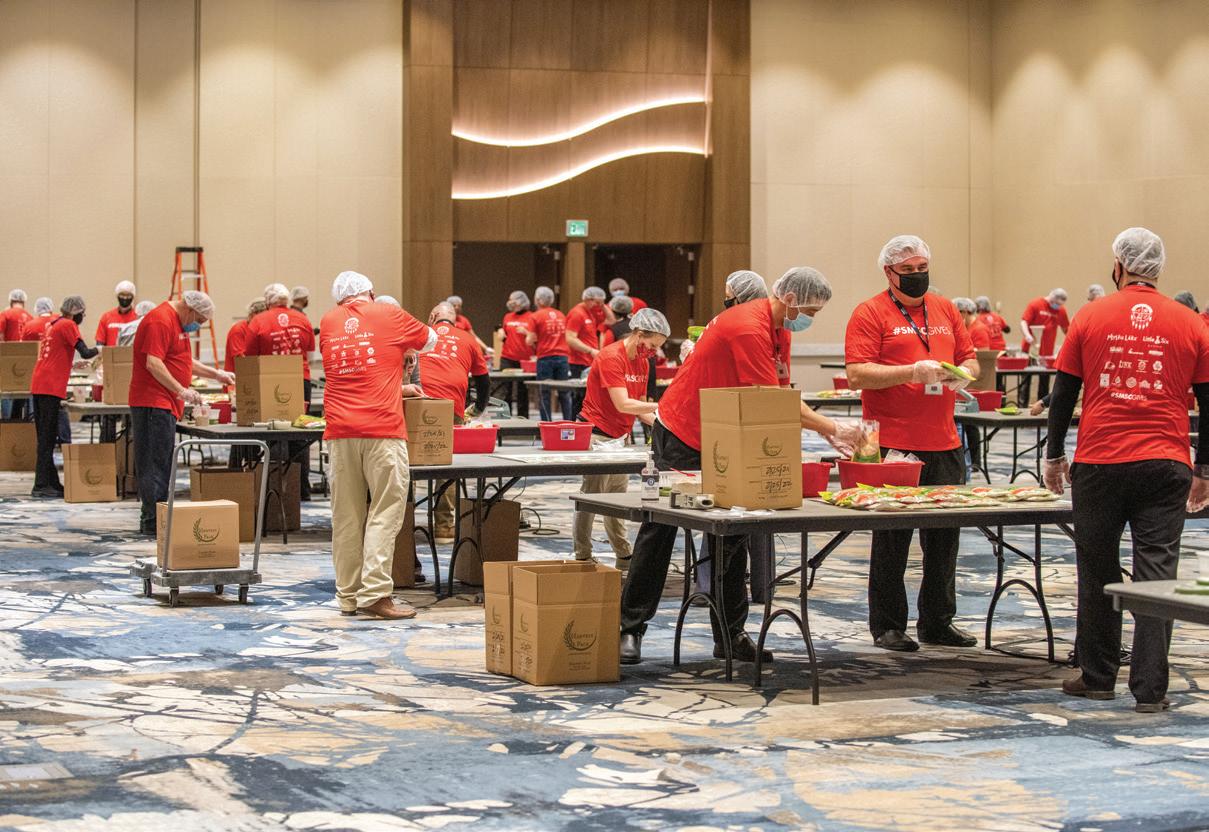
� In April 2020, Wozupi Tribal Gardens, the SMSC Health and Wellness Department, and Mdewakanton Public Safety loaded ambulances and delivered food packages to at-risk elders around the Community. This collaborative effort helped ensure that the Community’s most vulnerable Members had access to nutritious food, without having to expose themselves to the health risks posed by in-store shopping. (Photo at top left.)
� In partnership with the Scott County Health Department, the SMSC hosted free vaccination clinics for Community Members, employees, team members, Scott County Natives, and members of the general public, including events hosted at Mdewakanton Public Safety and Hoċokata Ti in 2021. (Photo at top middle.)
� The Scott County Health Department utilized the SMSC Mobile Unit as a traveling COVID-19 vaccination clinic during the 2021 Scott County Fair. The SMSC Mobile Unit also provided free testing and vaccinations at the 2021 SMSC Wacipi. (Photo at bottom right.)
� The SMSC partnered with the Community Action Partnership (CAP) Agency and Second Harvest Heartland to host several traveling farmers markets and food distribution events to provide free produce to local families in need during the pandemic. Through these events, hundreds of thousands of pounds of fresh produce were distributed to more than 2,500 families. (Photos at top right and bottom, second from right.)
� The SMSC has partnered with Memorial Blood Centers for multiple Community blood drives as the need for donated blood rose during the pandemic. Hundreds of lives have been saved as the result of these events over the last four years. (Photo at bottom, second from left.)


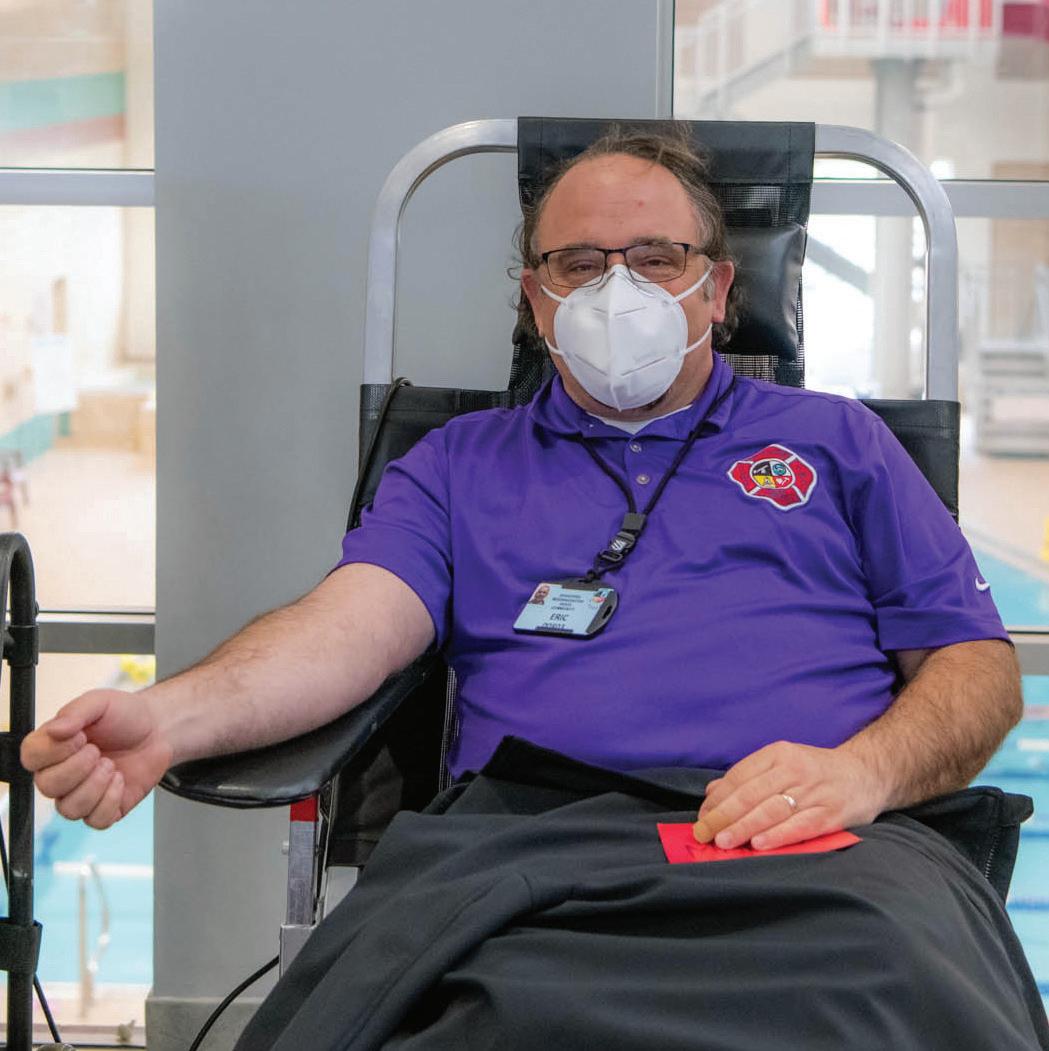
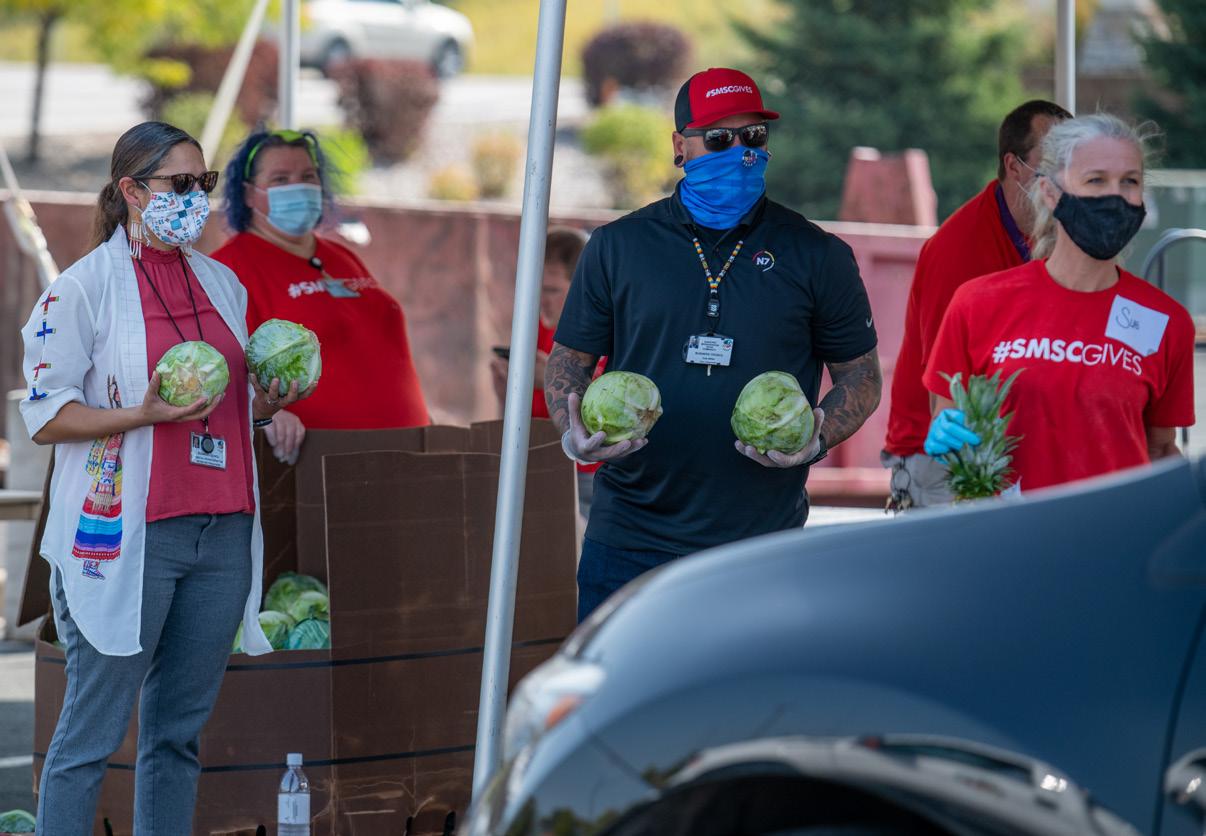


With a commitment to forward-thinking growth and development, the SMSC made significant strides in advancing the tribe’s foremost objectives and priorities through the collective efforts of the Business Council, General Council, Community Member work groups, and youth involvement. Taken together, these Community-led groups are building a brighter future for generations to come.
The last four years have seen successful growth and accomplishments throughout the SMSC as both Tribal Operations and the Gaming Enterprise earned recognition with various awards and milestones.
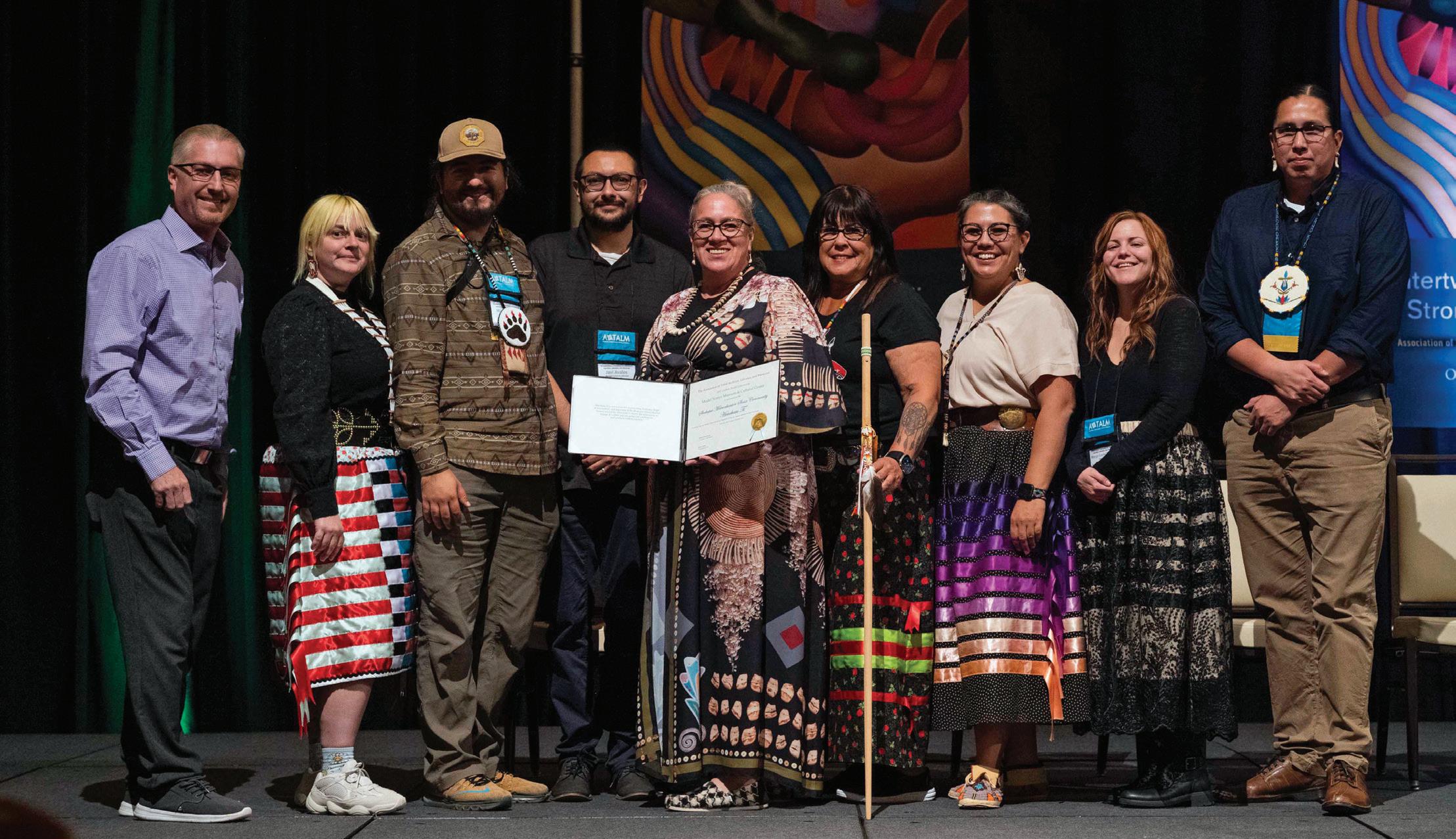
In 2022, the Gaming Enterprise celebrated a pair of significant milestones, with Mystic Lake Casino Hotel celebrating its 30th anniversary after opening its doors in 1992 and Little Six Casino marking its 40th anniversary, having opened as Little Six Bingo and brought high-stakes bingo to the state of Minnesota in 1982. To commemorate the anniversaries, the SMSC hosted a summer of celebrations and giveaways.
Since opening the two venues, the SMSC has built a legacy of constant and diverse growth with a number of enterprises
— Community Member and Director of Hoċokata Ti Andy Vig
adding milestones over the last four years. Playworks celebrated its 25th anniversary in 2020 while Mdewakanton Public Safety turned 20 in 2022.

The [ATALM] award is a testament to the commitment the Community has made to having a gathering space that allows us to preserve our culture and tell our story. It is a great honor for the SMSC to receive this award.”Staff from Hoċokata Ti and members of the Culture and History Preservation Work Group accept the SMSC’s ATALM Top 10 Native Museum and Cultural Center award in 2022.
� Nominated by the University of Minnesota, the SMSC was named a 2020 National Philanthropy Day honoree by the Association of Fundraising Professionals (AFP) Minnesota Chapter. The recognition highlights governments, nonprofits, and individuals from across Minnesota whose generosity and service have made a remarkable impact on their community.
� In 2020, the American Indian Science and Engineering Society (AISES) highlighted the SMSC with its Service Award, recognizing the Community’s support of the AISES mission.

� NativeGreen, the SMSC’s efforts across the Gaming Enterprise and Tribal Operations to reduce environmental impacts and identify operational efficiencies, was honored in 2020 with the Large-Scale Sustainability Impact Award from the Environmental Initiative.
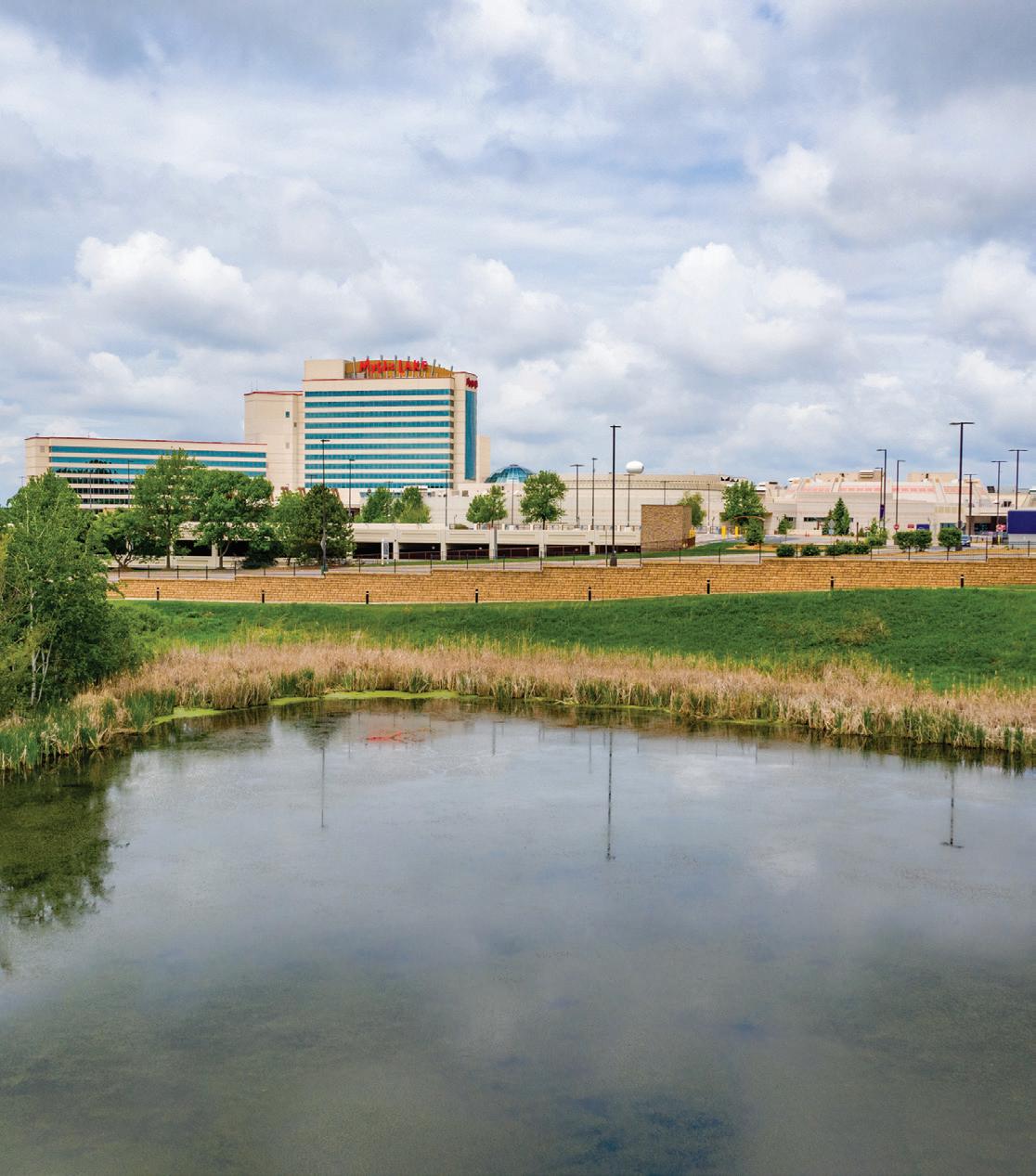

� In 2020, Hoċokata Ti was selected by the Association of Tribal Archives, Libraries, and Museums (ATALM) as a Top 10 Native Museum and Cultural Center. Due to a two-year pandemic delay, Hoċokata Ti staff and members of the Culture and History Preservation Work Group were able to accept the award in 2022.
� The SMSC was recognized with a Community Impact Award at the American Heart Association’s Twin Cities Heart Ball in November 2021. The accolade was in recognition of the tribe’s efforts both nationally and locally to improve Indigenous nutrition through the Seeds of Native Health campaign.
� In 2021, eight tribes of the Seven Council Fires of the Great Sioux Nation, including the SMSC, received high honors from Harvard’s Honoring Nations Awards for preserving Pe’ Sla. Since purchasing more than 2,000 acres of Pe’ Sla in the Blake Hills in 2012, this intertribal collaboration has led to a restoration of native buffalo, grasses, flora, and fauna as well as land preservation for traditional ceremonies and cultural programming in perpetuity. Harvard’s prestigious
national awards program celebrates outstanding examples of tribal governance.
� The Meadows at Mystic Lake was voted one of the Star Tribune’s “Minnesota’s Best” golf courses in 2022 and 2023.
� In 2023, the JW Marriott Minneapolis Mall of America was named the best hotel in Minnesota and one of the top venues in the U.S., by U.S. News & World Report. It was the second straight year of recognition for the SMSC-owned hotel.
� The SMSC became the first tribal government to have an exhibit at the Minnesota State Fair since the fair’s inception more than 160 years ago with an interactive, walk-through display in the shape of a tipi in 2021 and 2022. In 2022, the exhibit was honored with a Best Award by the Minnesota State Fair and was recognized for providing exceptional and efficient customer service, an outstanding experience for fair guests, an amazing visual presentation and positive image, and knowledgeable staff that were courteous and professional.


Since 2013, the SMSC’s Community Member work groups have taken a proactive approach to guiding the tribe’s objectives and priorities. Today, there are eight work groups, and all are unified in their broader goals of strengthening the SMSC for generations to come.
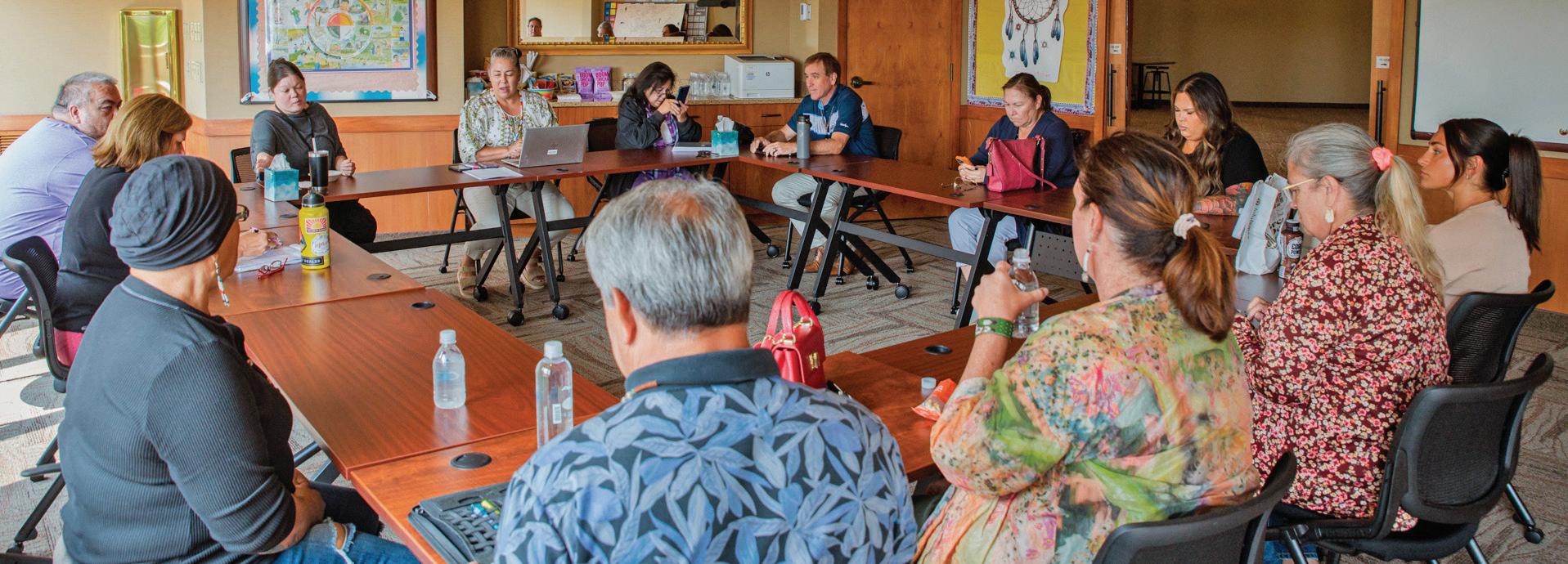
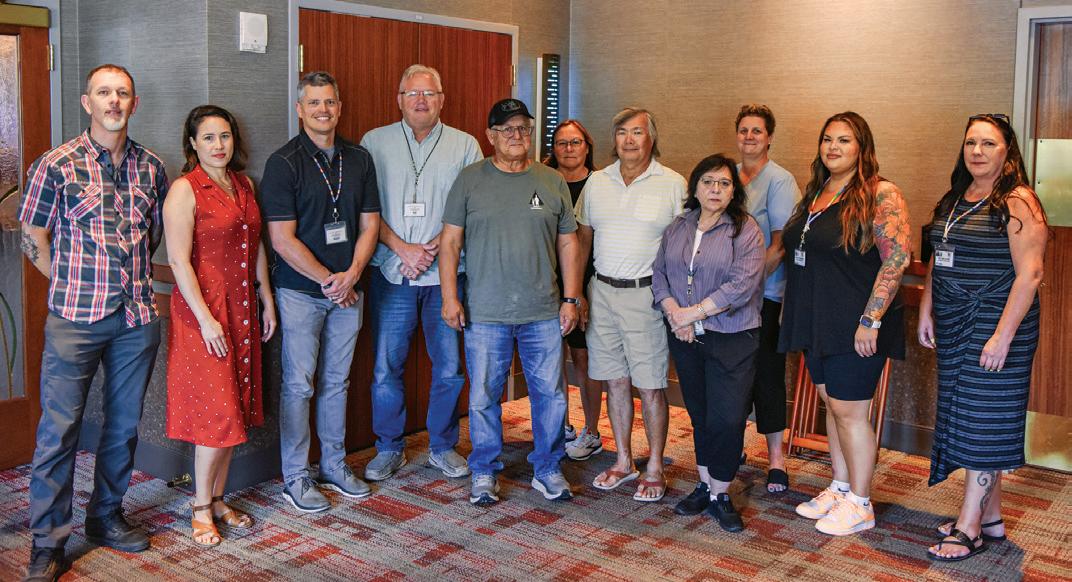
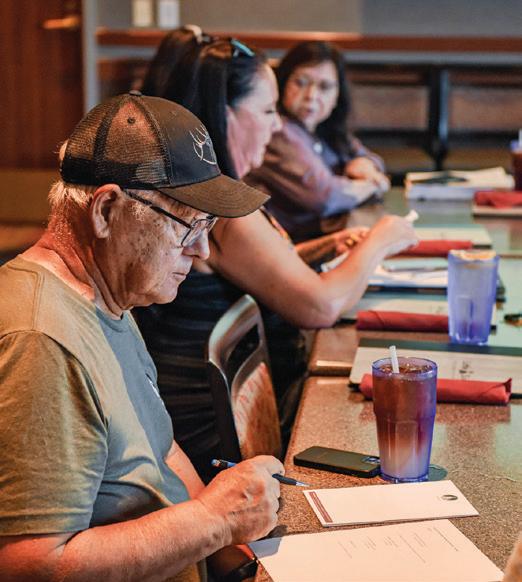
From 2020-2023, the work groups have made several tangible improvements to the lives of Community Members, as well as the tribe’s lands, health, wellness, and safety initiatives, infrastructure, natural resources, and Dakota culture. Below is a summary of the key successes and highlights over the last four years from each group.
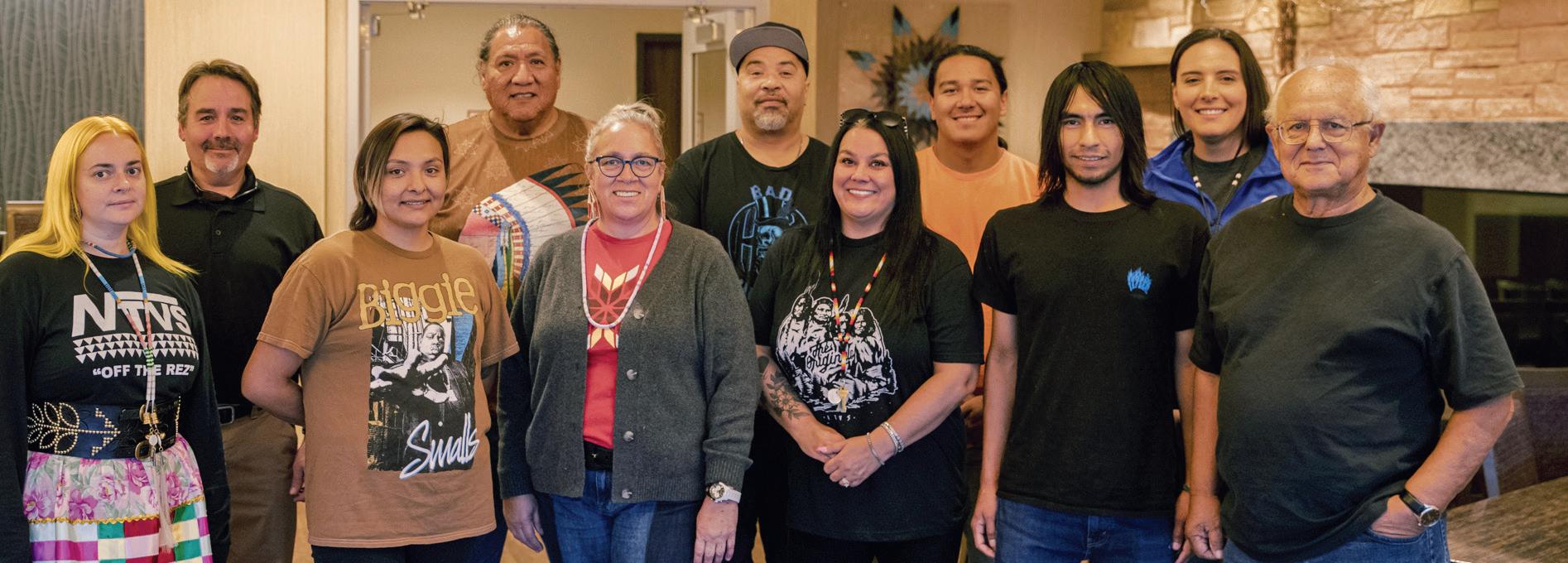
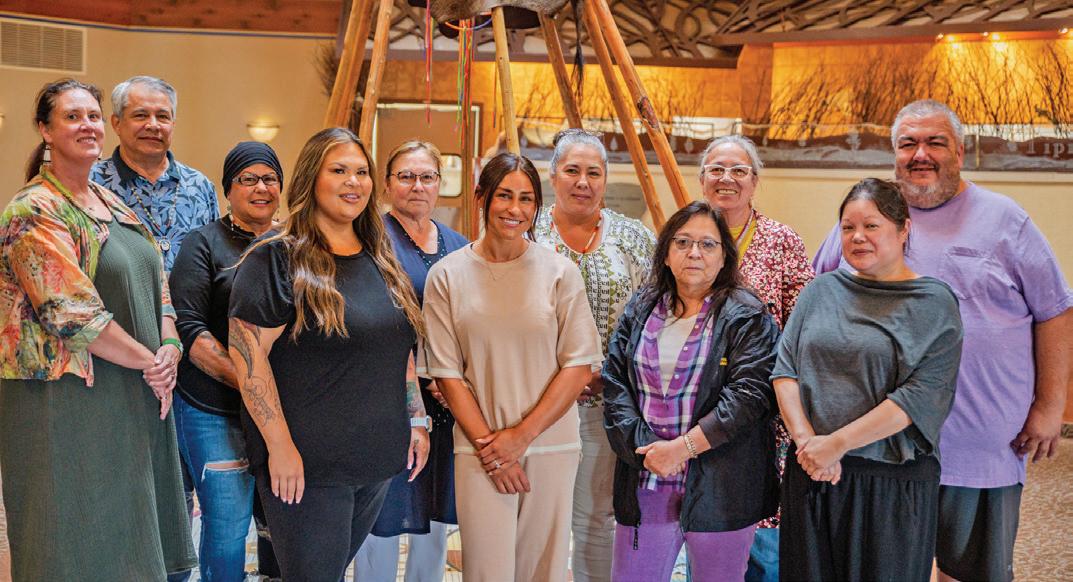
� Cannabis Ordinance – drafted a comprehensive legislation that establishes a regulatory structure for cannabis activities and creates licensing procedures and guidelines for the retail sale of cannabis and lower potency hemp edibles.
� Conservation, Fish, and Game Ordinance – drafted additional amendments to further protect the Community’s natural resources in consultation with the Natural Resources and Infrastructure Work Group.
� Worker Compensation Ordinance – reviewed proposed revisions to keep up with today’s changing workforce.
� Tort Claims Ordinance – reviewed proposed revisions that better defend the Community from Tort Claims.
� Hoċokata Ti continues to introduce, provide, and expand a wide variety of cultural programming for Community Members and educational programming for school field trips and museum visitors.
� Organized several events for Community Members and Community Youth including summer and winter culture camps, Young Native Pride, and other important cultural narratives.
� Collaborates with local partners on the Shakopee Riverfront Cultural Trail project.
� Spearheaded sub-work group called the Psin (Wild Rice) Work Group.
� Approved loan of objects to the Scott County Historical Society for upcoming ‘Women Work’ exhibit.
� Developed a new three-year strategic plan for the Education Department.
� Contributed to Tribal Civics Course.
� Increased youth engagement at inter- and intra-tribal events, conferences, and activities.
� Created a summer “lunch and learn” program for Community Youth to learn life skills specifically pertaining to their role as Community Members.
� Expanded the Community Youth work program to be offered year-round.
� Reviewed various economic development and investment opportunities.
� Made a recommendation to the Business Council to increase capacity for new enterprise evaluation through the creation of a new Economic Development leadership role/team.
� Provided input and guidance to influence the development of additional storage rental capacity for Community Member and public use.
� Provided feedback on the amendment of the SMSC Investment Policy to include new asset classes for additional diversification.
� Presented concepts and discussed ideas for new enterprises or economic activity at the SMSC (e.g., pay-for electric vehicle chargers, hemp production, etc.).
� Evaluated a partnership with the city of Shakopee regarding their efforts to develop an entrepreneurial hub in the city.
� Provided continuous support to the planning of various SMSC events, including Honoring Mothers, Honoring Fathers, and the SMSC’s Night to Unite event.
� Reviewed various safety initiatives including the Residential Camera Project and ATV safety classes.
� Developed and implemented public safety and health initiatives.
� Attended SCALE Joint Training facility tour and held joint Culture and History Preservation and Natural Resources and Infrastructure Work Group meetings.
� Developed concepts and recommended final park improvement designs for Inyan Ceyaka Otonwe, Tinta Otunwe, Big Eagles, Norman Crooks, West Woodland Trail, and East Village Parks.
� Reviewed new property and existing SMSC lands and recommended land uses.
� Recommended updates in 2020 and 2023 to the Conservation, Fish, and Game Ordinance.
� Participated in development and recommendations for Sustainability Plan.
� Reviewed and recommended Capital Infrastructure Improvements for FY21, 22, 23 and 24 budgets.
� Reviewed and recommended O’Dowd Lake property use and improvements.
� Participated in creation of Wild Rice Sub Work Group.
� Participated in and recommended improvements for SMSC Comprehensive Land Use and Facilities Plan update.
� In November 2021, the Pte (Bison) Work Group was created to reintroduce Pte relatives to SMSC tribal lands.
� Established the Pteoptaye (bison herd) program which incorporated Dakota language and values.
� Researched and visited more than eight different tribal, state, and private bison herd operations to successfully bring Pte to SMSC tribal lands.
� Helped with Pte arrival announcement for Community Members, local governments, and local neighborhoods.
� Established Pteoptaye Incident Response Plan, ensuring that proper planning and resources are available for the safety of the Pte.
� Established guidelines that help determine the selection method for tribal donations.
� Made recommendations to the Business Council on donation and grant requests.
� Helped develop and launch a Community Member-led outreach program called Dakota Kinship.
As the governing body of the SMSC, the General Council takes an active role in tribal decisions related to the passage of laws, economic development, partnerships, charitable giving, and more. Comprised of voting members of the SMSC who are 18 years of age and older, the General Council approves and directs the SMSC’s decisions, priorities, initiatives, and objectives—shaping the future of their tribe for generations to come. At right is a timeline of the General Council’s key accomplishments over the last four years.
2020
January: Authorized an economic development loan with the Red Lake Band of Chippewa Indians.

March: Approved seventh amendment to the Community Investment Policy statement and guidelines; authorized purchase of Malkerson Property; authorized entering into attorney contracts; authorized an increase to the number of Tribal Conservation Officers; passed a temporary budget and spending plan to offset some of the economic burden posed to SMSC enterprises by the public health crisis; and approved the ability for the Business Council to use a loan as a tool to ensure the financial stability of the tribe while the Gaming Enterprise and other SMSC enterprises are closed.
May: Approved interpretation and utilization of 24 Hour Voting Procedure Ordinance.
July: Approved second temporary expense budget, appropriating funds from the Community Savings Portfolio, delegating authority to Business Council to expend appropriated funds, and authorizing Business Council to secure a line of credit or borrow funds; and an amendment to the 24 Hour Voting Procedure Ordinance.
September: Approved the fiscal year 2021 SMSC Gaming Enterprise budget and business plan and the fiscal year 2021 SMSC Tribal Operations budget and authorized changes to Supplemental Disbursement Policy.
November: Approved amendment to authorization for Verizon Mono Pole project and lease and approved amendment to the authorization to purchase the Malkerson Property.
March: Passed amendments to the Conservation, Fish, and Game Ordinance.
May: Authorized funding to purchase the Bischoff property and amendment to the authorization to waive sovereign immunity for the WorldPay agreement.
September: Approved the 2022 SMSC Gaming Enterprise budget and business plan and the fiscal year 2022 SMSC Tribal Operations budget and authorized purchase of the Vig property.
November: Authorized to increase the number of Tribal Conservation Officers.
March: Authorized to restate authority and review processes related to electronic ballot tabulation machines and authorized to reappropriate expenditure for MniSota Dakota, LLC.
May: Approved funding for the Mystic Lake Casino Hotel HVAC project, authorization to negotiate and enter into a tribal-state compact for sports betting, and authorization of purchase of the Theis properties and funding.
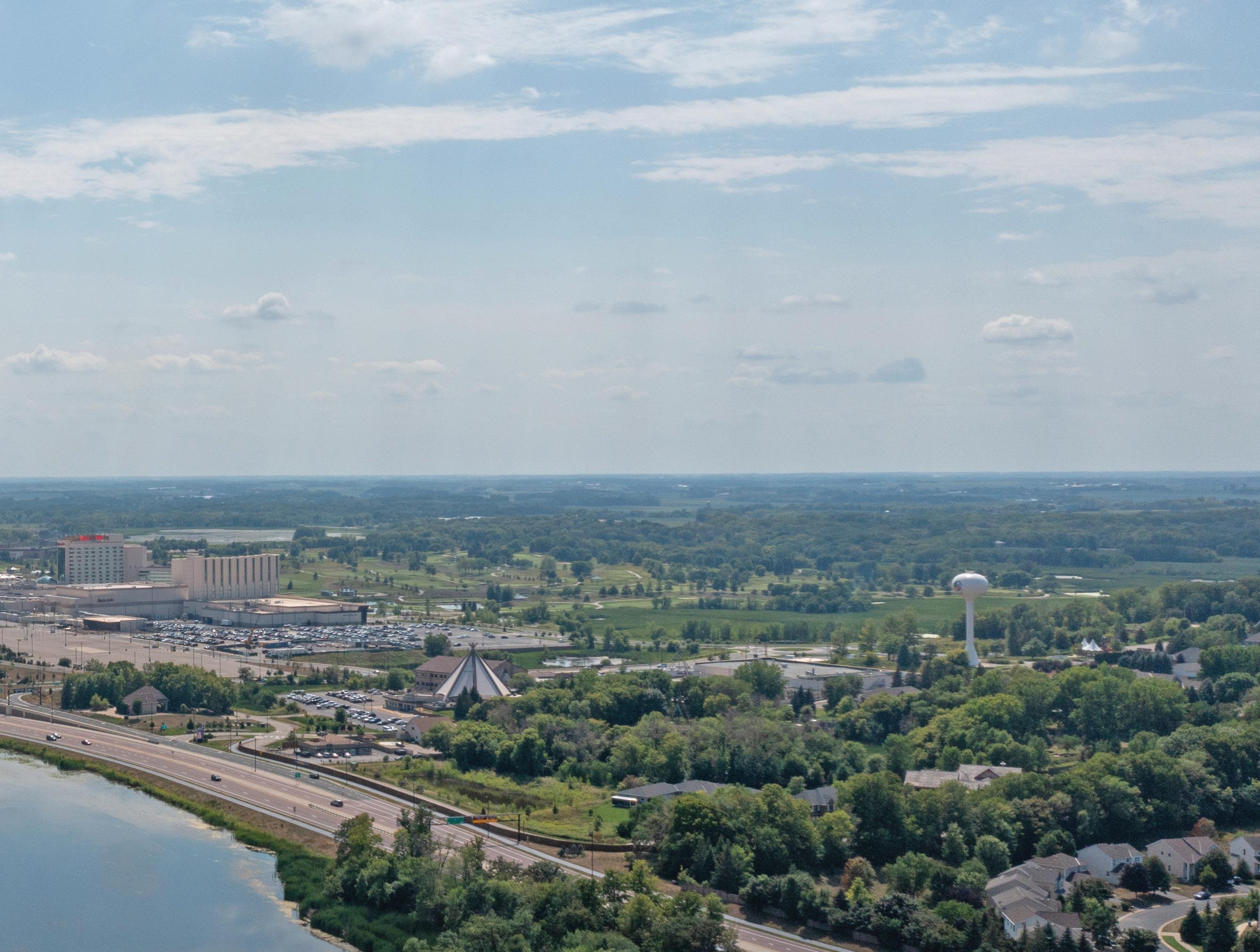
September: Approved fiscal year 2023 SMSC Gaming Enterprise budget and business plan and the fiscal year 2023 SMSC Tribal Operations budget and approved Crown Castle Project and lease extension.
November: Approved, amended, and restated Conservation Ordinance.
March: Authorized additional investment in Niron Magnetics, approved eighth amendment to Community Investment Policy statement and guidelines, approved SMSC Storage Facility Project on Dockendorf Parcel and project development funding, authorized the legalization and regulation of cannabis within the SMSC, and voted to cease using COVID-related voting procedures for General Council meetings.
May: Approved Great Outdoors Leasing Project under Business Leasing Ordinance.
September: Approved fiscal year 2024 SMSC Gaming Enterprise budget and business plan and the fiscal year 2024 SMSC Tribal Operations budget, authorization to negotiate and enter into Tribal-State Compact for Class III Table Games, and enactment of Cannabis Ordinance and approval of limited cannabis operations.


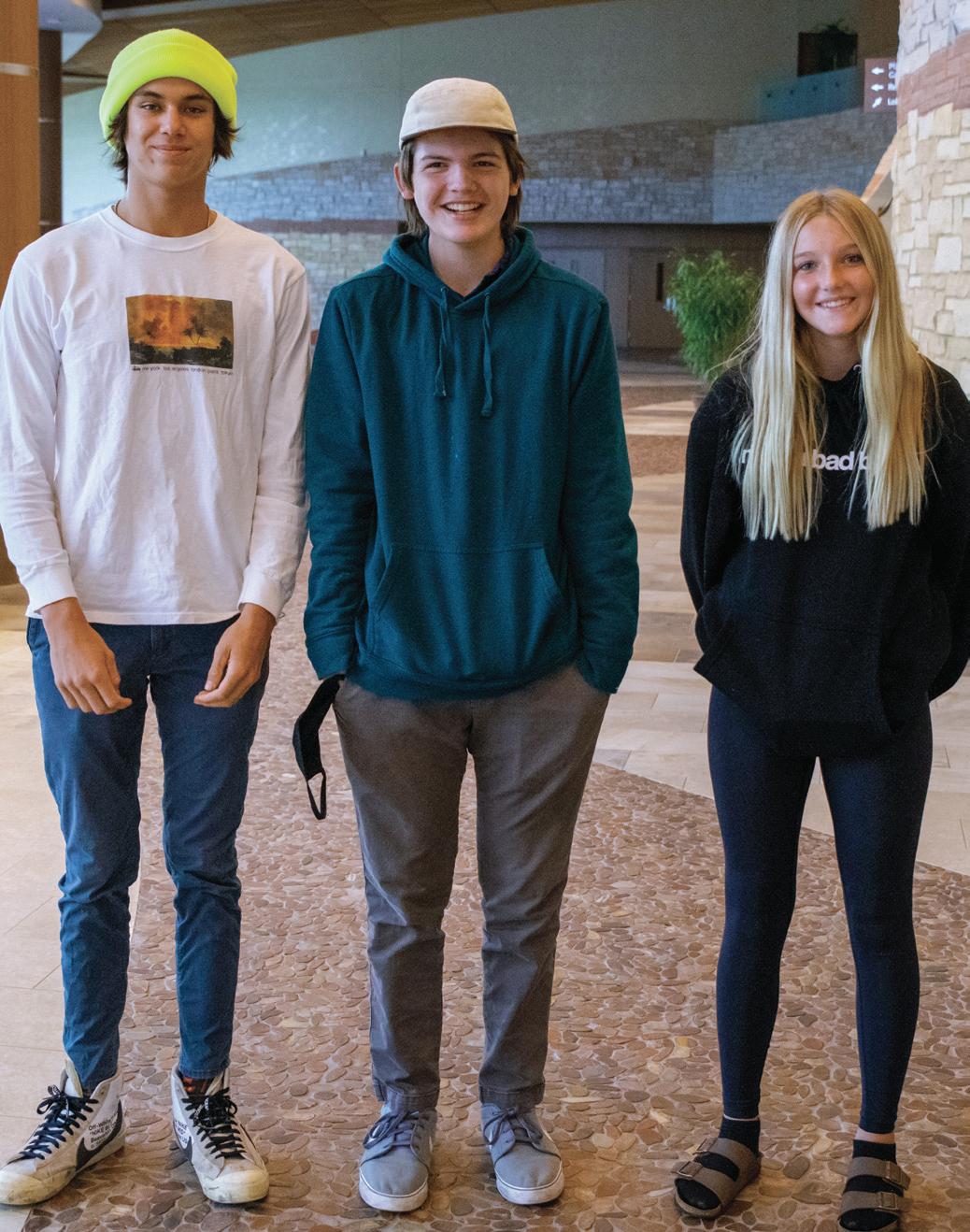
Created by the SMSC General Council in 2013, the Youth Leadership Council (YLC) promotes individual development, leadership, citizenship, and empowerment for Community Youth through peer mentorship, as well as Community building and involvement.

Over the last four years, the YLC has continuously engaged the Community by planning and attending events, hosting fundraisers, and serving as role models for Community Youth. The group has raised funds and awareness for Native causes through YLC-led initiatives like salsa and bake sales while also providing youth-centered programming such as film screenings, video game competitions, intertribal basketball tournaments, and the annual Youth Night event.
In addition to youth-focused programming for the Community and visiting Native tribes, such as film screenings, video game tournaments, and other exciting activities, the YLC focused attention on promoting personal development with a twoday leadership camp in July 2021 that included a culturally based equine support experience offered by Community Member Mercedes Van Cleve and her nonprofit organization, Chi Maingan’s Seventh Generation.
Youth Leadership Council’s Mission Statement: Striving to create a better Community by embracing our seven Dakota values, supporting one another in our educational endeavors, challenging each other, and encouraging responsible behavior so that we can be positive role models for future generations.



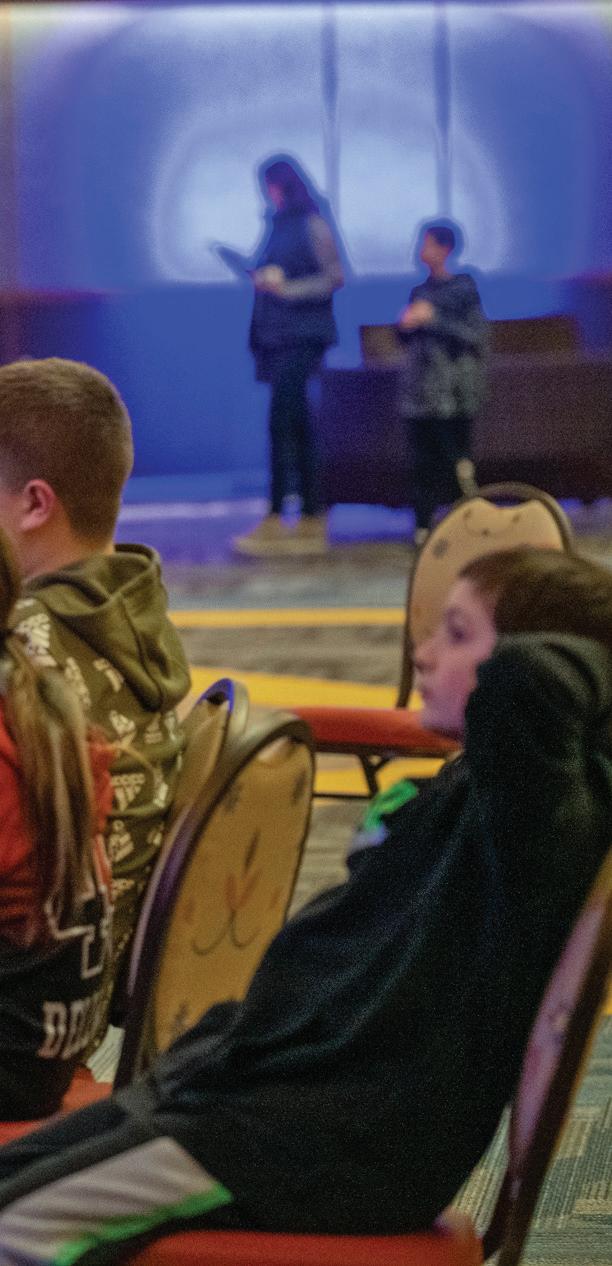
The preservation of Mdewakanton Dakota history, culture, and language has long ranked as one of the SMSC’s top priorities. Through extensive community programming, educational classes, public events, and strategic initiatives, the tribe tallied a number of noteworthy accomplishments in the last four years aimed at promoting greater cultural engagement within the Community, while helping advance better understanding of the Mdewakanton people among the general public.
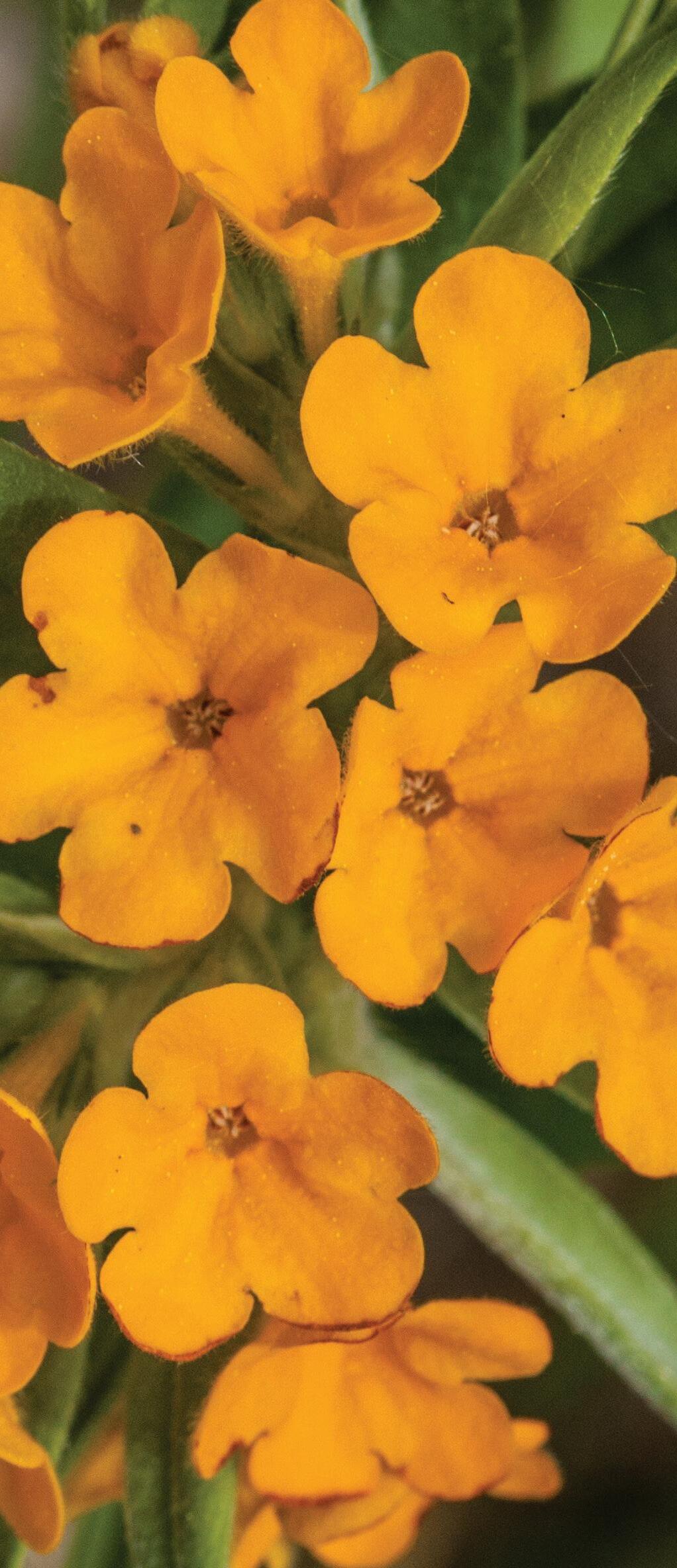

When the SMSC opened Hoċokata Ti in July 2019, the stated mission was to have a place that preserved and encouraged Mdewakanton Dakota culture for the Community. Additionally, it was designed with the intent to advance the SMSC’s mission of helping the greater community understand the history, lifeways, and language of the Mdewakanton Dakota people. Opening just months before the COVID-19 pandemic, Hoċokata Ti quickly became an important place to gather for the Community and so much more.
For the first time, the SMSC had a space large enough to comfortably hold Community Members for large events and gatherings. This became especially important during the pandemic as the building became a central hub of activity. Community Members were able to meet in person—while practicing social distancing—in the Place of Gathering and other rooms throughout the building to keep the tribe’s operations moving forward. It also enabled Community Members to safely stay connected with each other through smaller activities and cultural workshops. Emerging from the pandemic, Hoċokata Ti now hosts hundreds of Community events and welcomes thousands of visitors each year.
The success of Hoċokata Ti can be directly attributed to the dozens of Community Members who developed the building and award-winning exhibit, as well as those who have worked at the cultural center and shared their passion for sustaining Dakota culture. With Hoċokata Ti’s mission in mind, Community Members have led and/or contributed to every team since the center’s opening, including building operations, cultural programming, collections, language, public outreach, the gift shop, and exhibit tours.
Hoċokata Ti provides plenty of engaging opportunities for Community Youth to connect with each other and Dakota culture. From movie nights to Dakota language lessons to
It didn’t take long for Hoċokata Ti to start earning accolades after the building opened in 2019. It was widely acclaimed for its unique design, detailed exhibit, and as a model cultural center.
� The American Council of Engineering Companies of Minnesota—2020 Honor Award
� The Minnesota Concrete and Masonry Contractors Association—2020 Honor Award for Excellence in Concrete Design and Construction
� American Association for State and Local History—2020 Award of Excellence for the Mdewakanton: Dwellers of the Spirit Lake public exhibit
� Association of Tribal Archives, Libraries, and Museums—2020 Award, Top 10 Model Native Museum

� Institute of Museum and Library Services— 2024 National Medal Award nomination
extensive cultural programming, the last four years offered expanded opportunities for youth of all ages to enjoy each other’s company while engaging with their culture.
Biannual culture camps were among the most widely popular and well-attended youth events. The Waniyetu Culture Camp, which Hoċokata Ti hosted each February, focused on winter activities, including playing traditional games, learning how to track animals in the snow, maple sugaring, and other
outdoor activities. Its summer counterpart—Mdoketu Culture Camp—also featured traditional games, plus nature walks, archery, canoeing, and other fun outdoor activities over the course of several days each June. Both camps also featured plenty of indoor activities that included art projects, cooking classes, and much more.
Several teams from around the SMSC contributed directly to the success of the culture camps, including Hoċokata Ti staff, the Land and Natural Resources Department, and the Education Department.
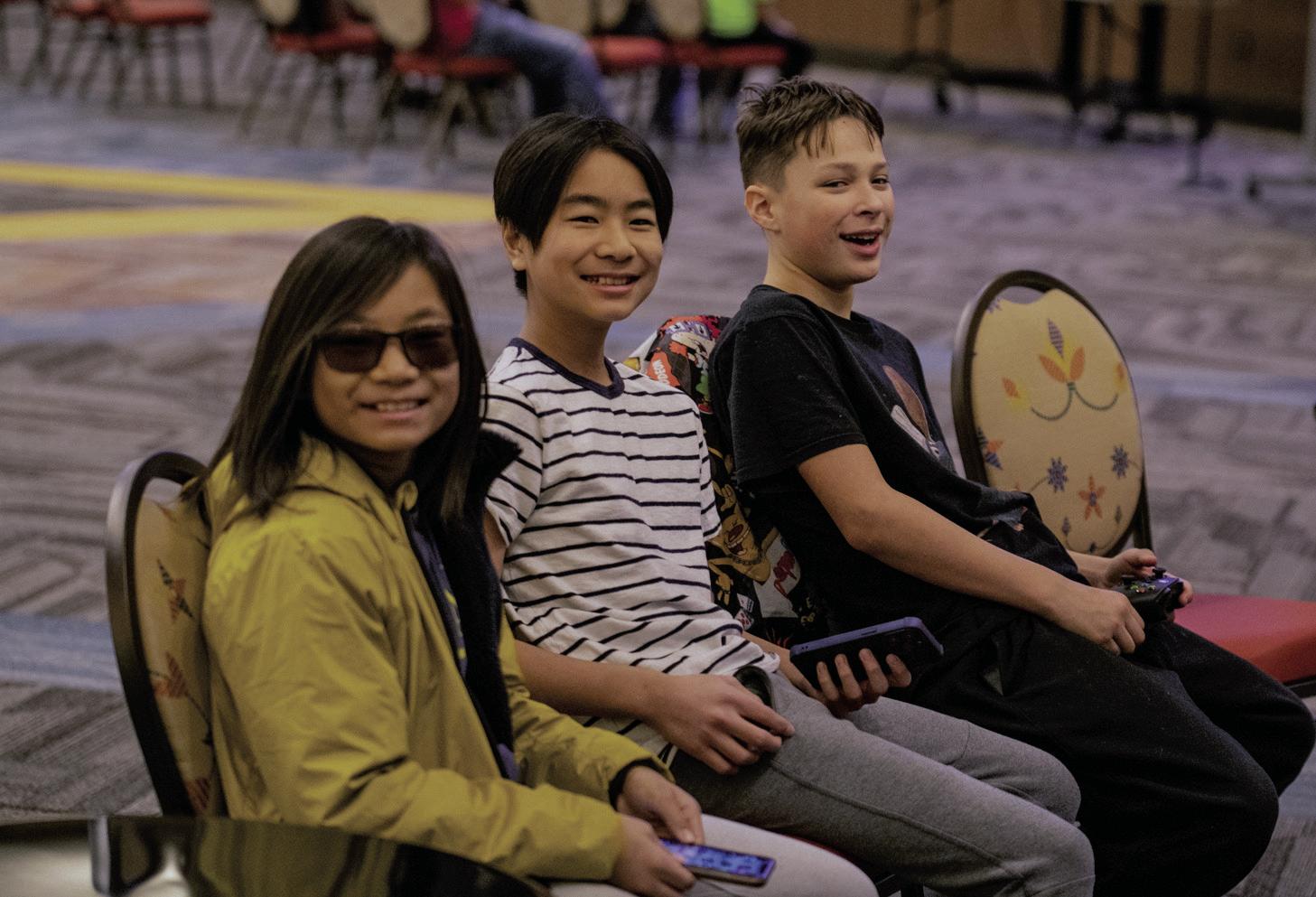
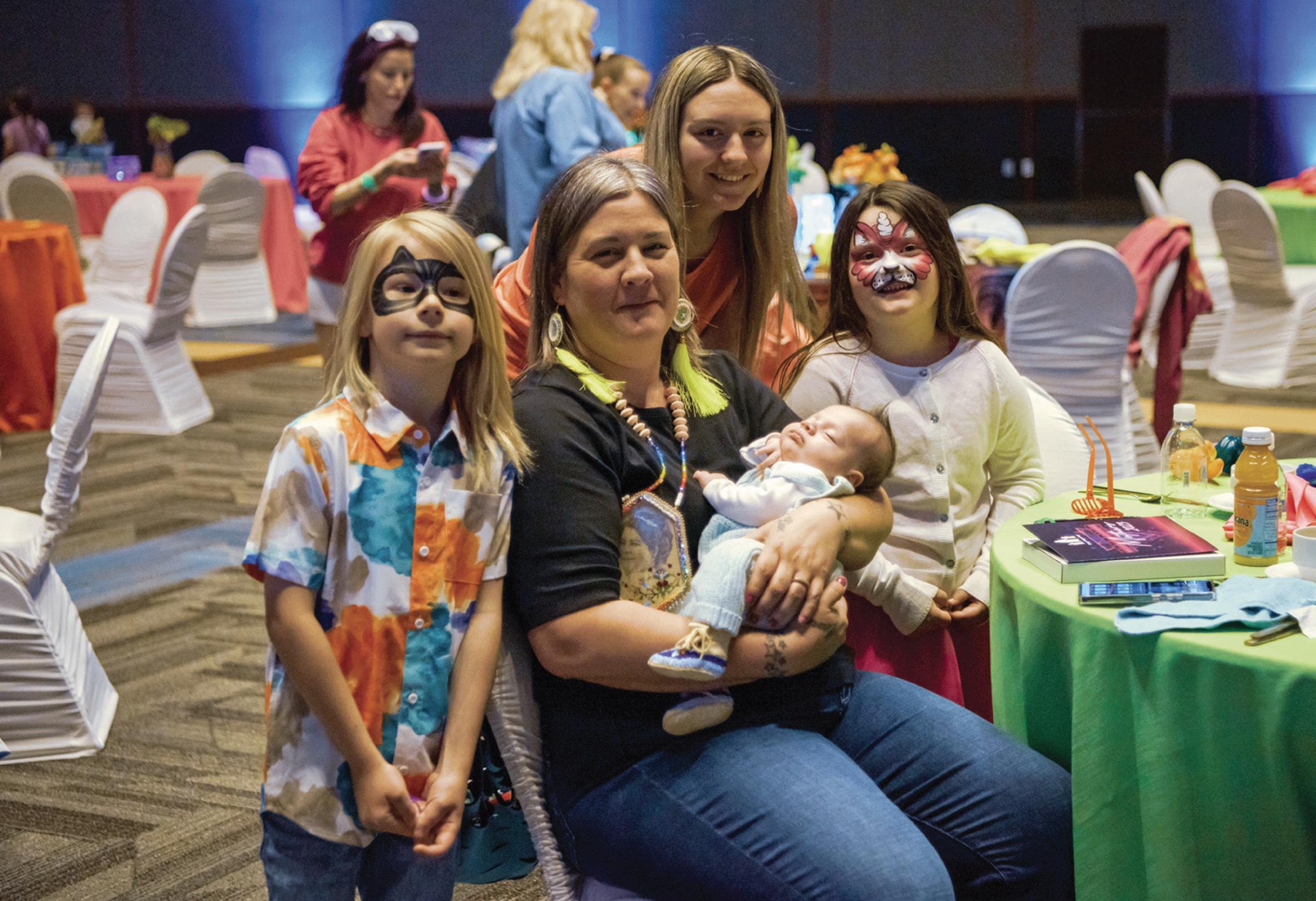
For Community Members, Hoċokata Ti has continued to sustain the SMSC’s story as Mdewakanton Dakota people through cultural programming. Regardless of the season, almost every day of the week offers something for Community Members to enjoy, whether it’s a workshop led by a Dakota artist, a language class taught by the Dakota Iapi Típi, a craft activity led by a Community Member, or an educational event hosted by a department from the SMSC. The Hoċokata Ti parking lot has also been utilized for larger Community events, including Night to Unite and the popular Trunk or Treat party which takes place annually around Halloween.
The SMSC worked for decades to plan and create a building dedicated to cultural preservation. The extensive cultural programming that has been developed since 2019 and the engagement within the Community has brought the vision to life and will help sustain Mdewakanton Dakota culture for generations to come.
Hoċokata Ti has a designated space solely for Dakota language learning. The Dakota Iapi Típi team works on a daily basis to secure the future of the Dakota language for generations to come by offering a variety of classes and leading other language-based programs.
Weekly language table classes have helped Community Members strengthen their Dakota language knowledge, and monthly family nights have introduced the language to new speakers in a more casual setting. These efforts have led to a greater number of Dakota language speakers within the
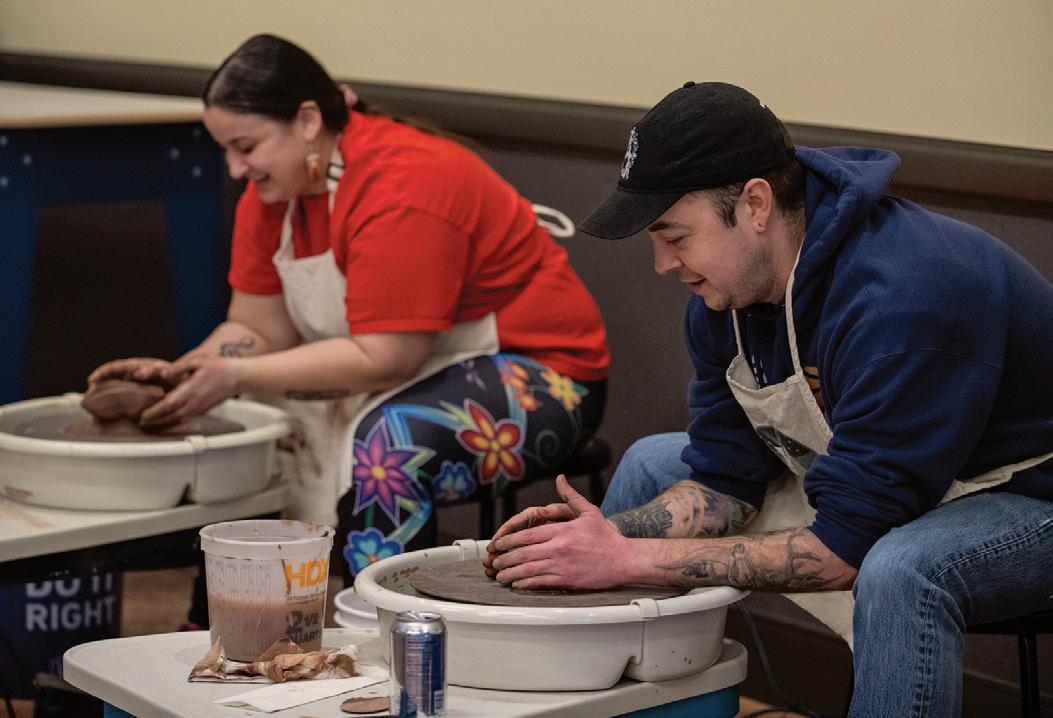
Community and brought a renewed sense of energy to the tribe’s ongoing language revitalization efforts.
As part of this determination to encourage the Dakota language, the SMSC hosted its first-ever language bowl in May 2023 at Hoċokata Ti. Teams from the Upper Midwest and Canada came to the Place of Gathering to showcase their Dakota language knowledge during a fun day of competition. The event was a big success with 27 teams from over a dozen tribes competing in the event, including representation from nine Dakota tribes.

In addition to its tribal member programming, the building has become an important tool that is helping to advance the understanding of the Mdewakanton Dakota people for the general public.


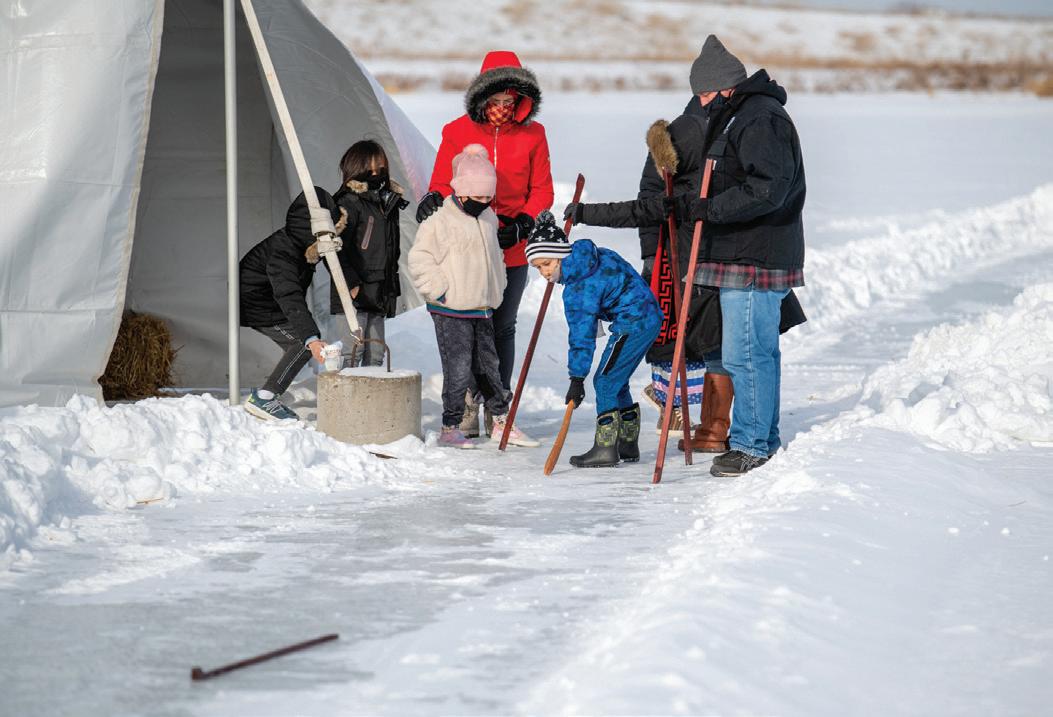
The public exhibit, Mdewakanton: Dwellers of the Spirit Lake has hosted over 23,000 guests since opening in 2019, and its popularity among the general public, schools, and tour groups continues to grow each year. Because of closures during the pandemic, the exhibit finally had its first consecutive 12 months of operation with no interruptions from April 2022 to April 2023. During that period more than 8,000 people visited the exhibit, including 200 guided group tours.
In the past four years, Hoċokata Ti has also opened its doors for a variety of educational opportunities, including:
� Native American Heritage Month events offering opportunities to learn about Dakota language, traditional games, and lifeways
� Earth Day open houses highlighting the SMSC’s green initiatives

� Classes for educators and teachers
� Art markets
In February 2023, Hoċokata Ti hosted the SMSC Winter Wacipi, which was opened to the public for the first time. The two-day contest wacipi was a celebration of Native history and culture, featuring dancing, drums, and moccasin games along with craft and food vendors. Over 125 dancers from around the region participated in the event.
Over the past four years, Hoċokata Ti hosted numerous special events and workshops.

Events
� Live concert by Leech Lake Band of Ojibwe singer, songwriter, and musician Annie Humphrey (August 2020)

� Comedy show featuring Crow Creek Sioux tribal member Mylo Smith (April 2021)
� Native Film Week (September 2021)
� Minnesota Public Radio Indigenous Media Roundtable (June 2022)
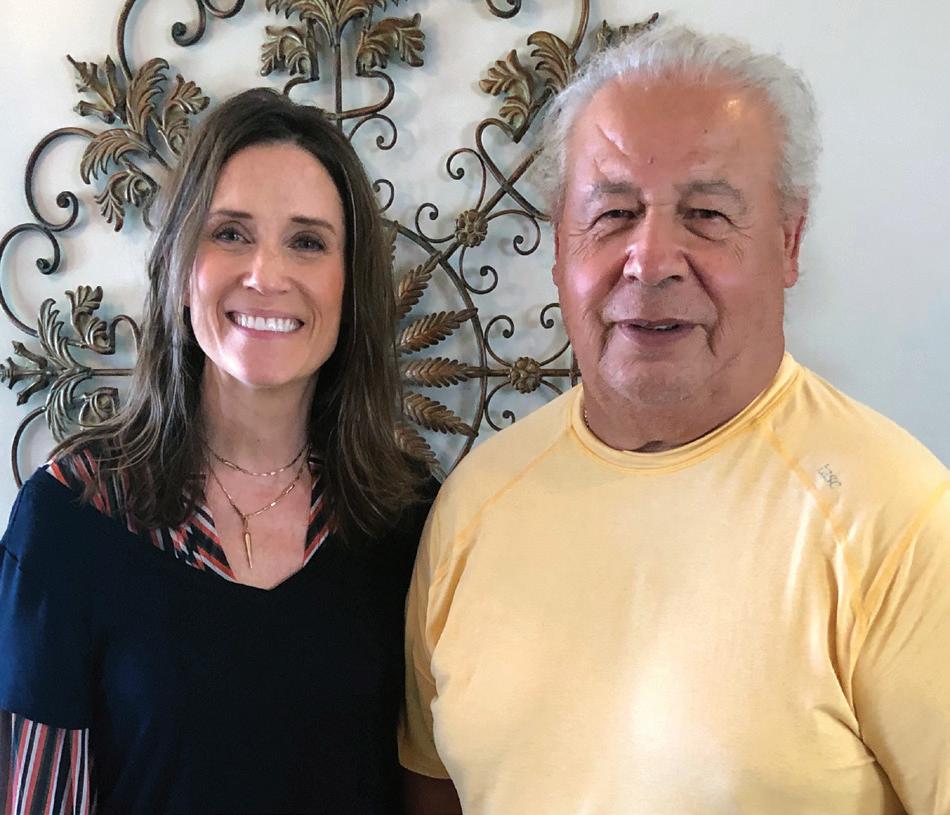
� Inaugural SMSC Dakota Language Bowl (May 2023)
� National Congress of American Indians Mid Year Convention Culture Night (June 2023)
� Screening of Lakota Nation vs United States documentary (August 2023)
To help Community Elders document their life stories for their families and future generations, the SMSC launched an oral history project in 2019. The tribe enlisted the help of Tricia Velure Nissen, a longtime friend of the Community who specializes in oral history preservation. Through her company Storyography, Tricia has been conducting interviews with Community Elders for the past four years, recording and organizing their stories, and preserving those stories in audio and written formats for their children, grandchildren, and the Community as a whole.
“People’s everyday lives are so rich in history,” said Nissen. “Native cultures are the model our whole country should be following when it comes to valuing oral history, personal history, and elders. I’m excited to get to be a part of that.”
To date, about 30 people have participated in the program.
� Moccasin workshops led by Prairie Island Indian Community Member Cole Redhorse Jacobson
� Caŋ a a teachings from Lower Sioux Indian Community Member Mat Pendleton
� Fancy Bustle workshops led by Sisseton Wahpeton Oyate Community Member Clay “Shorty” Crawford Jr.
� Regalia making classes with Northern Cheyenne and Oglala Lakota artist Dianna Johnson
� Star Quilt workshops with instruction from Dakota artist Kris Limon
� Pottery classes led by Lower Sioux Indian Community member Joyce Pendleton
� Cradleboard making workshops with Standing Rock Sioux tribal member Tiffany Baker-Ramsey
� Community Member-led sewing, cooking, beading, and art workshops
Each spring, dozens of Community Youth gather to showcase and honor their Mdewakanton Dakota culture, values, and traditions in front of family, friends, and the greater community at Young Native Pride. The annual event focuses on engaging Community Youth in Native American values and tradition, while empowering them to share their culture with others through song and dance.
The annual performance was interrupted for two years due to COVID-19, but it made a triumphant return in 2022. That year also marked the event’s debut at Hoċokata Ti after taking place at local high schools for many years.
The program features a variety of dances, including Women’s Traditional, Men’s Traditional, Women’s Jingle, Men’s Grass, Women’s Fancy, and Men’s Fancy. Each performance ends with a Social Round Dance, when everyone in attendance is invited to join the dancers for an impactful and powerful display of friendship and unity.


For weeks leading up to the event, youth practice with consultants to hone their dance techniques and learn new skills, while at the same time creating lasting connections with each other. Staff from Hoċokata Ti and the Education Department, as well as the Youth Leadership Council play a crucial role in making the event happen each year. The SMSC will celebrate the 25th edition of Young Native Pride in 2024.
Community Youth share their Dakota culture and traditions with family and friends through a variety of dance styles each year at Young Native Pride.


In October 2019, the SMSC announced the launch of Understand Native Minnesota, a $5 million strategic initiative and philanthropic campaign to improve the Native American narrative in Minnesota schools.

“Most education about Native Americans does not acknowledge the existence and vitality of modern Native communities. We have been mostly invisible,” SMSC Secretary/Treasurer Rebecca Crooks-Stratton said during the launch announcement at the 50th annual convention of the National Indian Education Association in Minneapolis. “We believe that by promoting Native narrative change in Minnesota schools through a dedicated campaign, we can improve younger generations’ understanding of tribes, Native peoples, and their contributions to the state.”
The Understand Native Minnesota campaign aims to improve public attitudes toward Native Americans by incorporating greater awareness of Native Americans, along with accurate information about their history, culture, and modern tribal governments, into Minnesota’s K-12 education system. Programming of the campaign includes classroom resources, improved curricula, and professional development for teachers and school administrators.
Among the campaign’s strategic partners are the Native Governance Center, the Bell Museum, and the Minnesota Indian Education Association.
“Understand Native Minnesota creates a new opportunity to reframe kids’ and ultimately adults’ thinking about Indigenous people in our state,” said Ramona Kitto Stately, board chair of the Minnesota Indian Education Association. “We in the education profession, Native and non-Native alike, who teach about Native Americans can be grateful for the possibilities which this new initiative now gives our work.”
I think understanding more about people in our communities and the differences—but also the similarities—is really important. Seeing yourself reflected in your education and your curriculum, and how your story fits in the larger community is so important for all of our children.”
— SMSC Secretary/Treasurer Rebecca Crooks-Stratton
90% of Minnesotans support
“increasing the teaching of Minnesota’s Native American history, culture and tribal government in the state’s K-12 public schools,” according to a 2021 SMSC public opinion poll.Secretary/Treasurer Rebecca Crooks-Stratton welcomes Minnesota Lt. Gov. Peggy Flanagan on an episode of the Native Minnesota podcast.
� In March 2023, the SMSC provided an $80,000 grant to the Three Rivers Park District to develop new Native American education programming at the Lowry Nature Center.
� In November 2022, the SMSC sponsored a large-scale book giveaway of Braiding Sweetgrass for Young Adults and a series of events in Minnesota with its author Monique Gray Smith in recognition of Native American Heritage Month.

� In September 2021, the SMSC hosted more than 30 Scott County education leaders for a listening and discussion session on Native American narrative change work in local schools.
� In May 2021, the SMSC and the Understand Native Minnesota campaign launched the podcast series Native Minnesota with Rebecca Crooks-Stratton. The podcast series features conversations with thought leaders and changemakers in Minnesota and across Indian Country.
� In June 2022, the SMSC published Restoring Our Place, a groundbreaking resource scan report assessing what teaching resources on Native American subject matter are in actual use by Minnesota educators.
� The SMSC organized and hosted professional development Educator Academies in 2023, training more than 500 educators from across the state how to correctly teach and incorporate Native content into their lessons. More academies are planned.
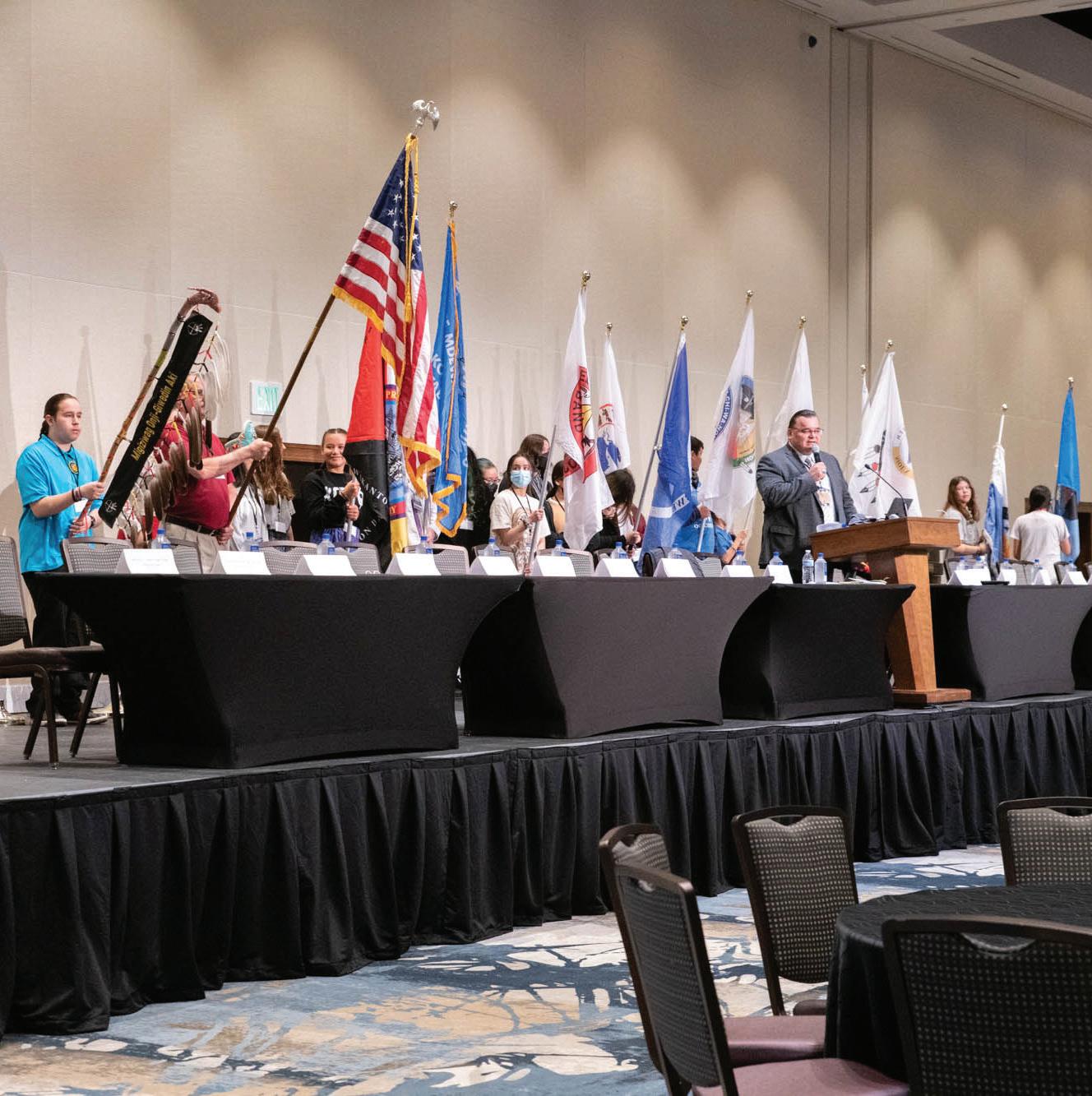
� As this report goes to print, other important publications and grant awards are in the final stages of preparation.
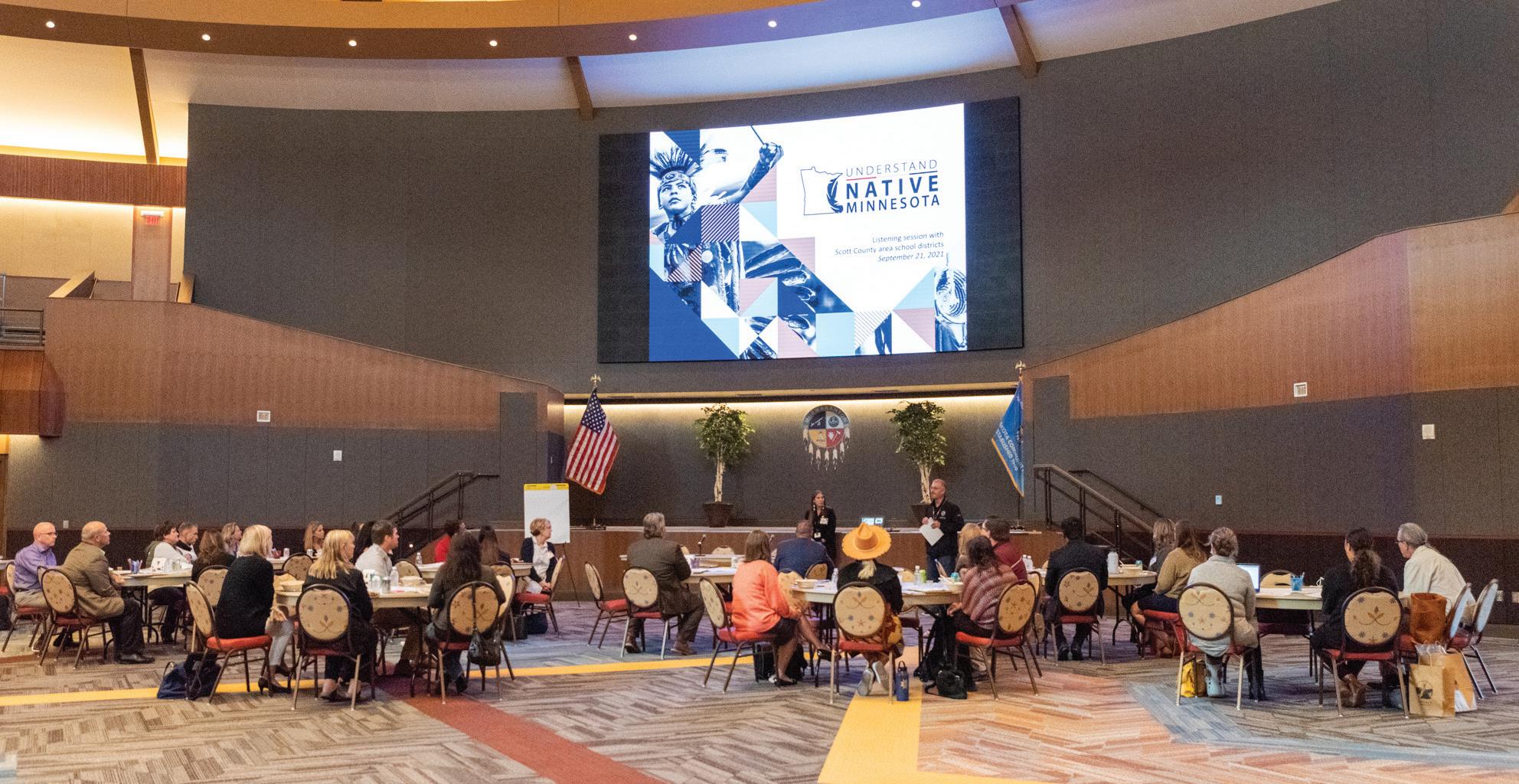
A visit to the public exhibit at Hoċokata Ti, Mdewakanton: Dwellers of the Spirit Lake, tells the story of the Mdewakanton Dakota through objects that were carefully selected by the SMSC Culture and History Preservation Work Group. But the objects on display represent less than 1% of the SMSC Collections. Over 11,000 objects are stored in a state-of-the-art space within Hoċokata Ti and carefully preserved by the SMSC Collections team to ensure their safety for generations to come.
Since the collection was moved to Hoċokata Ti in the spring of 2019, the team has put a focus on using the objects to illustrate exhibits and education programs, provide information for research, and inspire the public to know more about the cultural expressions of the Dakota people. Examples of this include:
� Hosting monthly open houses which allow Community Members to view the collections space and ask questions about the objects.
� Creating an Artist in Residence program to help establish the traditional Dakota form of objects. In 2021, Cole Redhorse Jacobson from the Prairie Island Indian Community performed research at Hoċokata Ti to determine that the traditional type of moccasin used among the Dakota in Minnesota was pucker-toe style.
� Establishing an Education Collection that allows Community Youth to learn by handling and examining objects such as a parfleche box and moccasins, which contrasts those in the collection that must only be handled with gloves and kept in a stable environment.
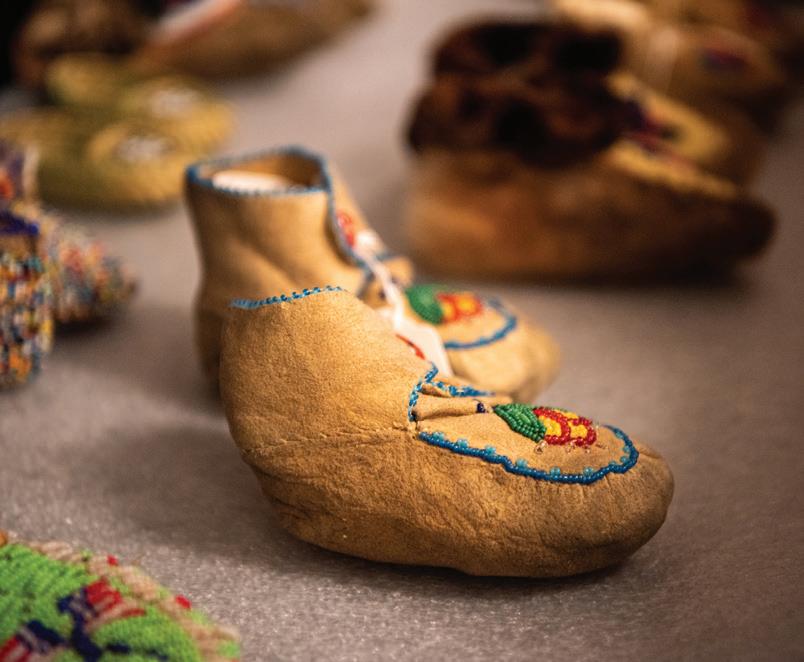
� Putting a focus on acquiring pieces from Oceti Ṡakowiŋ communities and contemporary Dakota artists.
The ongoing work of the SMSC Collections team is another example how Hoċokata Ti is living up to its mission of interpreting and encouraging traditional Mdewakanton Dakota heritage and history.


The SMSC Collections, acquired from longtime friend of the SMSC Arlo Hasse, contains many different objects from cultures across the U.S., Canada, and Mexico. Following Hoċokata Ti’s mission as a dedicated repository for objects and historical information on Mdewakanton Dakota culture, objects in the collection are identified and reviewed on a case-by-case basis in order to return these items to the tribe and/or cultures to which they represent.
In 2019, staff had the opportunity to repatriate nine ceremonial items to the Ho-Chunk Nation and Red Lake Nation. These items, which were a part of the 1993 Hasse collection, were identified as ceremonial water drums of Ho-Chunk and Red Lake Nation origins. In an effort to stay aligned with the mission of the cultural center, it was decided to repatriate the water drums so that they can be brought back to their traditional land.
Led by the Minnesota Indian Affairs Council, the SMSC collaborated with the state’s tribes to critically examine the University of Minnesota’s treatment of Native people in a report that was issued in May 2023. The 500-page report is the result of a collaborative effort between Minnesota’s 11 tribal nations and the university called the TRUTH Project — short for Towards Recognition and University-Tribal Healing.

With support from the Culture and History Preservation Work Group, several members of the Hoċokata Ti staff served as research fellows for the SMSC’s portion of the report. The team pored over archival records, oral histories, and other sources to examine the troubled history between Native people and the state’s land grant university, while also using the seven Dakota values to guide their approach.
Among the findings reported by the SMSC:
� Throughout the treaty years, prominent university leaders enriched themselves with the resources of Dakota homelands.
� Leaders of the state misled Dakota leaders and did not provide compensation for land treaties, including where the university sits today.
� The university built monuments to the “pioneers” of Minnesota, including those who fought against the Dakota during the U.S.-Dakota Conflict and those who made their wealth in the fur trade which altered the lands and natural resources that sustained the Dakota people for generations.
� The phrase “Ski-U-Mah” is a misrepresentation of the Dakota language. “Ski-oo” was supposedly derived from the Dakota language meaning “victory,” however the Dakota word for victory is Woohiye. While great strides have been made in restoring the language, there continues to be mistranslations and misattributed words that supposedly describe Dakota life.
� The university sought to “study” Native people in a way that included placing Native people in the past, without agency, and without their voices. Classes such as those housed at the College of Pharmacy in the early 1930s sought to teach plant knowledge as transmitted by “Indian medicine men and women.” However, this fuels misunderstanding about Native ways and encourages people to appropriate those traditions for their own.
The report also highlighted improvements for Native students in the University of Minnesota system and areas of collaboration with the SMSC, in areas such as language, natural resources, medical advances, legal support, and academics. It mentioned the $1 million donation in 2015 as part of the tribe’s $11 million Seeds of Native Health campaign, and the SMSC $2.5 million endowed scholarship established in 2008.
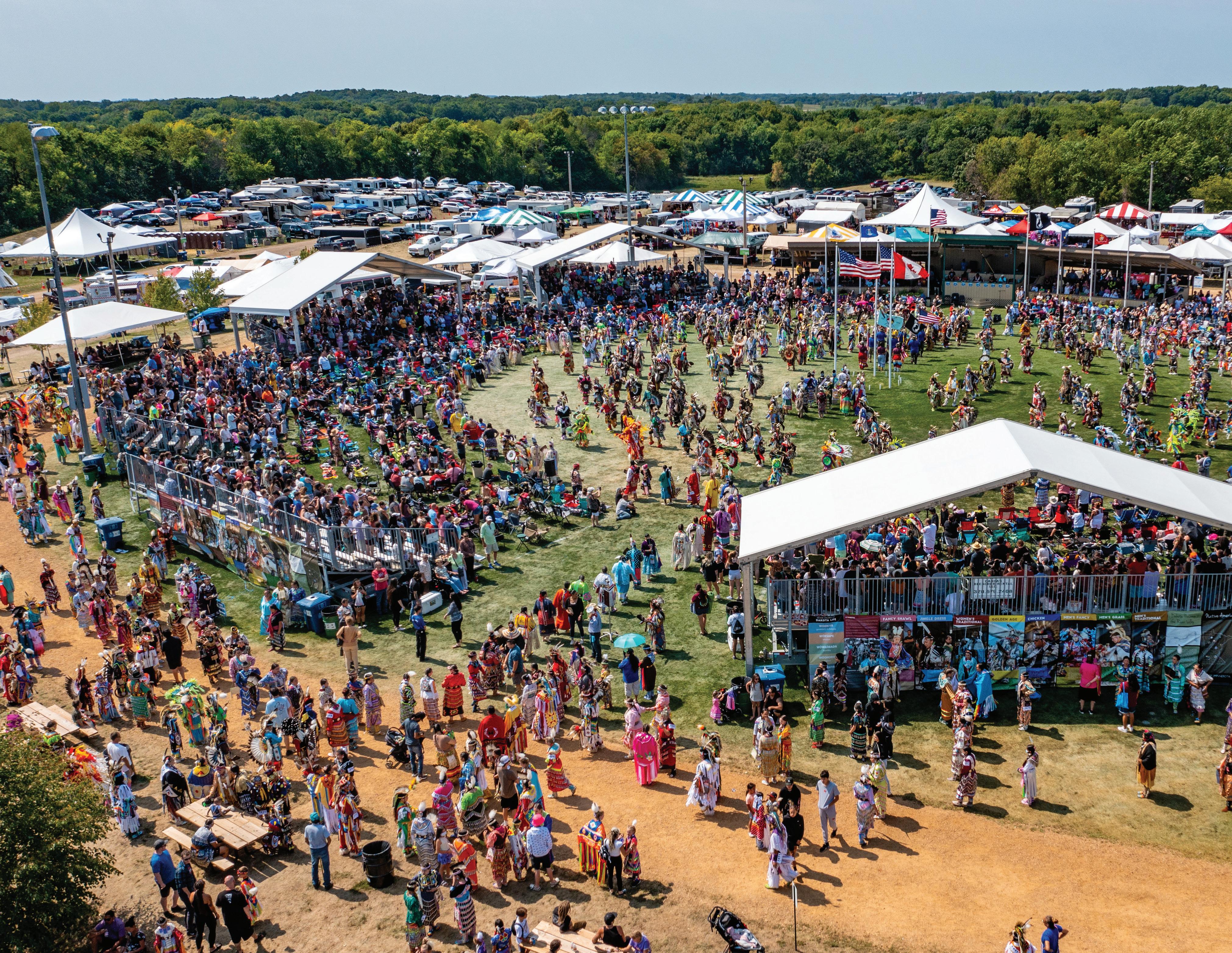
Wacipi means “they dance” in the Dakota language.
For decades, thousands of people have gathered for the annual SMSC Wacipi, joining together for a weekend of Native American culture, history, and celebration. As the Community’s largest event of the year, the SMSC Wacipi saw vastly different gatherings over the last four years while navigating through unprecedented challenges during the COVID-19 pandemic.
In 2020, the SMSC made the difficult decision to cancel the wacipi to protect the health and safety of the Community and the thousands of visitors, participants, and employees who attend the event. Instead, members of the Community came together for a more somber, intimate gathering at the SMSC Wacipi Grounds.
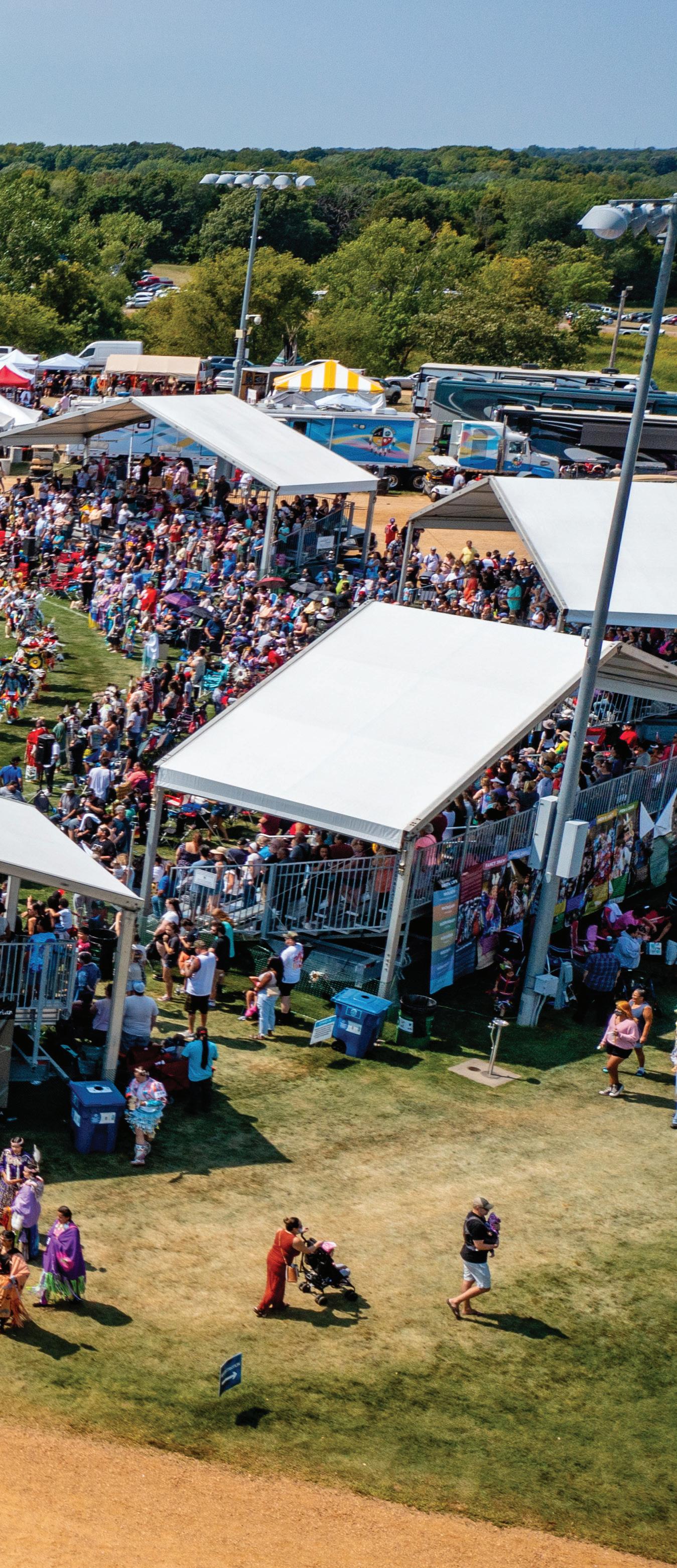
“Today we have found time to gather as a Community for a smaller version of our wacipi and to celebrate our culture and heritage,” SMSC Chairman Keith Anderson said. “We take the time to celebrate the good fortune, be thankful, and push through these hard times, and reflect on who we are and those who have passed.”
In 2021, the SMSC Wacipi returned to its true form with social distancing and safety precautions in place for those attending the event. Moccasin games also made a return to the event in 2021 after an absence of several years. The games were enthusiastically welcomed by attendees, with many competitions running into the early morning hours.
In 2022 and 2023, attendance numbers soared as hundreds of dancers, drummers, and singers—along with thousands of spectators—gathered from all over the United States and Canada to celebrate together after years of lockdown and protective health restrictions.
“We are thankful to have so many dancers, singers, and drummers along with everyone who makes the SMSC Wacipi an incredible experience,” SMSC Secretary/Treasurer Rebecca Crooks-Stratton said in 2022. “I would like to extend a big thank you to our SMSC Wacipi Committee, who start working on next year’s powwow the minute after this year’s ends, so that we can host a wonderful event every year.”
In addition to the three-day celebration of Native heritage, wacipi-related ancillary events continued to add to the celebration. As in years past, the SMSC Wacipi exhibition at Mall of America provided a unique preview experience for the SMSC Wacipi. Additionally, the SMSC Invitational Golf Tournament served as a symbolic start to the wacipi weekend, bringing Community Members and their invited guests together at The Meadows at Mystic Lake for friendly competition on the golf course. In 2021, the Dakota Kinship program also packed and distributed thousands of backpacks and school supplies during the event and sets out to expand the backpack giveaway program in the future.
Over the last four years, it became more apparent than ever that the three-day celebration provides much-needed camaraderie with family and friends from all over Indian Country, while welcoming new guests from near and far to the Community to join in celebration of Native culture and traditions.

Guided by the Dakota tradition of helping others, the SMSC is one of the largest charitable givers in Minnesota and donates more to Indian Country than any other tribal government or organization in America. Over the last 20 years, the tribe has donated more than $370 million to other tribes, nonprofits, schools, health centers, and other deserving organizations across the country, with a concerted effort to help others mitigate the effects of the COVID-19 pandemic.

Empowering SMSC employees and team members to take part in the Dakota tradition of giving, #SMSCgives offers the tribe’s employees and team members opportunities to assist worthy organizations and nonprofits in the local area. From organizing drives for clothing, food, and pet supplies to packing meals and building housing for local families, helping others has been a long-standing priority for the SMSC.
The inspiration for the program grew out of an initiative to increase the SMSC’s involvement in the greater community while supporting the tradition of helping others. At the heart of the program are the goals of assisting others through meaningful activities while building a stronger team across the SMSC. The employee outreach program provides employees with 16 paid hours every year to devote toward charitable endeavors supported by the SMSC.
In 2022 and 2023, the largest outreach opportunity in the program’s history was initiated with the partnership with Twin Cites Habitat for Humanity (TCHH). Over the course

of two 10-week stints, Community Members, employees, and team members helped to build a four-unit town home complex in Prior Lake. According to TCHH, the site will include a total of 12 affordable housing units on the 1.27-acre development. The homes have three and four bedrooms, 1.75 baths, and will be Energy Star certified. TCHH hopes to construct one of the buildings each year, with a projected completion date of fall of 2024. The Towering Woods Townhomes are located at 170th Street, Prior Lake.
Since 2010, the SMSC has been a presenting sponsor of Lakefront Music Fest and has provided #SMSCgives volunteers, in-kind donations, pallets of water, and monetary donations. These efforts benefit the Prior Lake Rotary in many ways including contributing to the success and popularity of the event. In 2020, the event was cancelled due to Covid-19, however crowds have continued to break records following the pandemic. In 2023, the music festival had blockbuster sales, selling out weeks before the anticipated event took place.
From packing meals and school supplies for families in need to helping build affordable housing for the local community, the SMSC devoted thousands of hours toward the betterment of their neighbors from 2020-2023.Another ongoing partnership with #SMSCgives is with Greater Twin Cities United Way. Each year, more than 100,000 students in the Twin Cities area go back to school without a backpack and the essential supplies needed to learn and succeed in the classroom. Through this school supply drive, Community Members, Community Youth, team members, and employees have helped distribute 8,500 backpacks to local Indian education programs and the communities of Prior Lake and Shakopee over the last four years.
In both 2021 and 2022, 1,000 backpacks were distributed at the SMSC Wacipi. In 2023, the number of backpacks increased to 3,000, giving away 1,000 backpacks each day during the annual event.
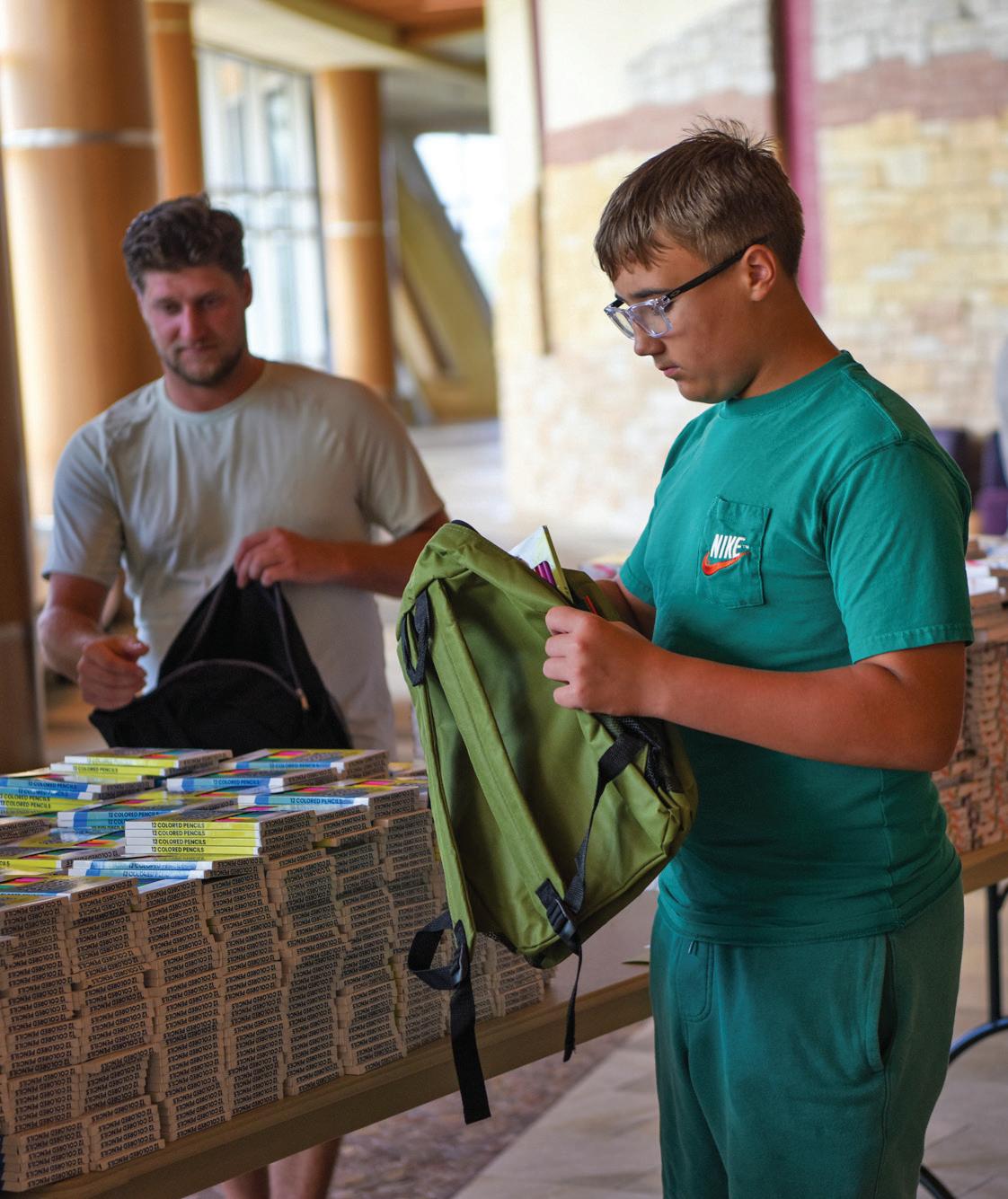
During the pandemic, #SMSCgives creatively decided the best way to safely help the tribe’s neighbors was to offer food and produce to local families. Since 2021, #SMSCgives has hosted
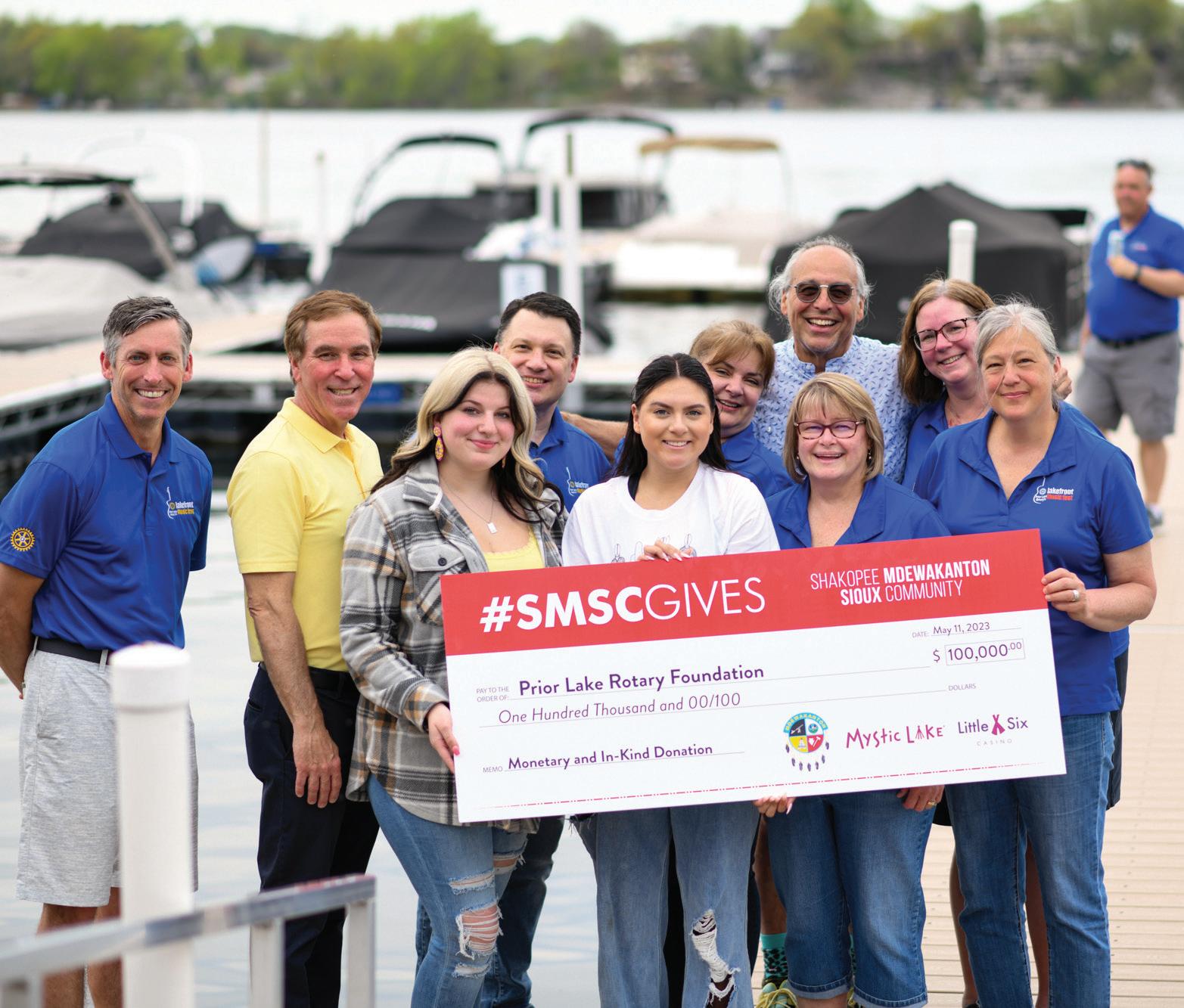

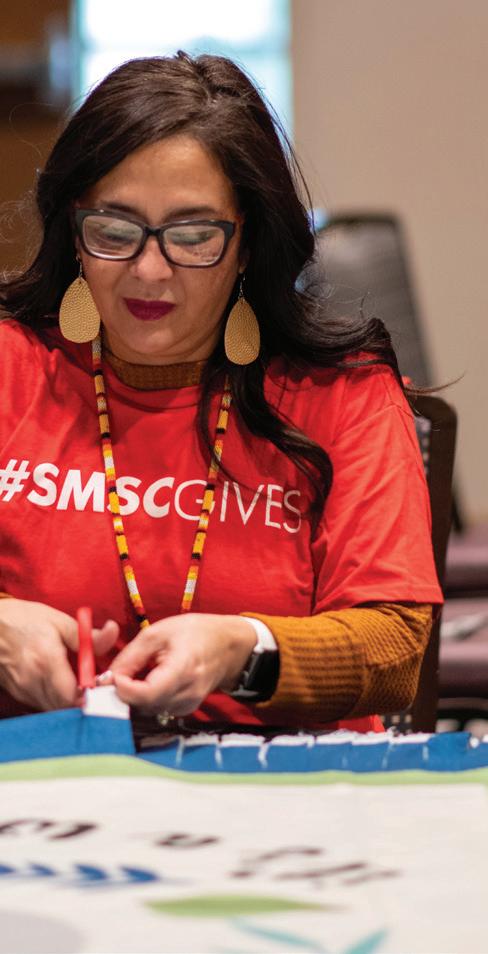

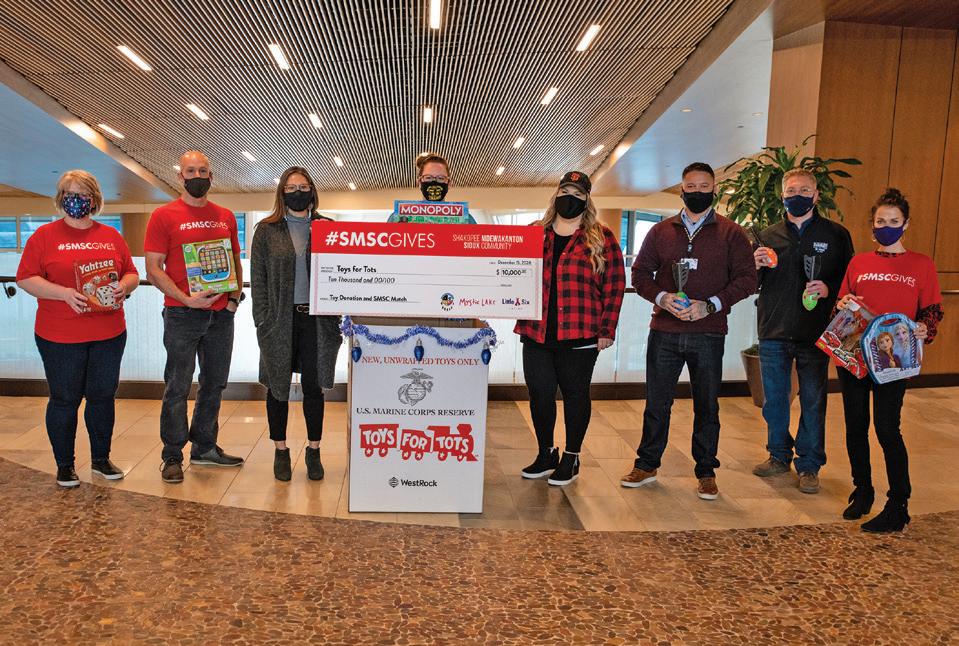
13 drive-thru public food distribution events totaling more than 151,242 pounds of groceries and feeding 14,604 people. The food supply has been provided by Second Harvest Heartland and has included a variety of food such as milk, potatoes, carrots, onions, chicken, cereal, yogurt, corn, black beans, macaroni and cheese, fruit bars, and essential hygiene products.
Additionally, #SMSCgives has hosted a variety of clothing drives, pet supply drives, and toy drives that have had Community Member, employee, and team member assistance, as well as matching grants from the Business Council. These philanthropic initiatives are guided by the Dakota tradition of giving and the SMSC commitment of being a good neighbor, employer, and steward of the earth. #SMSCgives is a collaborative, values-driven effort for employees and team members to take action where help is needed and provide compassion, aid, and opportunities to our local community thought acts of service—so that all may lead healthy and vibrant lives for generations to come.
From creating Easter baskets for elders and providing backpacks for students, to distributing food to employees and hosting Trunk or Treat events for Natives living in Scott County, the Dakota Kinship program has a successful list of accomplishments since forming in early 2022. With the help of #SMSCgives and the Sharing Resources Work Group, this outreach initiative has created several new opportunities focused on ways for Community Members to volunteer.
Dakota Kinship is a Community Member-led outreach program that was created in an effort to coordinate volunteer opportunities for SMSC members and their families. With input from the Community, events are selected to maximize volunteer efforts within Indian Country and Native or local organizations who receive funding and have relationships established with the SMSC.
Community Member, Sharing Resources Work Group member, volunteer, and Dakota Kinship Facilitator Kristina Zander has been at the helm helping to connect Community Members with those in need. Zander has been working tirelessly to make a difference with the support of fellow Community Members willing to offer a helping hand.
“Getting to know fellow tribal members and our youth has been one of the best parts of this program,” states Zander. “I am excited for more members to join us because there is lots to do, and there is a need.”
In the summer of 2022, the Dakota Kinship program gave away 1,000 backpacks filled with school supplies to students during the three-day annual SMSC Wacipi. In 2023, the program increased the number of backpacks to 3,000—giving away 1,000 each day! In addition, another 1,000 backpacks were donated to local Indian education programs throughout the Twin Cities.
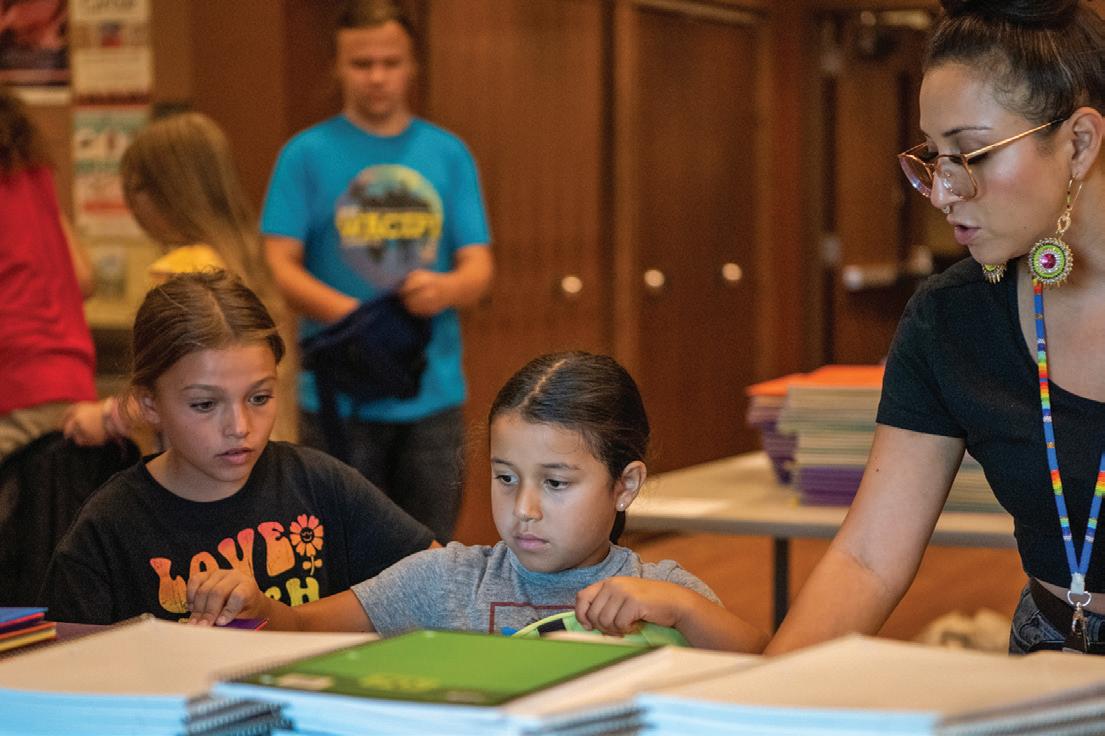
The Community-led program hosted a food distribution event for SMSC employees and team members in the fall
of 2022. This event fed nearly 2,000 families. In 2023, the Dakota Kinship program will host two employee food distribution events. Zander explains, “We appreciate our employees and team members, and we understand that times are hard, so events like these help ease the burden for our employees and their families.”
In 2022 and 2023, the program invited Community Members and their families to help create Easter baskets for elders living at the Elders Lodge in St. Paul. The baskets included everyday necessities (and a little something special), to bring smiles to the recipients’ faces.

The Trunk or Treat events have been unique opportunities where Community Members and SMSC departments and enterprises came in costume and decorated their vehicles to hand out candy to SMSC Youth as well as to Scott County Natives. “It was great to see all the participation from our employees and to bring together the local Native community. Plus, a little friendly competition for awards and prizes is fun for everyone,” expressed Zander.
Over the course of the last two years, the Dakota Kinship program has helped strengthen the relationships within the Community, as well as provide needed assistance throughout Indian Country and local organizations. The program plans to continue its important work and has already begun planning events for the years ahead.
Getting to know fellow tribal members and our youth has been one of the best parts of this program.”
— Sharing Resources Work Group member, volunteer, and Dakota Kinship Facilitator Kristina Zander


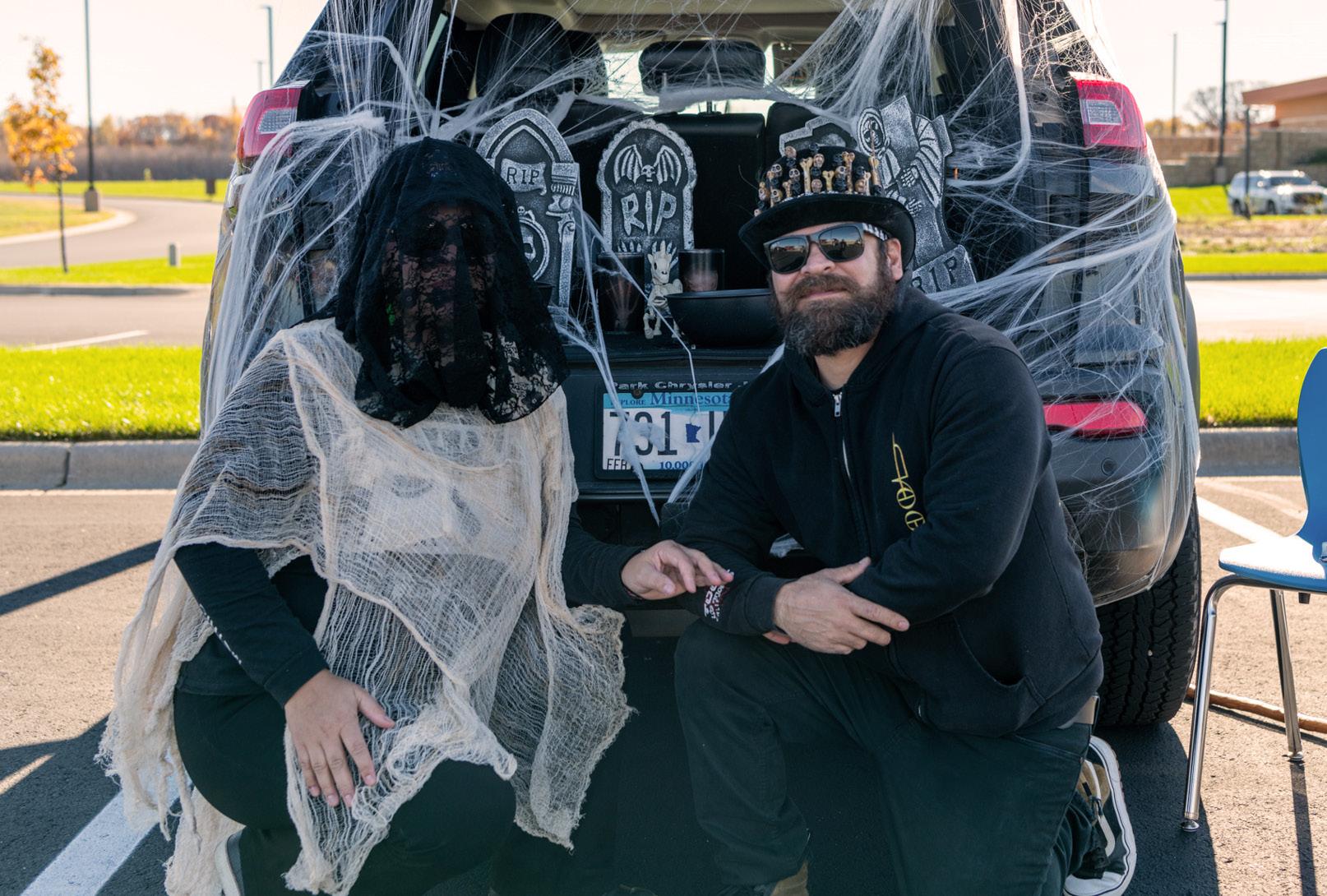


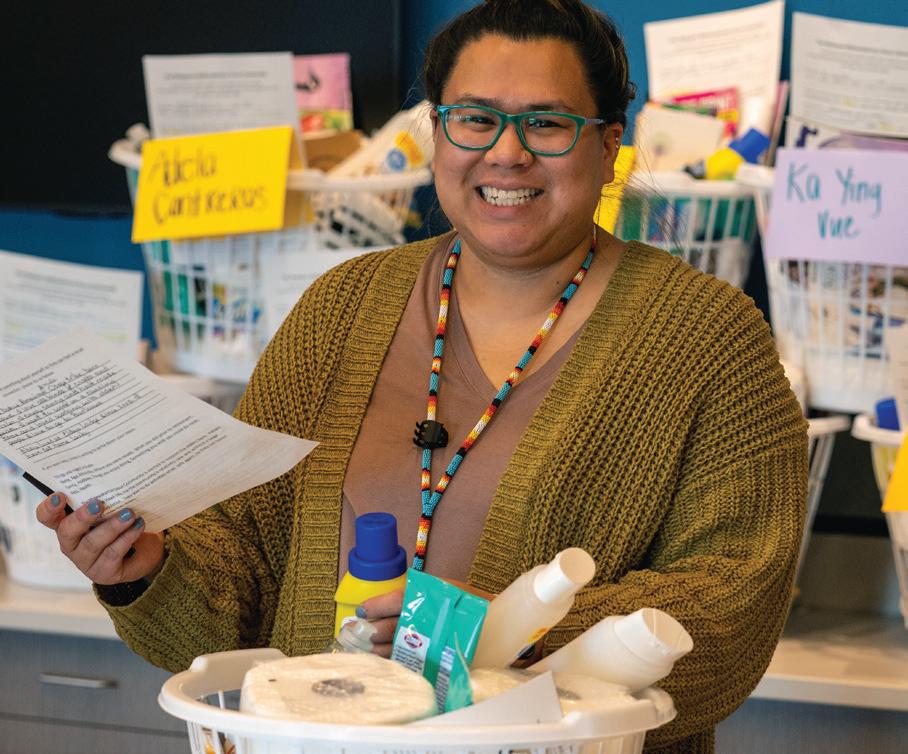

The SMSC is one of the largest charitable givers in Minnesota and consistently donates more to Indian Country than any other tribal government or organization in America. Embodying the Dakota value of wóokiya, generosity and helping, the tribe invests millions of dollars in organizations across the state and beyond. From 2020-2023, the SMSC donated nearly $80 million to Native American tribes, nonprofits, and other organizations.

To date, the SMSC has donated more than $370 million to support a variety of projects, ranging from local governments to youth education and environmental protection. Whether it’s a large-scale effort or a small-town sports team, the SMSC supports initiatives far and wide, in a continued effort to embody the Dakota way of life and share resources with others—now and for generations to come.
The National Indian Child Welfare Association (NICWA) ensures that Native children have access to community-based, culturally appropriate services that help them grow up safe, healthy, and spiritually strong. The Native-led organization supports tribes in building capacity to prevent child abuse and neglect through positive systems change at the state, federal, and tribal levels.
Each year, NICWA hosts its Protecting Our Children national conference to address the needs of American Indian and Alaska Native children. The SMSC’s continued sponsorship of the annual conference helps allow frontline tribal child welfare and behavioral health workers to receive practical, timely, and culturally relevant information to take home to their communities.

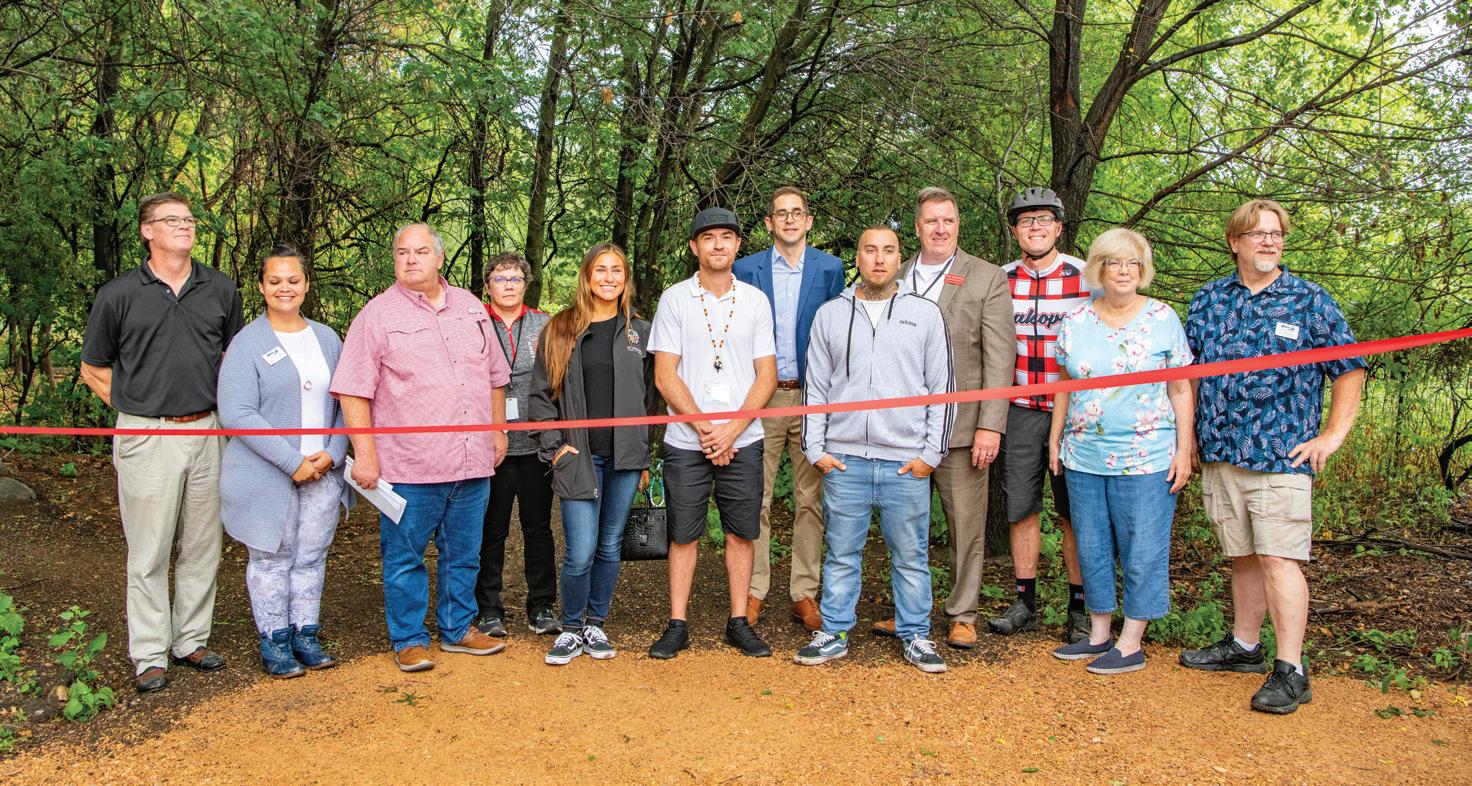
In a continued effort to prepare the next generation of Native American students for success, the SMSC Endowed Scholarship program continues to offer talented youth who are seeking undergraduate and graduate degrees from the University of Minnesota with financial support.
For 14 years, the tribe has dedicated funds to educational initiatives, including an endowed scholarship fund at the University of Minnesota. “This scholarship program offers the opportunity for more Native students to attend and graduate college. These scholars can then bring forth their knowledge for the betterment of their tribal communities,” said Secretary/ Treasurer Rebecca Crooks-Stratton.
The SMSC along with the Dakota Oyate, Minnesota Humanities Center, and the Lower Sioux Agency, hosted a two-day Dakota History Symposium with a mission to raise awareness of the underrepresented Dakota narrative by educating the public, local leaders, and Dakota/Lakota/ Nakota youth.
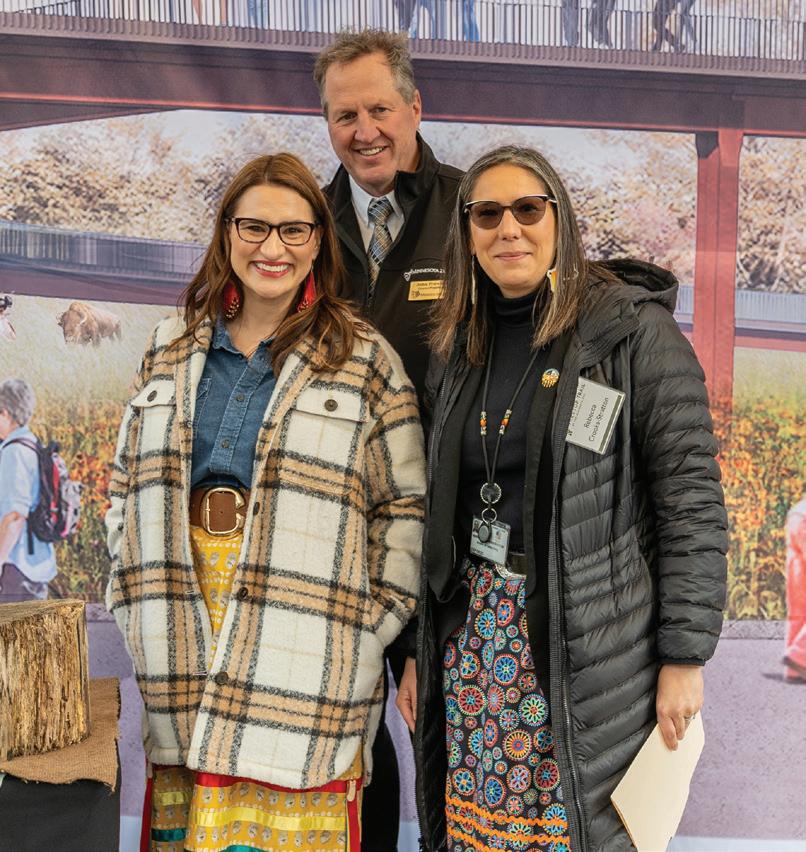
The symposium event shared voices, perspectives, and the cultural worldview of the Dakota through cultural teachings led by guest speakers from across Oceti Ṡakowiŋ. These teachings were focused on truth-telling, cultural education, and oral history with a goal that participants and attendees would have a better understanding of the Minnesota Dakota before, during, and after the U.S-Dakota War.
This donation from the SMSC helped to bring a new perspective for visitors to the Minnesota Zoo. The Treetop Trail stands as the world’s longest elevated pedestrian loop at 32 feet above ground and 1.25 miles in length. The walking path provides guests with a bird’s eye view of the Minnesota Zoo and access to hundreds of acres of exhibits, forests, wetlands, and wildlife. The SMSC donated $1,500,000 to the Minnesota Zoo Foundation’s “Step Into Nature” campaign in order to help make this project happen.
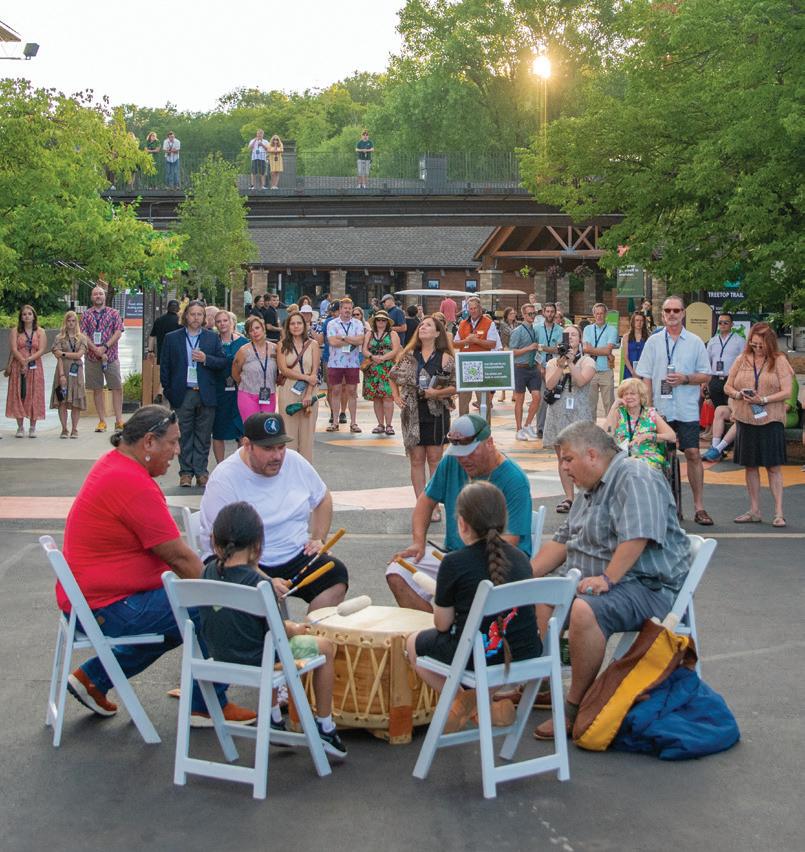
The mission of the Treetop Trail is to provide a year-round, welcoming, and accessible journey into nature for people of all ages, backgrounds, and abilities through self-guided experiences as well as special events and programming.
Additionally, the SMSC contributes to the zoo’s ongoing bison program that cares for and protects the herd of bison at the Minnesota Zoo and in the Minnesota bison conservation herd. It is the future goal of the program to release yearling bison into Minnesota state parks. The Treetop Trail opened in July 2023.
For nearly 20 years, the SMSC has donated over 1,000 automated external defibrillators (AEDs) to tribes, first responders, and government agencies in order to provide essential lifesaving technology. Among the recipients is the Prior Lake Fire Department who received eight new AEDs in 2022, which are housed on fire apparatuses including four chief vehicles, two rescue trucks, and two rescue engines.
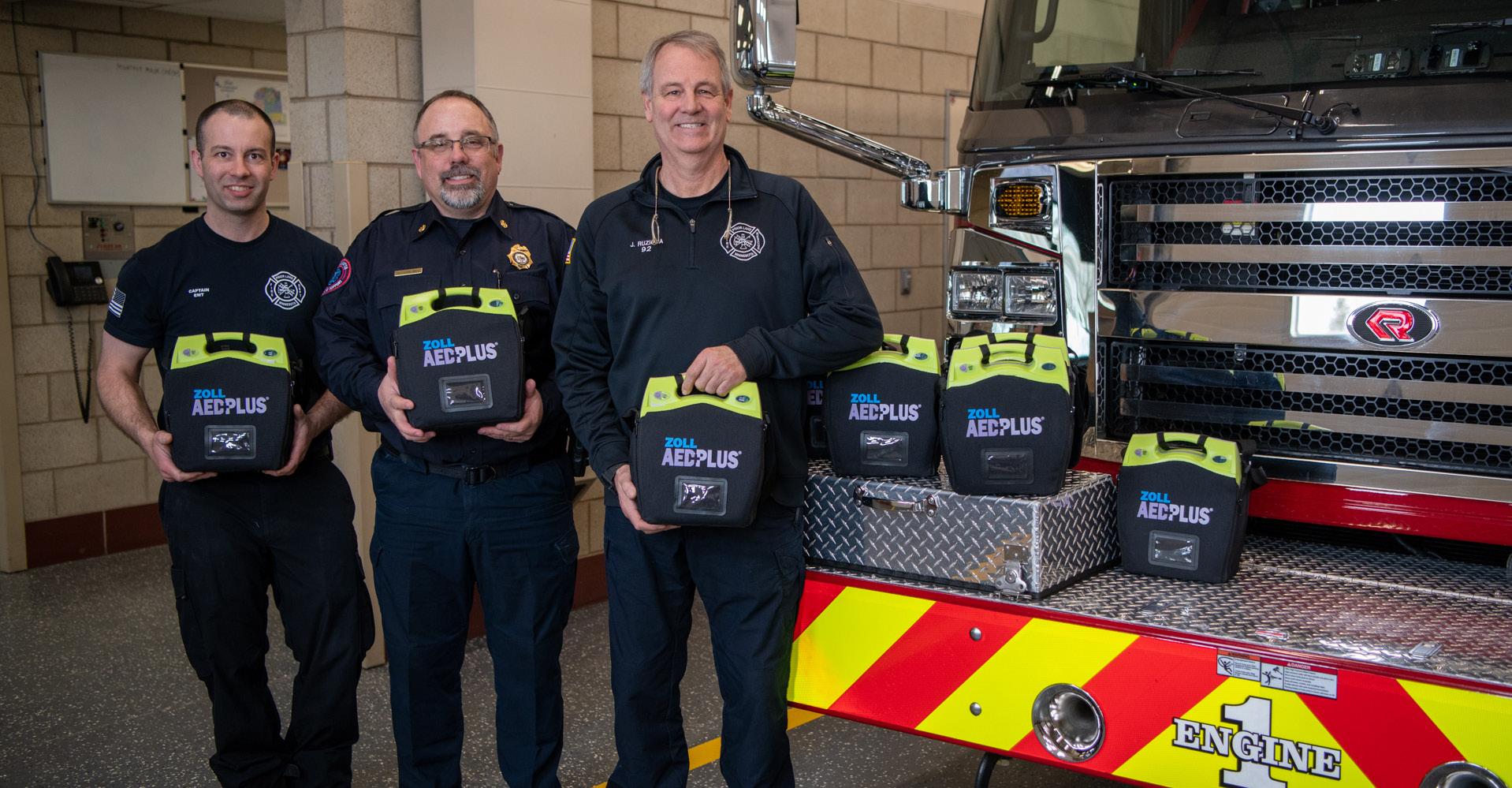
In 2023, Prior Lake-Savage Area School District received 15 new AEDs. These AEDs will be distributed among the schools in the district in order to help prevent losing the life of a student, teacher, staff member, or parent.
The SMSC donated $500,000 to the Saints Foundation to help renovate the hospital’s Family Birth Place, Level II. This donation assisted with improving the accommodations of six level II infant beds, two of which are able to accommodate twins or could be divided into two separate spaces when needed. The accommodations will add visual healing enhancements like the rest of the campus including natural light, wood, water, and metal elements. These improvements will also help reduce noise, improve healing time, increase efficiency for staff and physicians, improve patient privacy, and overall improve amenities for families.
A Level II SCN falls in the hierarchy of neonatal intensive care units (NICU), accommodating babies born in need of extra care or moderately premature infants. The SCN at St. Francis allows hospitalized infants and their parents to stay close to home and is crucial for bonding and breastfeeding. Without this specialized unit, infants requiring a higher level of care would be transferred to another facility, separating them from their mothers and families.
For more information regarding the charitable contributions funded by the SMSC, check out the 2020-2023 Donation Report at shakopeedakota.org.

Between Community park enhancements and enterprise expansions and record-breaking trust land approvals, the SMSC continued its remarkable growth trajectory in 20202023 despite the challenges posed by the lingering COVID-19 pandemic. Rooted in the tribe’s tradition of planning seven generations ahead, the SMSC’s commitment to constant evolution and development have helped to ensure that the needs of the rapidly growing Community are met for many years to come.
To deliver Mazopiya’s services more efficiently to the Community, changes were made in July 2023 to streamline the natural food market’s operations by consolidating and relocating Mazopiya’s hot deli and catering services into the Playworks kitchen. Additionally, the retail store closed after 12 years of serving the SMSC and surrounding cities. The decision allowed those who live and work in the Community to continue enjoying Mazopiya’s prepared food programs and catering service, but in a more efficient and sustainable manner.
The market opened in 2010 to provide Community Members with natural and healthy foods, which was uncommon during that period. Soon after, Mazopiya opened its doors to the public in January 2011. It expanded and evolved over the years to provide unique offerings that customers could not get at a typical grocery store, such as educational classes, Native goods, and scratch-made food programs that grew in popularity over the years.
While the store was founded to support the important needs of the Community, the landscape changed during the dozen years that Mazopiya was open. The number of convenient grocery stores in the area expanded, healthier grocery items became more widespread, and Wozupi Tribal Gardens was founded to provide fresh and local produce for Community Members.
But Mazopiya’s mission to offer convenient and healthy options to the Community lives on as its popular food programs continue through the newly combined Playworks operation. Select hot deli items are available through Playworks Café and convenient Mazopiya Express options can still be found at locations around the Community. Plans also call for the Mazopiya catering business to be reimagined and renamed while still offering delicious and healthy food for get-togethers and events within the Community and beyond. The combined Playworks-Mazopiya operation will continue to evolve and adapt to meet the needs of the Community, SMSC employees, and surrounding cities.
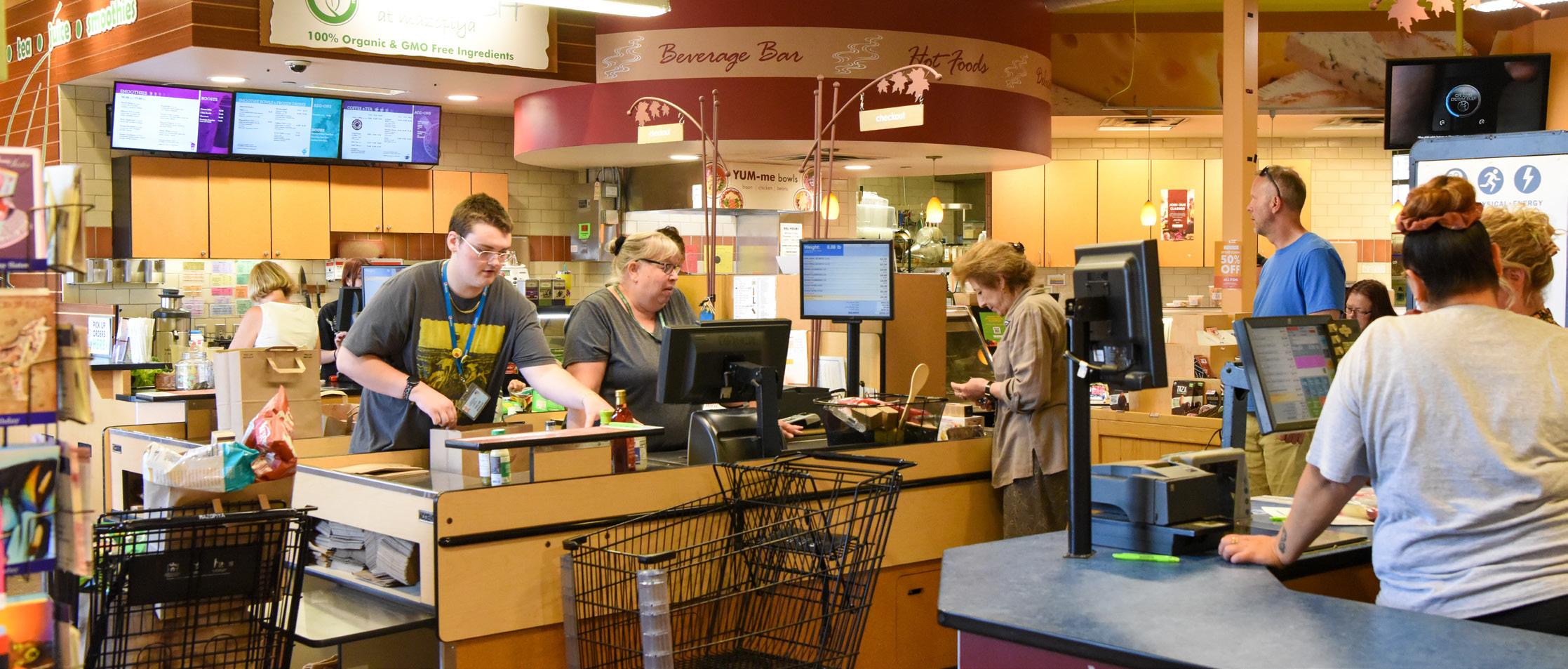
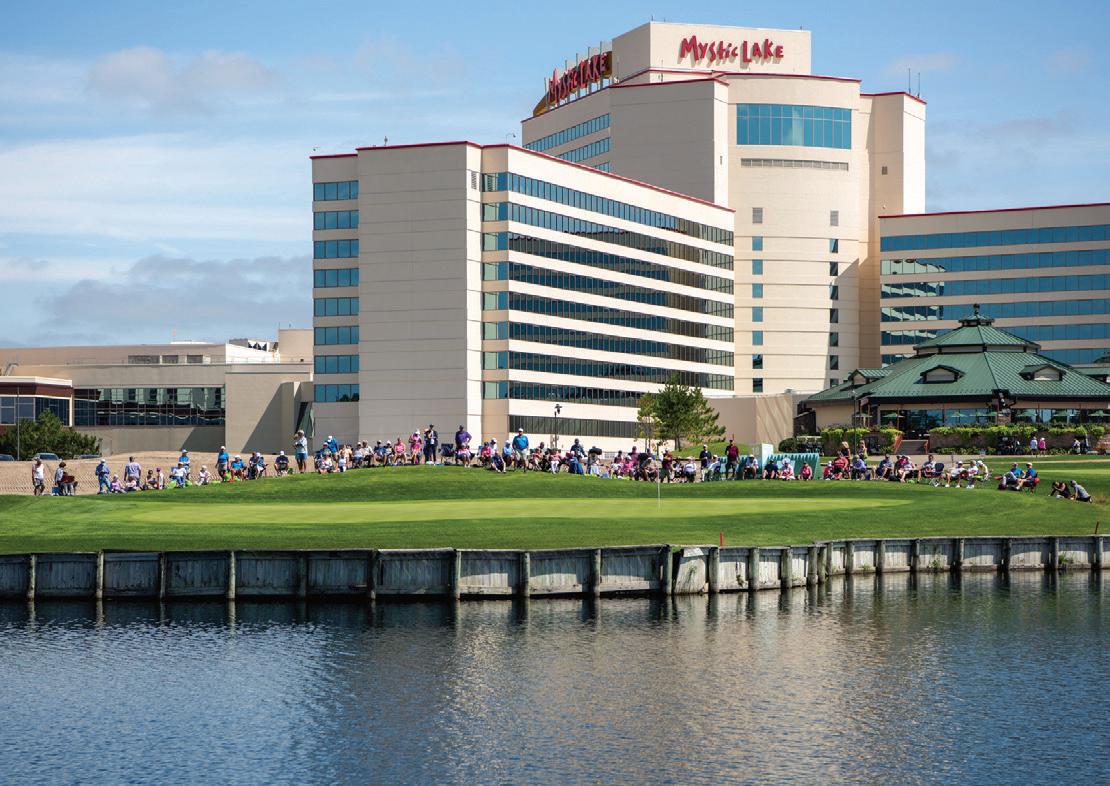
Whether it was navigating through the pandemic, bringing elite professional golf to the SMSC, or undergoing significant upgrades and renovations to the course, the last four years have seen immense change at The Meadows at Mystic Lake.
With more than 20,000 rounds being played each year, the award-winning public golf course has been recognized as one of the top venues in Minnesota, including earning distinction as one of the Star Tribune’s “Minnesota’s Best” in 2022 and 2023.
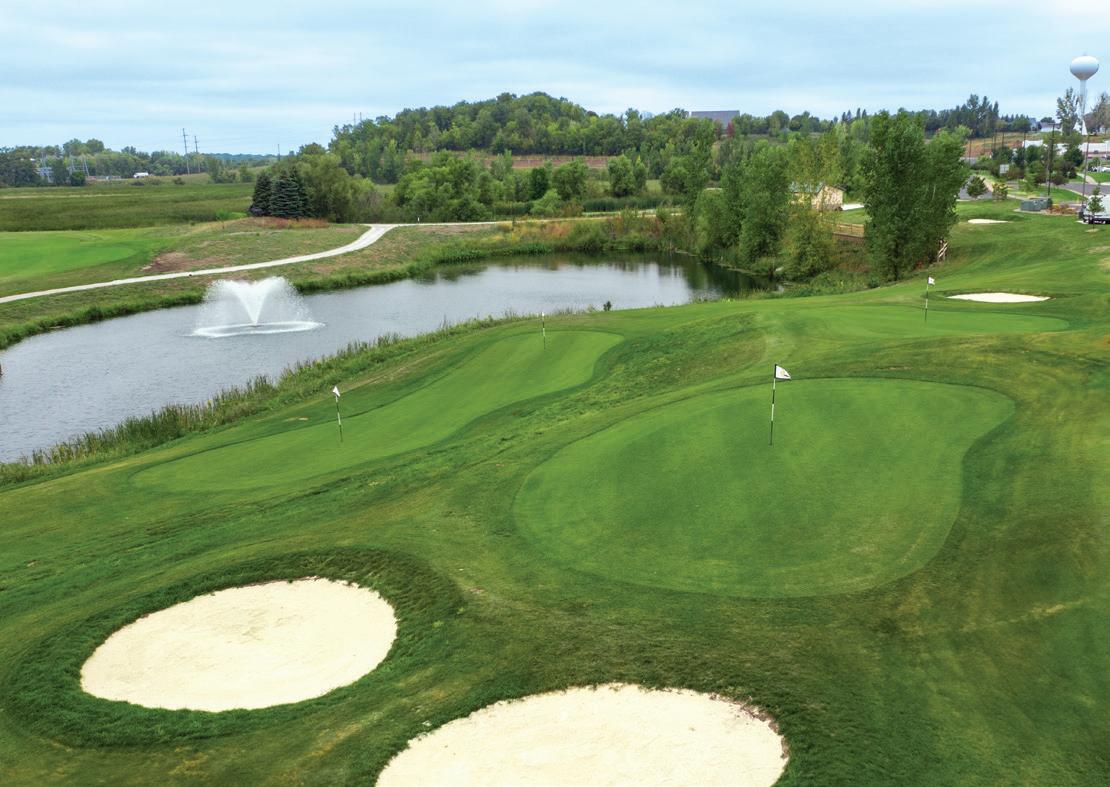
The Meadows at Mystic Lake continued to build on that momentum with an expansive improvement project that was highlighted by the course’s upgraded practice facility. The “Mesa” practice area features four different practice greens for chipping, 30-60-yard pitch shots, and bunker practice.
“Having a short-game area has become a focus for a lot of instructors and golfers, since that is the majority of shots people take in the game,” said Mike Luckraft, director of golf at The Meadows at Mystic Lake. “Our new practice facility offers more realistic scenarios for golfers. It’s a huge opportunity for junior golfers to learn about golf and for avid golfers to focus on hitting bunker shots, 30-60-yard pitch shots, and enjoy a beautiful opportunity to play and practice.”
The other changes to the course built on The Meadows at Mystic Lake’s strong sequence of finishing holes.

Improvements included:
� Adding tee space, playing variety and challenges, and aesthetic improvements to the par-3 17th hole.
� Enhanced construction technologies to ensure the stability of the timber wall along the approach area fairway and green.
� A distinct new bridge from the 18th green to the clubhouse.
In addition to the course’s physical upgrades, The Meadows at Mystic Lake continued to host a variety of prolific tournaments year in and year out with the Land O’Lakes Legends Classic highlighting the competition calendar in 2021 and 2022. Many of the greatest players in LPGA history teed up to showcase the unique, challenging, and scenic golf experience at The Meadows at Mystic Lake.
LPGA and World Golf Hall of Famer Juli Inkster won the inaugural event in 2021 and successfully defended her title the following year. Both tournament victories saw Inkster best the runner-up by a single stroke.
“I really enjoyed being back in Minnesota. [The Meadows at Mystic Lake] was in fabulous shape and really fun to play,” Inkster said after winning her second Land O’Lakes Legends Classic title. “The fans came out to watch, which is always appreciated.”
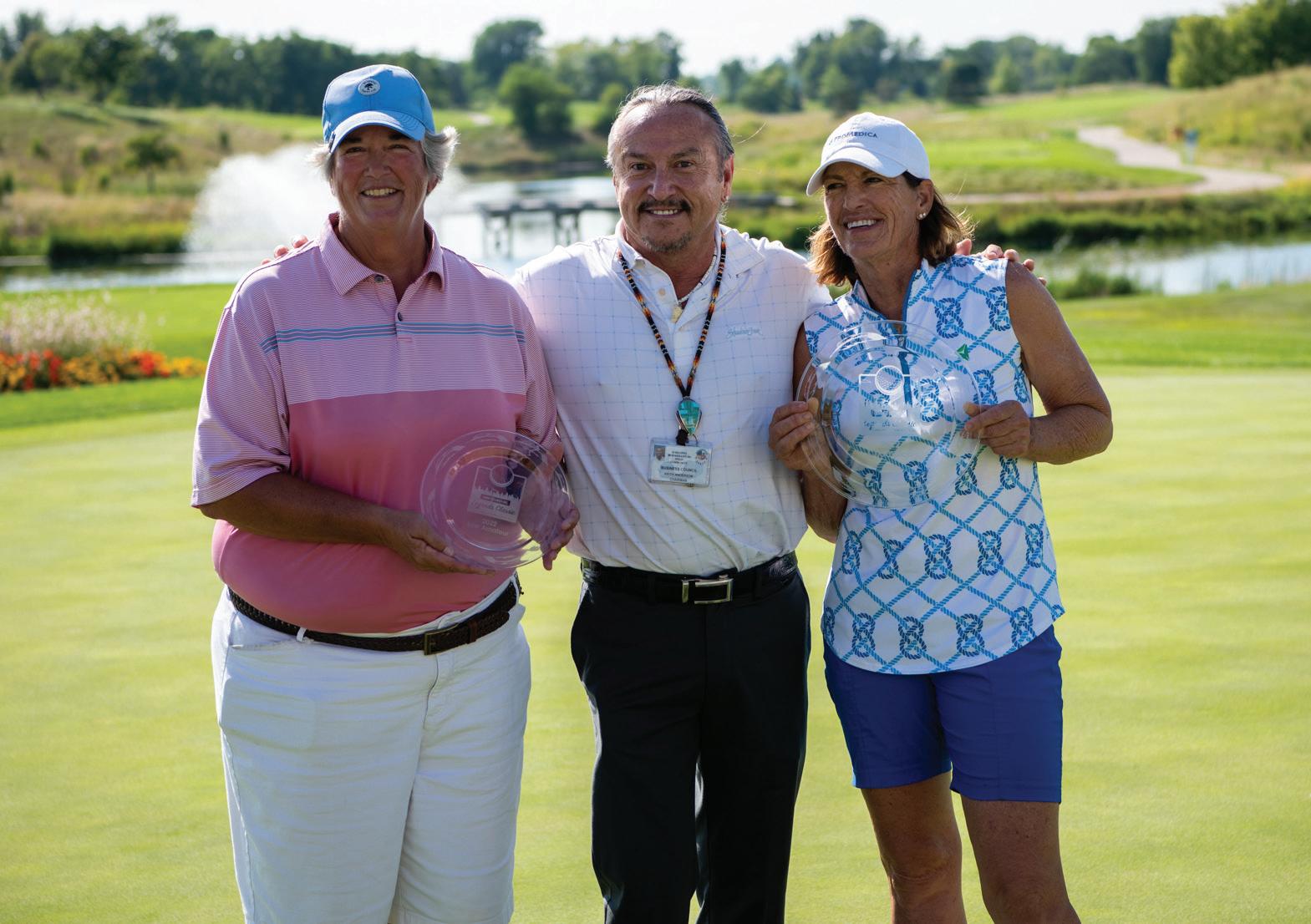
To help meet the needs of the Community as it continues to grow, the SMSC made significant progress in the past four years toward improving and creating additional park spaces for tribal members to enjoy.
The additions and improvements led to an increased use of the parks, from casual youth play dates to organized Community programming. In July 2022, a new program called Pop-up in the Park was offered to Community Members to get outside and enjoy the outdoor spaces and parks. By making the parks more appealing and functional, SMSC members were able to spend more time outdoors, engage in physical activity, and foster a sense of Community with family and friends.
Two of the SMSC’s newest subdivisions underwent major improvements and additions over the last four years. Tinta Otunwe, located east of Hoċokata Ti, began building homes in 2019, and in 2021, construction began on the new Community park within the subdivision. The park is now
home to a play structure, picnic shelter, and a skate park. The Inyan Ceyaka Otonwe subdivision near Howard Lake also began building homes in 2019. The following year, the park went under construction, and now offers a picnic shelter and fitness circuit along with natural play elements.

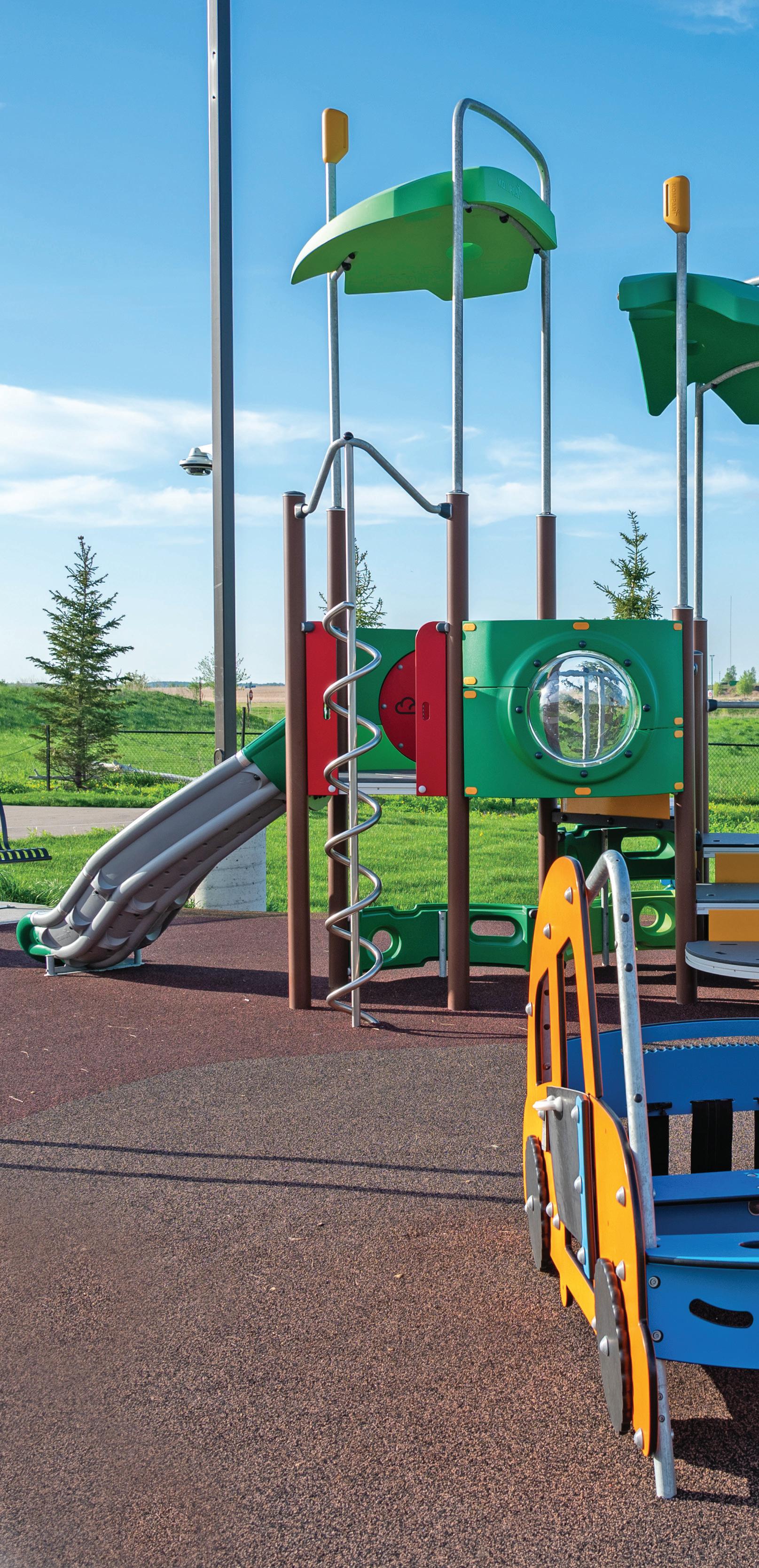
A few other parks have seen enhancements over the years, including Norman Crooks Park and Big Eagles Village Park. In May 2021, renovation on Big Eagles Village Park began, including construction of a new play structure, yoga area, and hammock area. In June 2021, Norman Crooks Park underwent several renovations, including installing a new play structure and zip line, and renovating the existing basketball court. These renovations and updates were completed to attract more families to visit and utilize the park. In 2023, West Woodland and East Village Parks also received updates. Additionally, a facility scheduling functionality was launched in May 2023 for Community Members to reserve the park spaces for free to accommodate family gatherings, picnics, graduation celebrations, and more.



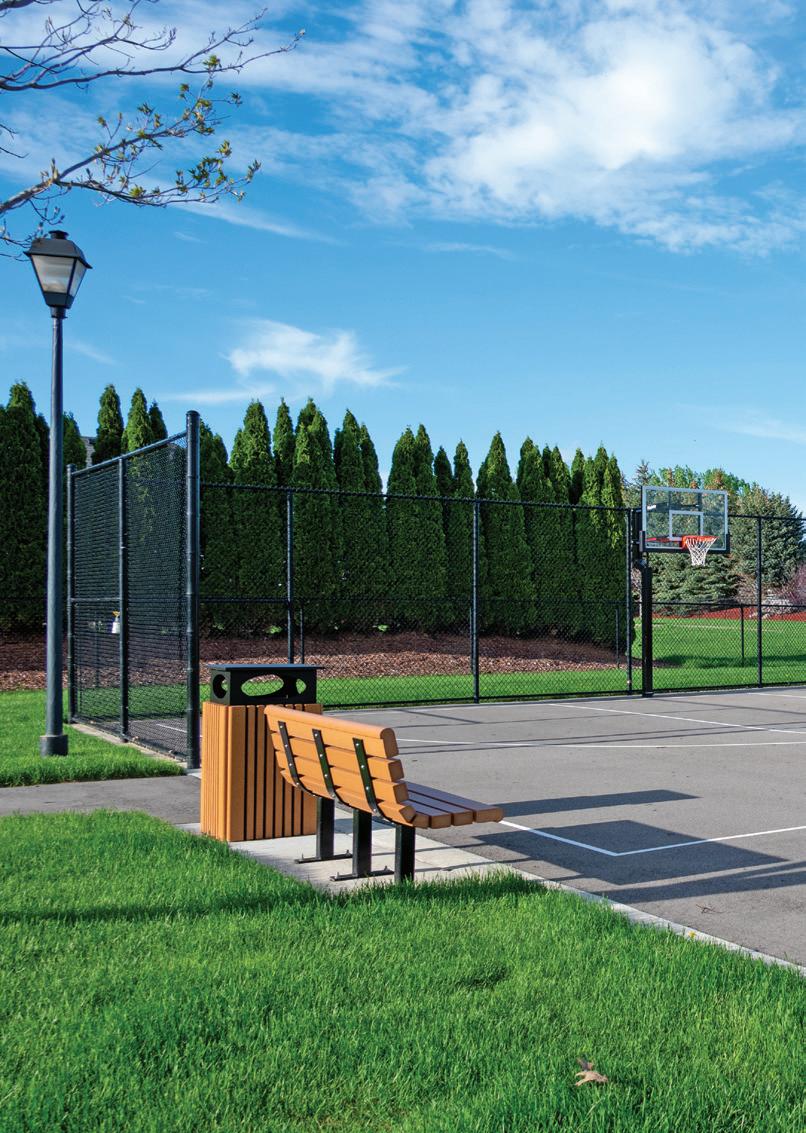

Since 2020, the SMSC Gaming Enterprise has continued to evolve to maintain its standing as a premier entertainment destination in the Upper Midwest. Successfully positioning the gaming and non-gaming operations throughout the pandemic, celebrating two milestone anniversaries in 2022, and adding two new gaming options, the enterprise continues to give guests reasons to call Mystic Lake and Little Six their favorite gaming destination.
Throughout the COVID-19 pandemic, decisions for the operation of the enterprise were guided by the need to keep Community Members, team members, and guests safe and healthy. For over two months in 2020—from March 18 through May 25—the Gaming Enterprise closed as a precaution to keep everyone safe and plan for how to operate the properties in a pandemic. Both casinos reopened in phases and with several safety measures in place, including occupancy limits, mandated temperature-taking and mask-wearing, social distancing, plexiglass protection, and sanitization of surfaces to protect employees and guests from the transmission of COVID-19. The hotel, concert and entertainment venues, and amenities such as restaurants, bars, and the hotel pool reopened as well at various times and in various capacities throughout 2020.
For the health and safety of guests and team members, the Gaming Enterprise introduced a new smoking policy during the pandemic that remains in effect today. Smoking is no longer allowed at Little Six Casino and Mystic Lake Casino Hotel except for within designated interior smoking lounges and select areas outside.
Like many other organizations across the country, the Gaming Enterprise also managed through a changing and challenging labor market. Staff from throughout gaming operations stepped up to ensure that guests received the same level of service at the casinos and hotel that they have come to expect. Significant efforts were undertaken by Human Resources and hiring leaders to retain existing team members and attract new talent.
Mystic Lake Casino Hotel and Little Six Casino celebrated milestone anniversaries in 2022. Both enterprises marked the occasion with special giveaways and events as Mystic Lake Casino Hotel celebrated its 30th anniversary and Little Six Casino celebrated its 40th anniversary.
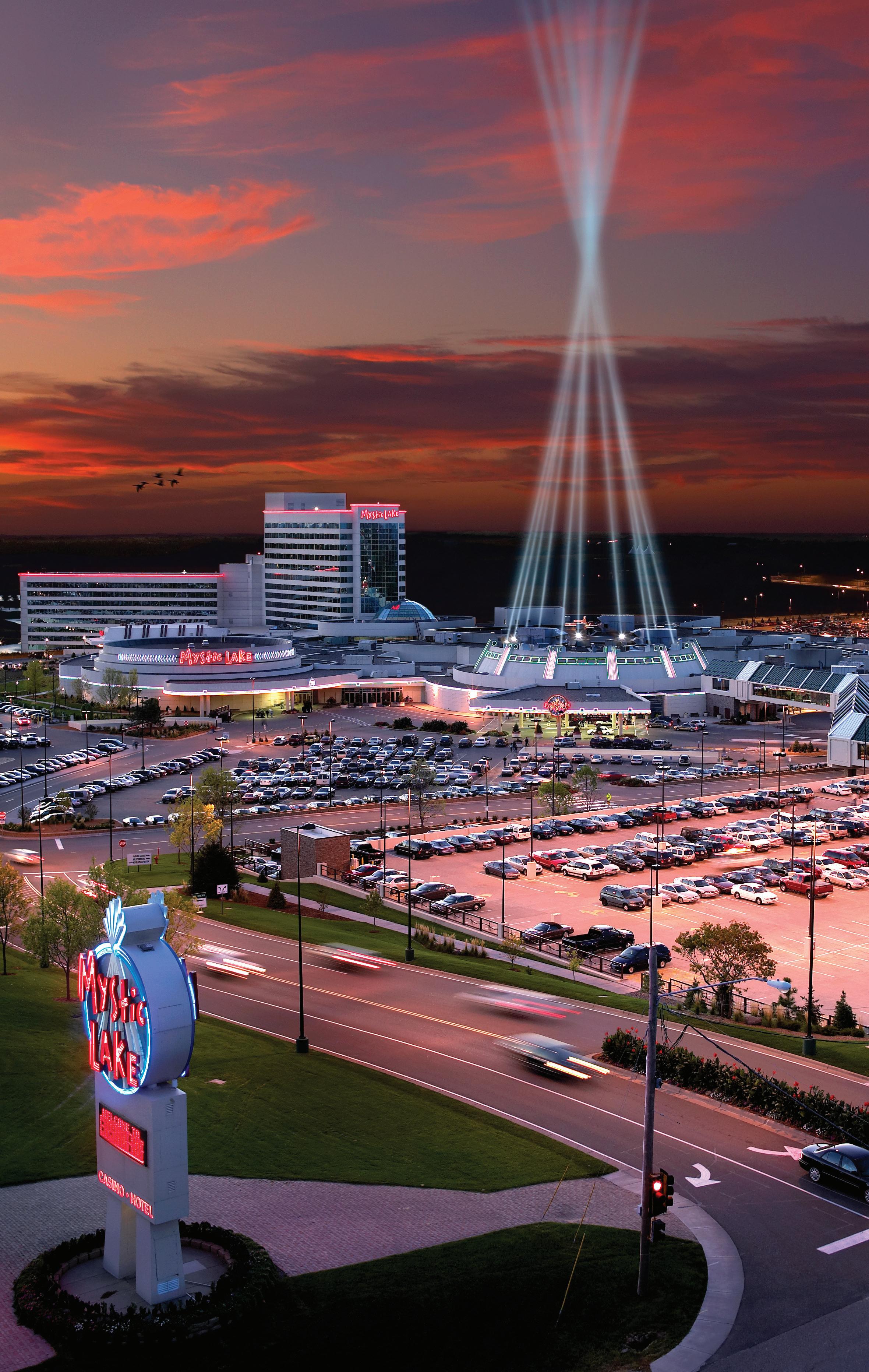
The SMSC began its gaming operations in 1982 when Little Six Bingo Palace opened its doors to the public. In 1991, construction began on Mystic Lake Casino. Both facilities have continued to evolve over the years to become a popular destination for guests from across the Midwest who want to enjoy great entertainment, exciting gaming, and an array of dining options. The growth of the Gaming Enterprise has led to decades of economic success for the SMSC.
Mystic Lake Casino Hotel and Little Six Casino continue to evolve as new gaming technology emerges and the preferences of guests change. In 2022, the casinos introduced new interactive electronic table games, adding another level of excitement. Interactive electronic table games like video baccarat and craps offer guests an ability to play multiple games at once, select a wide range of betting options, and let everyone play at their own pace. In 2022, the introduction of blackjack side bets and progressive side bets also brought an added level of excitement by giving players more chances to beat the odds and win big by matching certain card combinations.
In a yearslong effort led by the SMSC, Minnesota tribes scored an important victory in 2023 when the Minnesota Legislature clarified restrictions on electronic pull tab games. The law was the result of strong partnerships and extensive work by the SMSC, Minnesota Indian Gaming Association, and the state’s tribes.
In late 2019, the SMSC filed a legal challenge against the Minnesota Gambling Control Board for improperly approving electronic pull tab games that violated the intent of 2012 legislation that authorized the games. At the center of the dispute was an “open-all” feature that mimicked slot machines on some games.

The SMSC challenged an administrative law judge decision to the Court of Appeals, which ruled in February 2023 that the board improperly approved the games.
As a result of the ruling and education efforts by the SMSC, the Minnesota Legislature passed electronic pull tab reform in May 2023 that honors the original intent of the 2012 law. The legislation underscores that electronic pull tabs shall not mimic slot machines and no games can use an “openall” feature which reveals all of a player’s chances at once or other “slotlike” components. The law was an important clarification that protects tribal gaming and the revenues which support critically important tribal government services.
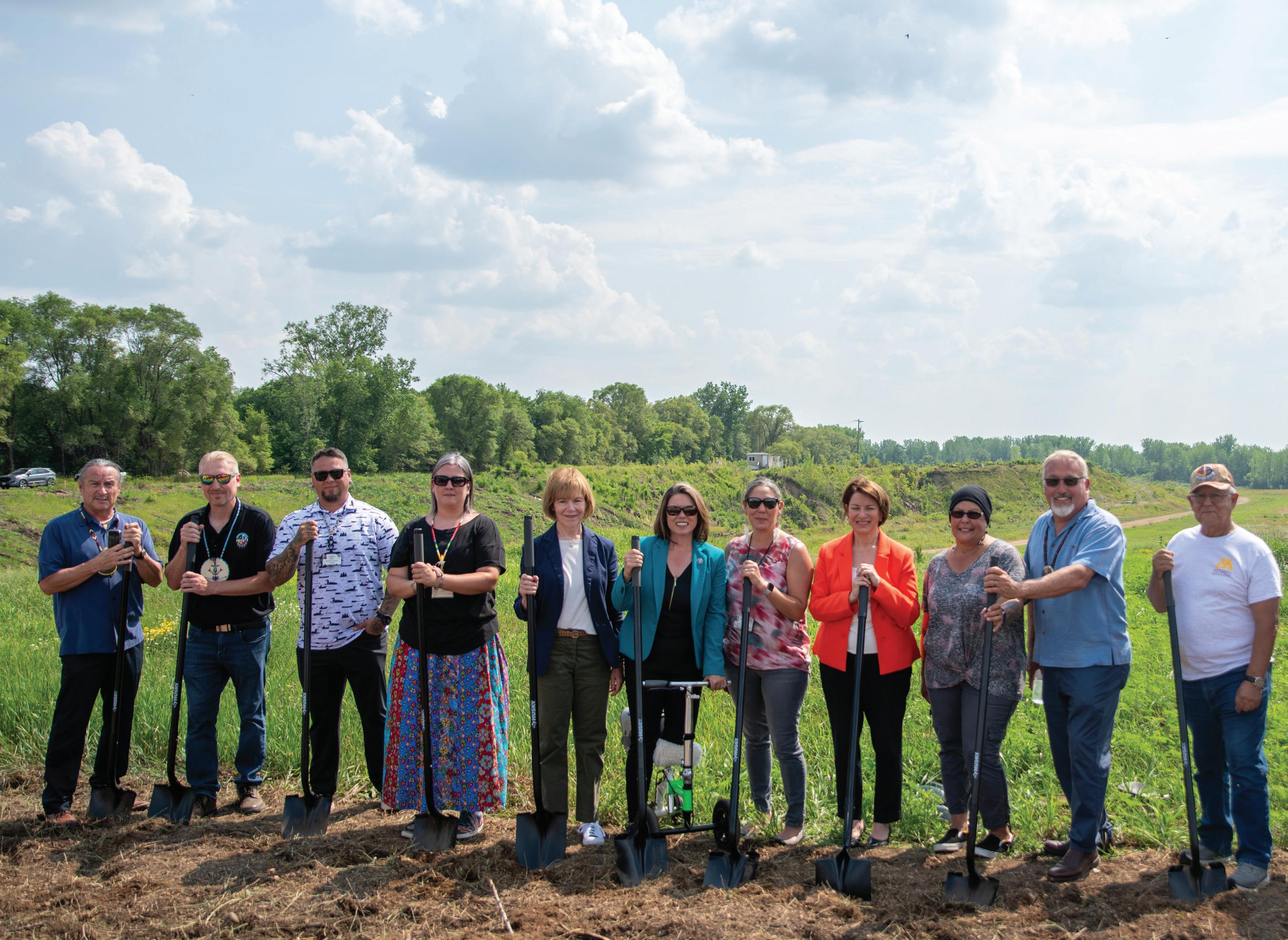
To expand its capacity to turn more organic waste into compost, the SMSC started the process of building a new Organics Recycling Facility southwest of the current enterprise’s location in Louisville Township. Located adjacent to the Minnesota River in Shakopee, the project’s 93-acre site resides near Highways 169 and 41. Construction on the new facility began in June 2023 and is expected to be completed by the end of 2024.
On June 27, the SMSC broke ground on the new site, Dakota Prairie Composting. There to witness this momentous occasion included many distinguished speakers and guests including members of the Business Council, Community Members, Scott County Commissioners, the mayors of Shakopee and Prior Lake, local city council members, as well as United States Senators Tina Smith and Amy Klobuchar, United States Representative Angie Craig, and Executive Director of Tribal Relations for Governor Tim Walz’s office Patina Park.
Chairman Keith Anderson stated, “In Dakota culture, the connection to our relatives the land, water, plants, and
animals is vital to the well-being and spiritual health of the Community. We are caretakers of Mother Earth and have a responsibility to preserve and protect it for future generations.”
The tribe has operated the SMSC Organics Recycling Facility on trust land since 2011, but the new larger facility will meet the increasing demand for both commercial and residential composting needs, especially in the Twin Cities metro area. After several years of research and site visits across the country, the new site was designed to incorporate the latest state-of-the-art technology and processes to greatly reduce odors and increase efficiency. The new facility will collect and recycle commercial and residential
organics, and sell landscaping products such as compost, compost blends, and mulch.
To accommodate the needs of the new site, a number of existing buildings were demolished, the project area will be regraded, stormwater retention and infiltration basins will be constructed, and the entire processing area will be paved.
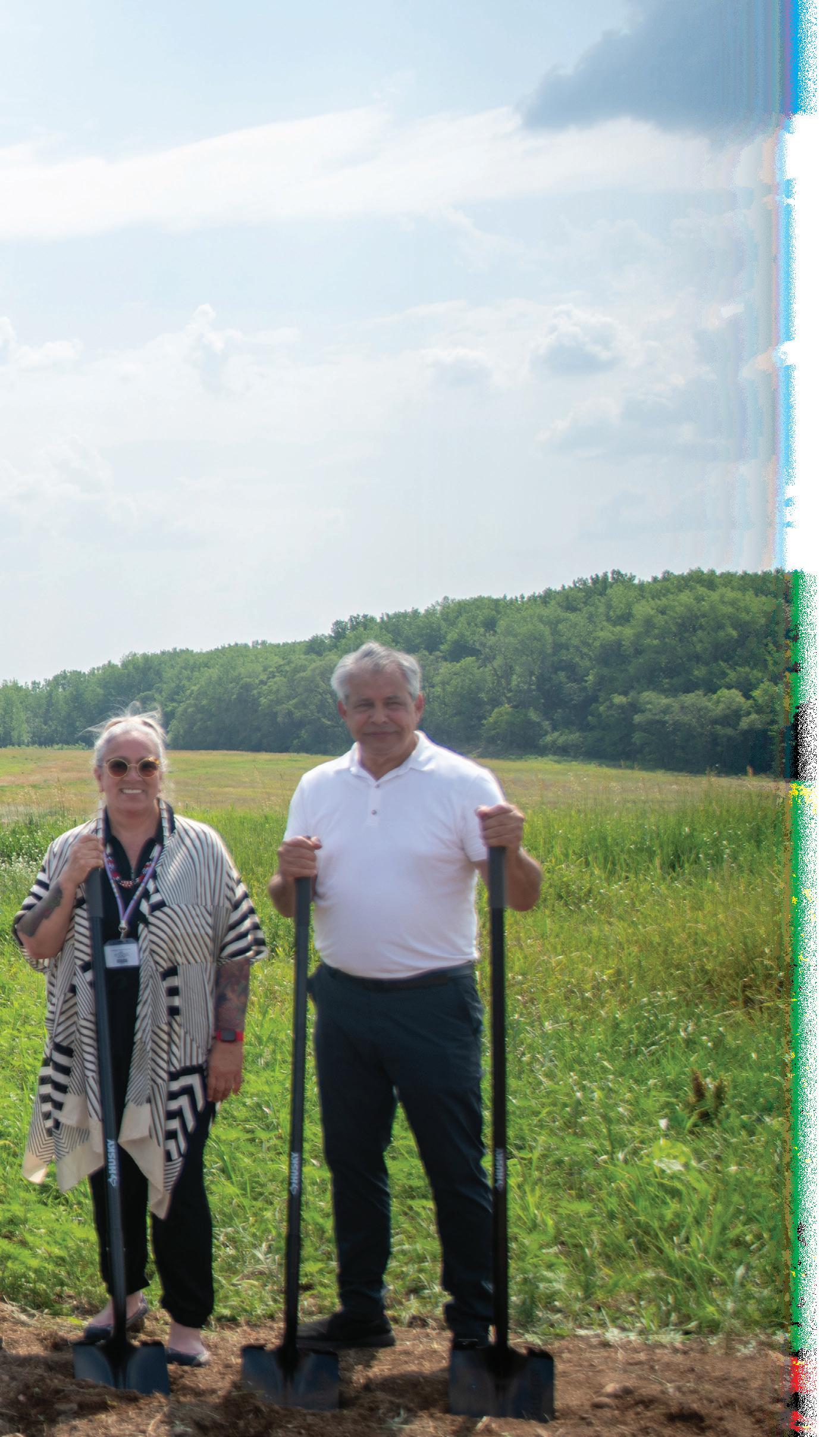
A number of upgraded features will also be present at the new location, such as a de-packaging machine (one of very few currently in operation in the state of Minnesota). This machine allows staff to take in packaged food waste, including expired or recalled foods, which would normally
the packaging recycled or sent to a landfill.
The Dakota Prairie Composting facility will also have a high-tech Aerated Static Pile (ASP) composting system which is comprised of sets of concrete bunkers with aerated floors. The ASP has the ability to exhaust all of the process air through a biofilter system which reduces odor and the whole system (the concrete bunkers) helps speed up the composting process. The new facility will also include roll-off dumpsters for organics pick-up services.
the existing facility.
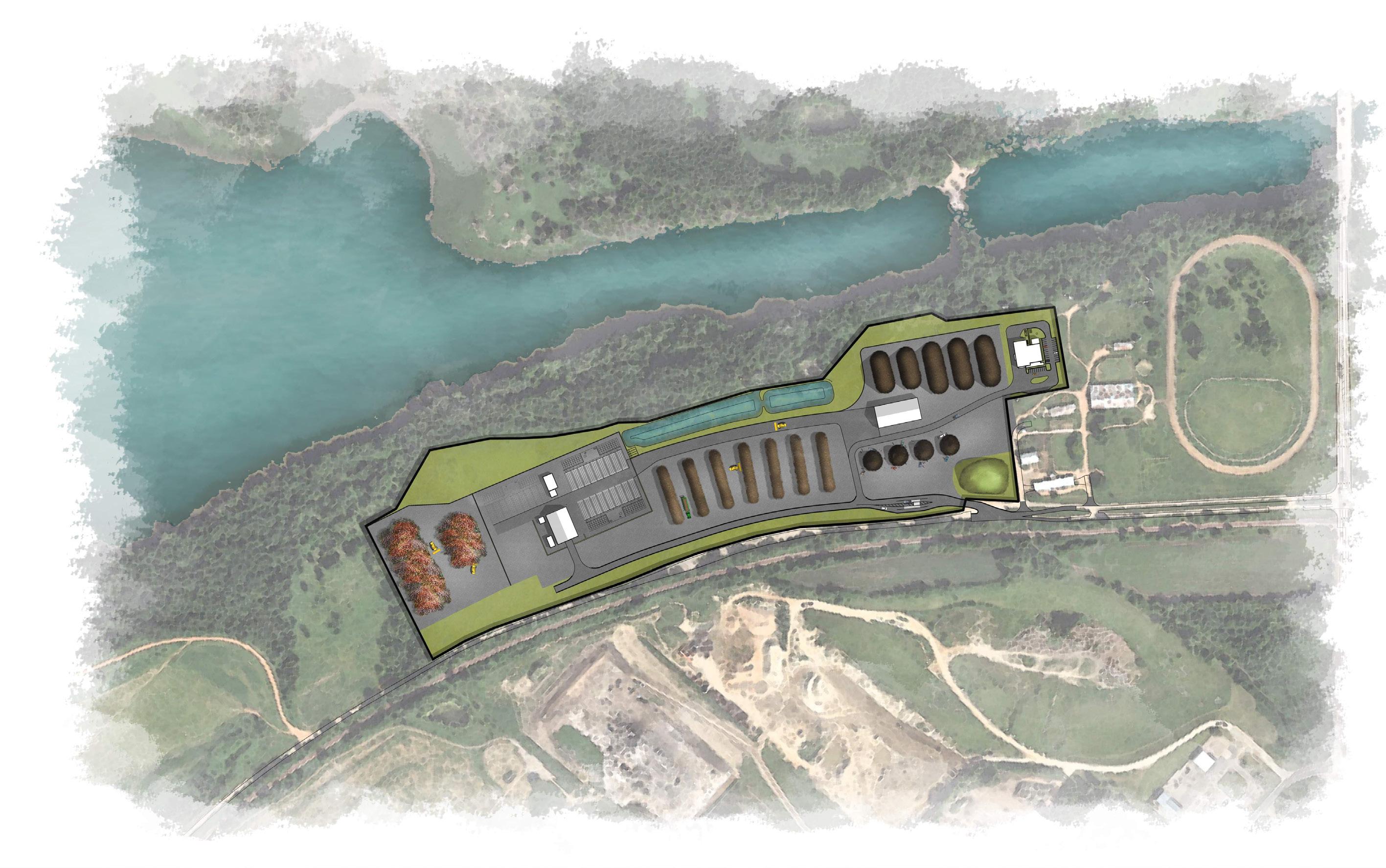
Once the new facility is operational, it will have the capacity to compost up to three times as much food waste as the previous facility. This will help contribute to the Minnesota Pollution Control Agency’s (MPCA) goal of recycling 75% of Minnesota’s waste by 2030. The new facility will be regulated by the MPCA, the entity that regulates all composting facilities in Minnesota.
Ahead of the new facility’s opening, the SMSC will continue to prepare the site by funding and making improvements to the roads in the immediate vicinity. The new site is set to open by the end of 2024, pending the arrival of the specialty equipment needed to make the new facility fully operational. A gradual closure of the old site will follow, to
For the Mdewakanton Dakota, looking ahead for the next seven generations is an important way of life. Conserving and protecting Ina Mak̇a (Mother Earth) today ensures that there will be trees, natural savannahs and prairies, clean waterways, traditional wild foods and medicines, and land for future generations to thrive.
The Bureau of Indian Affairs (BIA) approved the Hiŋhaŋkaġa trust application on July 1, 2022. After nearly two years, the 294-acre parcel officially moved into trust status. This resulted in the SMSC having more than 3,400 acres of land in Scott County in trust, which equates to approximately 59% of the tribe’s total 5,833 acres.
The Hiŋhaŋkaġa parcels are located within the cities of Prior Lake and Shakopee and are adjacent to existing tribal trust and reservation lands to the north and the west. The name Hiŋhaŋkaġa refers to the presence of owls, which may be seen or heard when visiting the land. The parcels also feature mature woodlands, rarely seen in this area.
In addition to the natural features, the Hiŋhaŋkaġa parcels contain five rural single-family homes and six storage buildings. These storage facilities are used for SMSC storage of land maintenance and natural resources management equipment.
The SMSC has applied for trust status on another large parcel package which is currently being reviewed by the BIA. If approved, the SMSC’s Inkpata (meaning the high point of a location) fee-to-trust application will convert 796 acres into trust. If this application is approved it would mean the SMSC will have more than 4,232 acres, or about 72% of the tribe’s 5,833 acres of land in Scott County in trust.
These parcels were purchased by the SMSC to serve the long-term needs of the Community. They are located within the cities of Prior Lake and Shakopee and are adjacent to existing tribal trust and reservation lands to the north, south, east, and the west.
The Inkpata lands are diverse natural areas with a mixture of lush woodlands, sparse woodlands, oak savanna, wetlands, bluffs, lakeshore, pastures, and prairie. These parcels contain a total of 250-acres of maple-basswood forests; including an expansive 68-acre maple-basswood forest that provides abundant foraging opportunities for various natural medicines and food. In addition to the natural features, the Inkpata parcels contain several rural single-family homes and storage buildings. The storage facilities are used for SMSC Government Services and Departmental Storage.
Bringing this land from fee into trust status is a huge victory for the SMSC. Ultimately, helping to regain the original homelands of the Dakota people. The tribe is grateful for all the help that has been received from the SMSC Land and Natural Resources Department and the SMSC legal counsel, as well as the neighboring local governments—and most of all, the tribe appreciates the BIA taking the time and consideration to approve these applications in a timely manner.
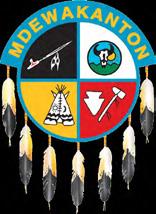
Other highlights from 2020-2023 include:
� In 2019 and 2020, the Community focused on securing critical in-fill properties. Bringing these properties into SMSC ownership creates more opportunity for longterm planning.
� In 2021, the SMSC secured the remaining parcels north of County Road 42 between Mystic Lake Drive and Marschall Road. Those properties include beautiful, wooded acreage with prime hunting grounds, cultivated land, and some commercial buildings.
� Along the Minnesota River, 330 acres of heavy industrial zoned property was obtained to allow for the relocation of the SMSC Organic Recycling Facility as well as bringing new commercial lease revenue.


� In 2022, the Community closed on the largest land acquisition (at the time) with the Theis 2 property, bringing 626 acres of agricultural land into SMSC fee ownership.
� The Malkerson property and Theis 2 properties were some of the largest acquisitions in SMSC history, accounting for 17% of the tribe’s land.
� The SMSC also has an additional 270 acres contracted to close in late 2023 (not accounted for in the map or table).
The Supreme Court recently confirmed that the fee-to-trust process “provides the proper avenue for a tribe to reestablish sovereign authority over territory.” Fee land means it is owned by the SMSC but subject to the jurisdiction of the state, county, and city. This status limits tribal self-determination.
Trust land is land that the U.S. government has taken ownership over specifically for a Native American tribe. The purpose is to restore lands that were historically taken from or lost by tribes, and to permanently protect those lands from similar loss. This status brings the land into the governmental control of the tribe and provides the best protection that the land will be available for the tribe’s future generations.
In the last four years, the SMSC transferred one of the largest land parcels in its history into trust status.
� Hiŋhaŋkaġa (294 acres): Approved in 2022


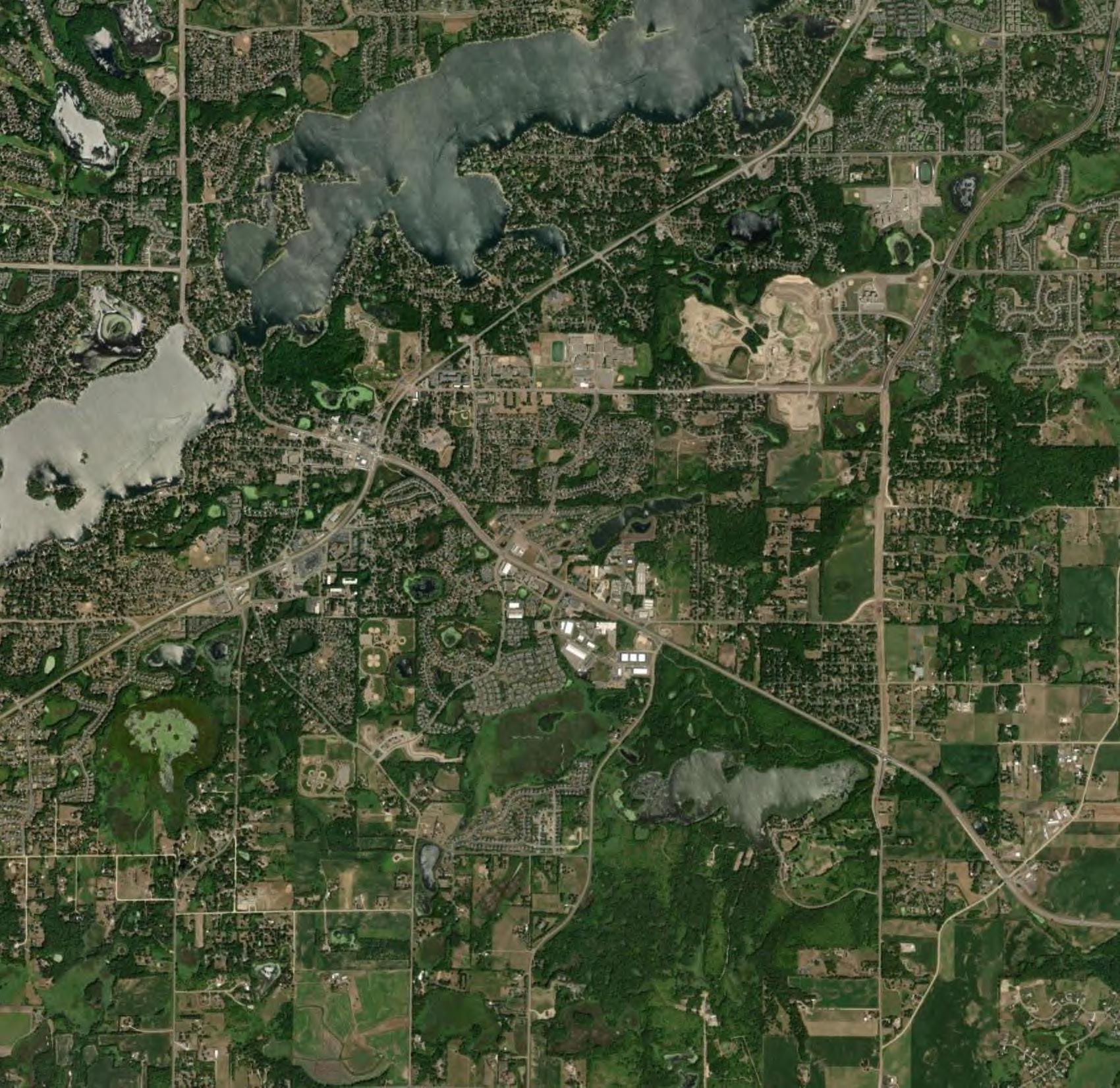



Fee Trust

Newly Acquired New Acquisition and New Trust New Trust
As a sovereign nation, the SMSC has built valuable partnerships and governmentto-government relationships with federal, state, and local levels of government, as well as neighboring cities and organizations. Placing a high value on collaborative and mutually beneficial agreements, the SMSC has helped bolster the local economy, build strong alliances with its neighbors, and foster greater understanding of tribal sovereignty.
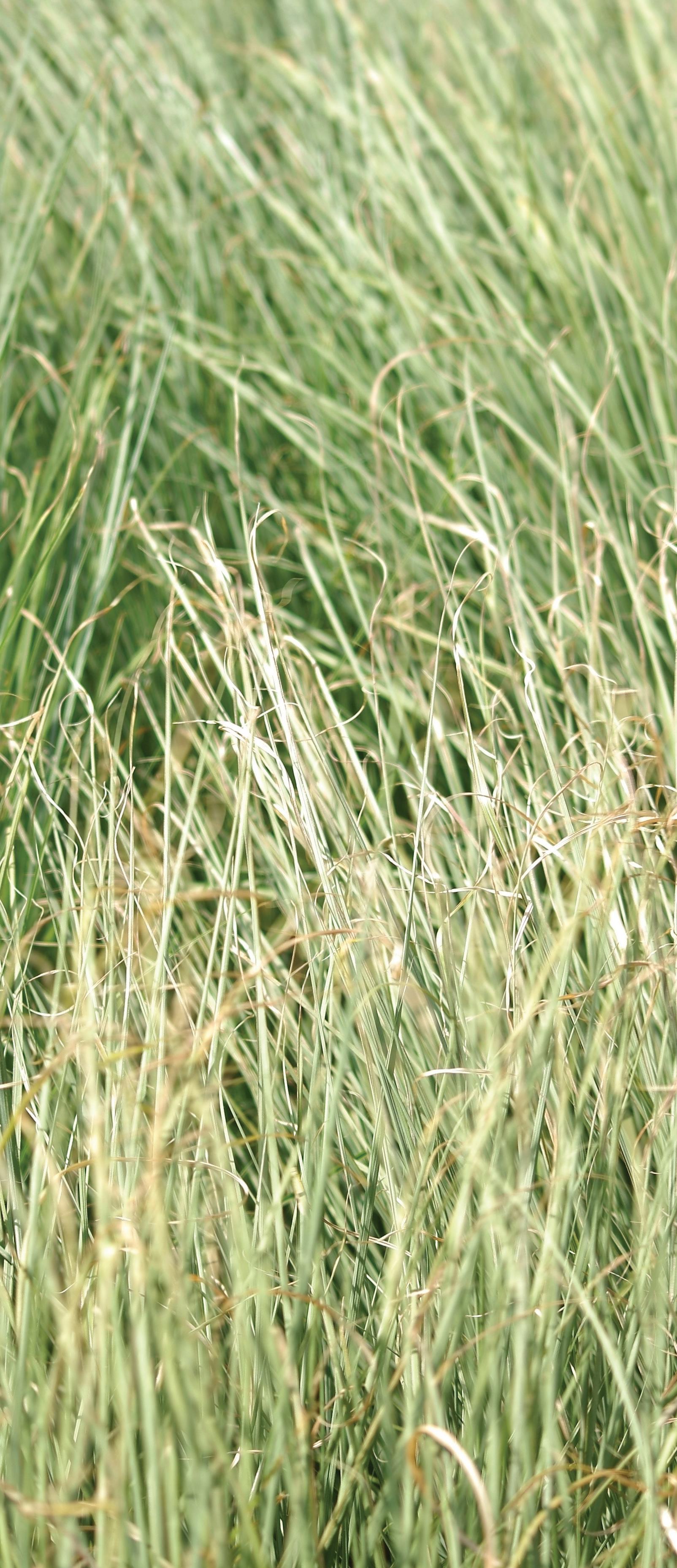
In January of 2021, the SMSC announced its investment in Windward Engineers & Consultants, an engineering firm headquartered in Minneapolis with a focus on technical excellence. This collaboration was created to deepen the impact of real estate projects throughout the SMSC and nationally by bringing in design and construction expertise. The partnership also enables the firm to expand into tribal markets and serve tribal governments and their enterprises, while offering new clients engineering and real estate consulting services that help them achieve their diversity goals and broaden capital spending opportunities within their supply chains.
Included in this partnership were the architectural firm NELSON Worldwide and Jason Booth, a Turtle Mountain Chippewa member, business owner, and now Windward

president, with experience in tribal development and corporate supplier diversity.
Windward Engineers & Consultants has been integral in creating an energy improvement plan at the SMSC, which resulted in energy and GHG emissions reductions in 19 buildings, including Mystic Lake Casino Hotel, Little Six Casino, Mystic Lake Center, Shakopee Dakota Convenience Store, Dakotah! Ice Center, Hoċokata Ti, and more. This plan highlights energy savings options to help the SMSC reduce consumption by 50% and limit carbon emissions.
“We look forward to leveraging their expertise to enhance the work we do within our community and across Indian Country,” Chairman Keith B. Anderson said on the collaboration with Windward and NELSON.
In 2012, the SMSC and Canterbury Park signed a cooperative marketing agreement that would mutually benefit both the tribe and Canterbury. The tribe and the track collaborated in a number of ways during the agreement, with the SMSC providing funding for horseracing purse enhancement and other marketing efforts for the track.
The agreement provided marketing opportunities for the SMSC and allowed Mystic Lake Casino Hotel, Little Six Casino, and other SMSC enterprises to promote their services and offerings to the fans who visit the Shakopee track on race days.
Another outcome of this partnership was the annual Indian Horse Relay. The event—which showcases high-speed bareback relay racing, with Native riders leaping from horse to horse—began in 2013 when the SMSC was invited to the Apsaalooke Crow Nation in Montana to see their Native American horse racing event. This inspired the SMSC to host its own event at Canterbury Park and bring the culture and tradition of this exciting event to a bigger stage in the local area. The relay—which continued through 2021—enjoyed great success as a cultural exhibition and brought together racers and spectators from across the country every year. In conjunction with the event, Native vendors displayed and sold crafts, jewelry, beading, and artwork at the racetrack.


The SMSC and Canterbury marketing agreement came to an end on December 31, 2022, after 10 years of the SMSC’s good faith efforts and financial support that attempted to help stabilize the beleaguered horse-racing industry in Minnesota.
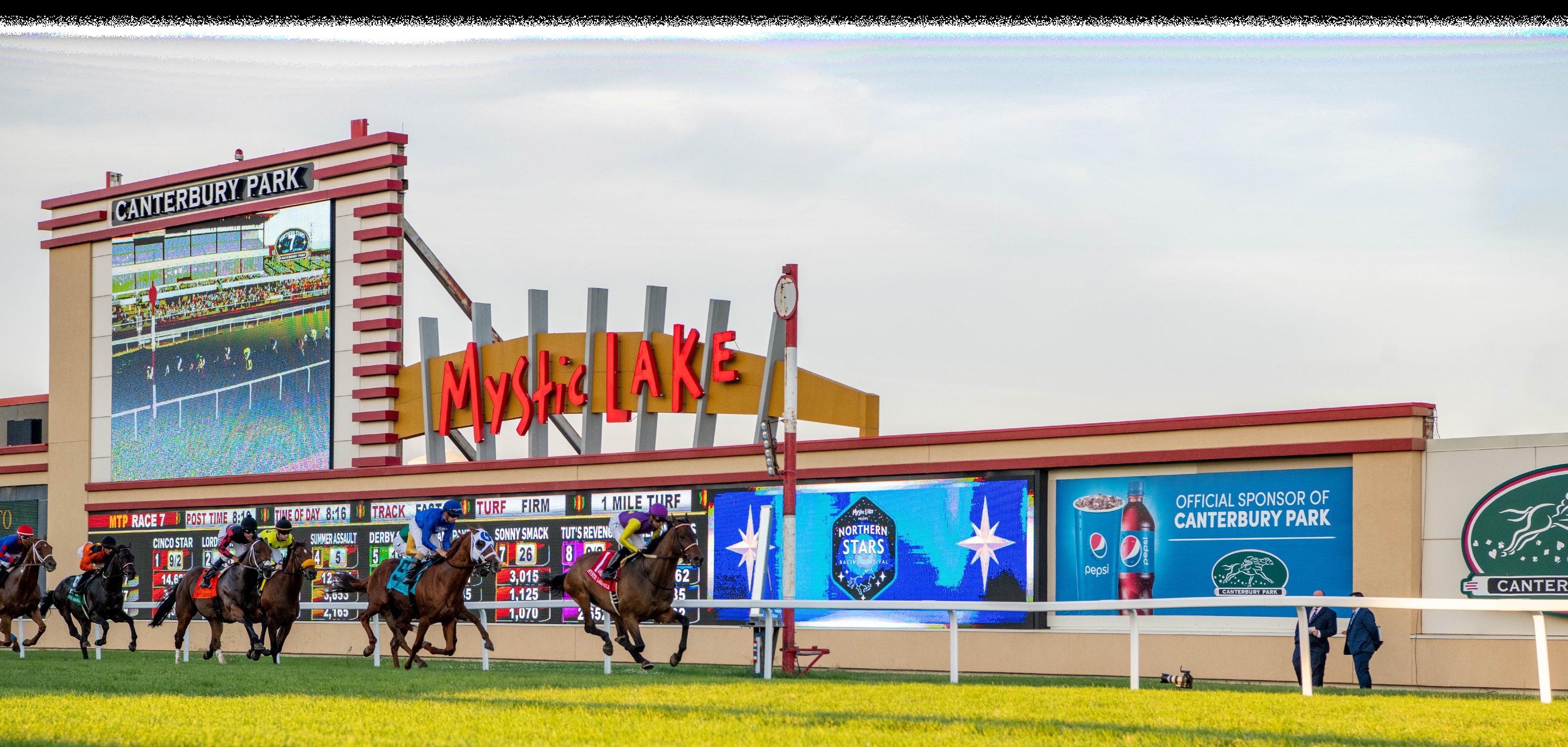
Due to the changing biomass energy market, the SMSC made the decision in December 2020 to sell its stake in Koda Energy. The successful partnership between the SMSC and Koda Energy lasted over a decade, but several developments led to the decision to end the investment. Those factors included lower natural gas prices which was not beneficial to Koda Energy’s financial model, advances in solar and wind energy made those forms of renewable energy more attractive than biomass, and the end of a 10-year electrical power purchase agreement with Xcel Energy.
“Koda Energy has provided environmentally friendly energy for many years—which is something to be proud of. But the market has changed and this investment no longer makes sense for our tribe,” said Chairman Keith Anderson.
Rahr Malting Corporation purchased the remaining equity shares from the SMSC, making them the sole owner of the biomass energy facility near downtown Shakopee. The plant provides all of the electrical and thermal needs for the company’s malting processes.

Supporting Native Students’ Pursuit of Higher Education

Each year, the SMSC funds several educational initiatives, including an endowed scholarship fund at the University of Minnesota. Established through a $2.5 million donation in 2009, the SMSC Endowed Scholarship program supports talented Native American students with financial need who are seeking undergraduate and graduate degrees from the University of Minnesota.
In recognition of the program’s 10th year, and to extend support to scholarship recipients after graduation, an alumni event was created for SMSC scholars who received their education at the University of Minnesota. The kickoff event took place in February 2020 at the SMSC’s Mystic Lake Center in Prior Lake, Minnesota, where dozens of scholars gathered for networking, dinner, and conversation. The reunion event featured a keynote from Native author
Edgar Villanueva, who discussed his book Decolonizing Wealth: Indigenous Wisdom to Heal Divides and Restore Balance. Scholars were also able to engage in a question-and-answer session with Villanueva during the event. The alumni event represents the SMSC’s latest effort to ensure that Native students receive the support they need to succeed—both academically and professionally.
“The endowment will provide opportunities for more Indian students to seek out a college education at the university so that they can better serve their tribal communities,” the late SMSC Chairman Stanley R. Crooks said in 2007 at an inaugural ceremony. Since its inception, more than 200 students have received this scholarship, representing more than 40 tribal nations.
Thank you for your outstanding commitment to student scholarships at the University of Minnesota. Because of your generosity, our talented, curious, and driven students are able to participate fully in University life, developing their skills in classrooms, labs, libraries, and studios. These scholars will become tomorrow’s leaders—thanks to you.”
— Michelle Lian-Anderson, Chief Development Officer, University-Wide ScholarshipsFounded in 2017, the Native Farm Bill Coalition (NFBC) brings together tribes, intertribal organizations, and other Native organizations around the country to advocate with a strong, unified voice for Indian Country’s interests in the Farm Bill. The NFBC—a joint project of the SMSC, the Intertribal Agriculture Council, the National Congress of American Indians, and the Indigenous Food and Agriculture Initiative—represents the largest-ever coordinated effort in Indian Country around federal food, agriculture, and nutrition policy.
The Farm Bill, which is set to renew every five years, is one of the largest pieces of domestic legislation. In fact, the most recent Farm Bill, which was signed into law in 2018, represented $428 billion in farm and food program support. The Farm Bill determines spending and policy in a number of areas important to tribal nations as well as other Americans, including nutrition programs, farming and ranching, forestry, rural development, and more.
“We know and appreciate the fact that tribes need the ability to feed themselves. Without that capability, no tribe can truly be sovereign. Poverty and the loss of traditional foods have led to widespread chronic health problems for Native people. To address these problems, we must strengthen Native agriculture; we must increase access to healthy foods right here in our own tribal communities,” said SMSC ViceChairman and Co-Chair of the Native Farm Bill Coalition Cole Miller.
As one of the leaders of the Coalition, the SMSC organized the first-ever Native American Food Fair on Capitol Hill at the National Museum of the American Indian in the spring of 2023. The event featured food from Native producers prepared by a Native chef to bring attention to Indian Country’s agricultural importance. The event also served as a backdrop to educate Congress on the Coalition’s policy priorities for the 2023 Farm Bill. Over the course of several months in early 2023, the Coalition organized a series of “fly-ins” for tribal leaders and Native producers across the country to talk directly with members of Congress and the
Biden Administration. Coalition members advocated for policy changes that can positively impact Indian Country, such as strengthening tribal self-governance, allowing tribes to manage nutrition programs, and investing in economic development opportunities in rural communities.
As one of the leaders of the Coalition, the SMSC organized the first-ever Native American Food Fair on Capitol Hill at the National Museum of the American Indian in the spring of 2023. The event featured food from Native producers prepared by a Native chef to bring attention to Indian Country’s agricultural importance. The event also served as a backdrop to educate Congress on the Coalition’s policy priorities for the 2023 Farm Bill.
SMSC Vice-Chairman and Co-Chair of the Coalition Miller shared his vision for the Native Farm Bill Coalition to tribal leaders and Native producers at the Intertribal Agriculture Council’s Annual Conference in December 2022. “Tribes cannot be truly sovereign unless we are also food sovereign,” said Vice-Chairman Miller. “Together, we must insist that the United States fulfills its treaty-based trust obligations to ensure that every Native community is food self-sufficient and economically self-reliant.”
Visit nativefarmbill.com for the latest updates on Farm Bill negotiations in Congress.
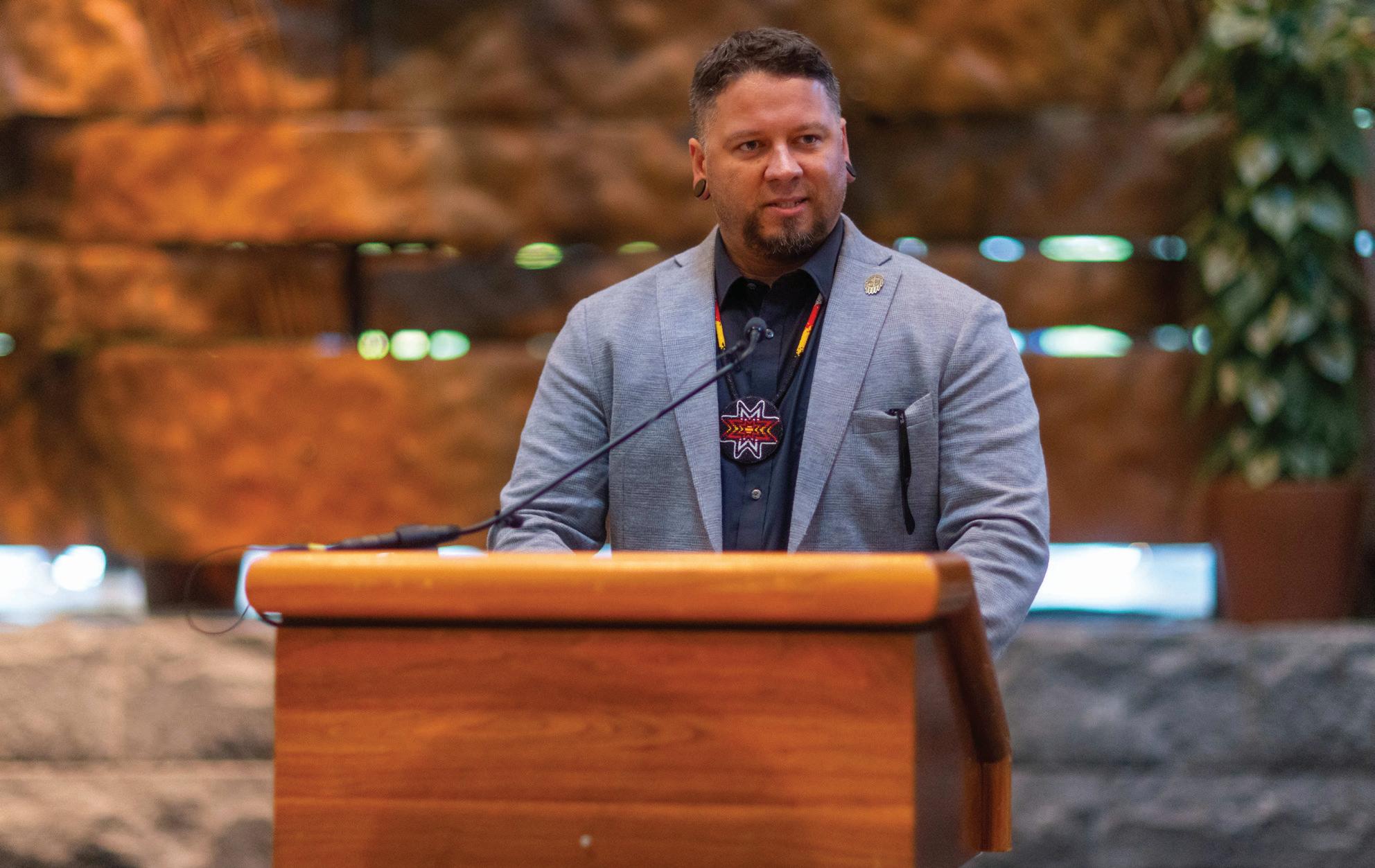
In 2021, the SMSC along with the city of Shakopee, Scott County, the Scott County Historical Society, Three Rivers Park District, and the Minnesota Department of Natural Resources announced plans for the Shakopee Riverfront Cultural Trail, a 2.5 mile strip which highlights Dakota history and early European settlements that took place along along the Minnesota River. The groups continue to collaborate today to bring this trail to life which will stretch from the Holmes Street Bridge in downtown Shakopee through The Landing: Minnesota River Heritage Park.

Plans call for nine “experiential zones,” each featuring kiosks with written information and artwork that reflect the trail’s theme, “many people, many paths, one river.” In addition to providing funding for the project, the SMSC is also assisting with the development of informational signage. Written elements will be multi-lingual and include Dakota.
“It is important to have a well-rounded, accurate portrayal of history. The Shakopee Riverfront Cultural Trail will be a way to build understanding of cultures,” Chairman Keith Anderson said in a statement when the trail was announced.
The Dakota people will be heavily featured on the trail. Topics will include life in tiŋta otuŋwe, interactions with settlers, consequences of land loss and removal for the Dakota people as well as the Communities’ resilience and continuing presence, and indigenous agricultural and food practices.
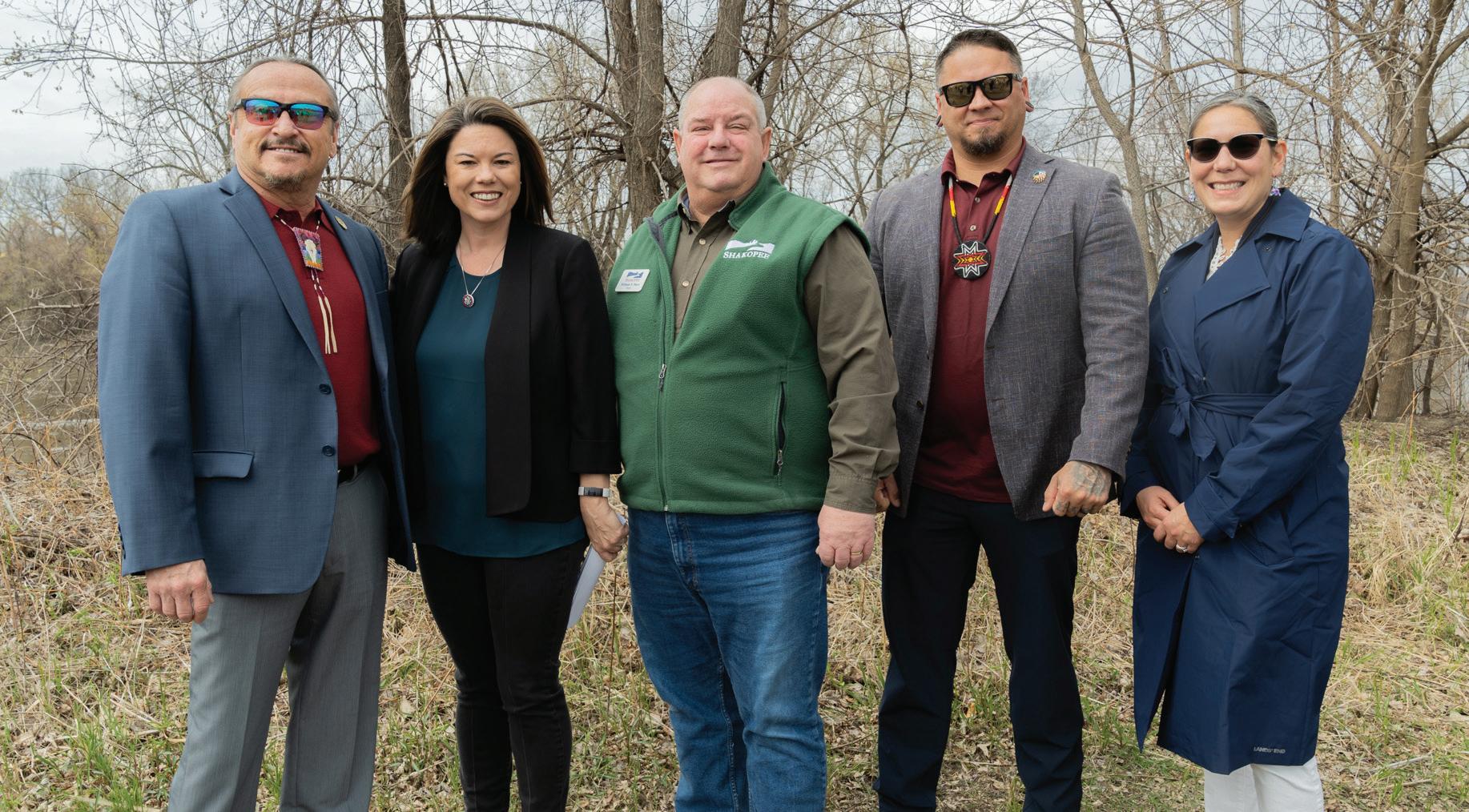

Being a good steward of the earth and protecting its natural resources for generations to come is at the heart of the SMSC’s core values. From 2020-2023, the tribe continued to expand its environmental sustainability efforts by investing in ecosystem preservation efforts, expanding its NativeGreen initiative, and developing a comprehensive sustainability plan to help the Community achieve carbon neutrality by 2035.

Caring for Ina Maka—Mother Earth—is at the heart of the SMSC’s values. With the next seven generations in mind, the SMSC has continued to work toward carbon neutrality and reducing the tribe’s carbon footprint through the environmental stewardship program, NativeGreen.
Introduced in December 2017, the Community-wide initiative promotes a greener, more sustainable planet for all through conservation, stewardship, and self-sufficiency. For years, the SMSC has promoted and supported environmental initiatives across the reservation as a part of the tribe’s commitment to being a good steward of the earth. Whether it is restoring prairies, forests, wetlands, and aquifers, or encouraging native plants, animals, and insects to make SMSC lands their home, the tribe employs multiple land stewardship programs to help fulfill this mission.

The primary focus of NativeGreen is to protect the environment through key areas including recycling and waste reduction, green energy and the reduction of harmful emissions, efficient water use, and land restoration across the SMSC and the surrounding area. Since its inception, significant strides have been made to reduce environmental impacts, identify operational efficiencies and cost savings, and educate staff and the general public on environmental initiatives. Over the years, the SMSC has diverted more than 95,000 tons of food waste from landfills for composting, reduced regional groundwater use by more than 35 million gallons per year, and donated thousands of pounds of food to help feed Scott County residents, to name a few.
Looking to the future, the NativeGreen initiative will continue to grow as a collaborative effort between Community Members, the Gaming Enterprise, and Tribal Operations. Ranging from energy conservation efforts to award-winning water treatment programs and environmental initiatives, the SMSC is fully dedicated to protecting and preserving the environment for future generations. The
SMSC has drafted a Sustainability Plan and aims to achieve carbon neutrality by 2035. The plan, which was created with the help of Community Members, staff from the Land and Natural Resources Department, and Local Climate Solutions, is grounded in traditional Dakota knowledge and values and informed by innovative practices and technologies. The development of this plan is an important step in providing a framework to realize the SMSC mission and work toward ensuring long-term sustainability.
From recycling and composting programs to energy conservation efforts to land and wildlife preservation, the SMSC is fully dedicated to promoting a greener, more sustainable planet for all—now and for future generations. Here’s a snapshot of some of the noteworthy sustainability successes over the past several years:
� Hydronics Heating and Cooling—In 2023, broke ground on a $100 million investment to install a hydronics system at Mystic Lake Casino Hotel that will use steam/water to heat and cool the facility. By replacing the systems that currently rely on fossil fuels, the project is expected to reduce up to 8,000 tons of carbon dioxide annually.
� Waste Management— Food waste in landfills releases methane gas, a major contributor to climate change. To help mitigate this impact, food waste from the Gaming Enterprise, Mazopiya, Playworks, and Wozupi Tribal Gardens is composted at the SMSC Organics Recycling Facility; plus, all disposables throughout the SMSC have been replaced with recyclable or compostable versions.
� Water Refill Stations—Several bottle refill stations are located throughout the Gaming Enterprise and Tribal Operations facilities.
� Renewable Energy—Renewable energy is produced on-site through more than 250 solar panels located at the SMSC Organics Recycling Facility, Mdewakanton Public Safety, and Dakotah! Sport and Fitness.

� Electric Car Charging—Electric car charging stations have been installed at Mystic Lake Casino Hotel and Mystic Lake Center, helping to reduce greenhouse gas emissions.
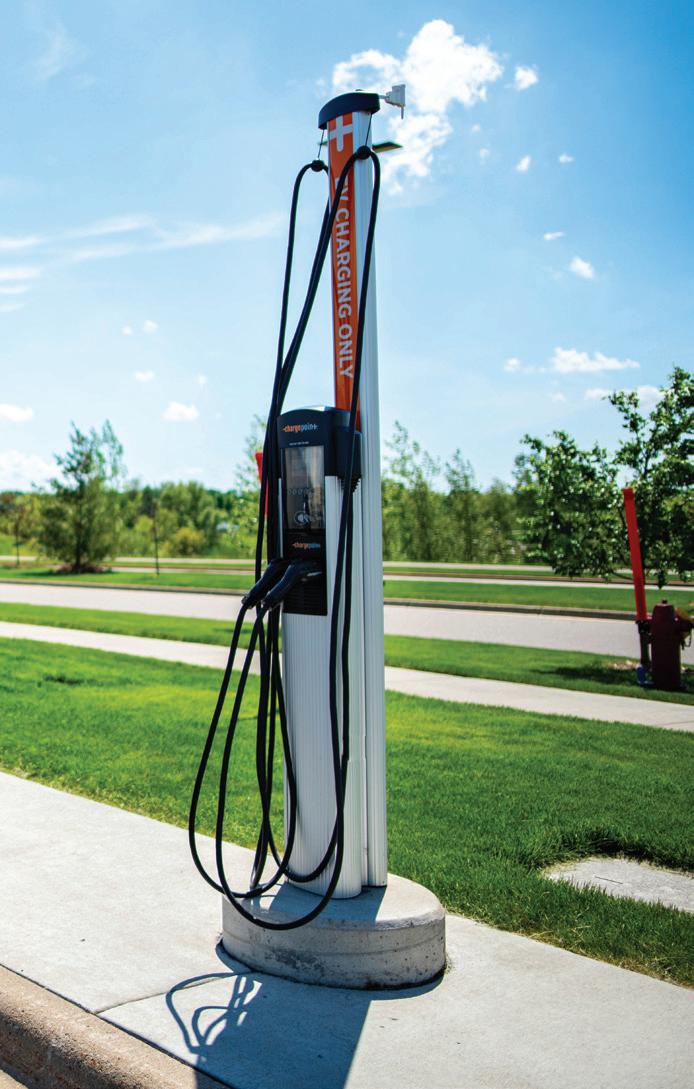
� Ten tons of bingo cards are recycled each year at Mystic Lake Casino Hotel.
� Since 1999, the SMSC has restored over 1,100+ acres of prairie.
� Plastic straw usage has been eliminated across the SMSC’s enterprises.
� Since 2019, more than 54,000 pounds of pumpkins were recycled at the SMSC Organics Recycling Facility during the free pumpkin recycling program.
� Once it reaches full capacity, the new Dakota Prairie Composting facility will reduce carbon emissions by approximately 21,000 tons annually.
� Since 2019, the Land and Natural Resources Department has planted over 14,000 native trees, 5,300 native grasses and flowers, and 1,100 native shrubs.

� In 2021, the SMSC Organics Recycling Facility rolled out a free program allowing SMSC Members and other Scott County residents the ability to drop off household food waste for composting. The program was supported by a $25,000 grant provided by Scott County.
For more information, visit smscnativegreen.org.

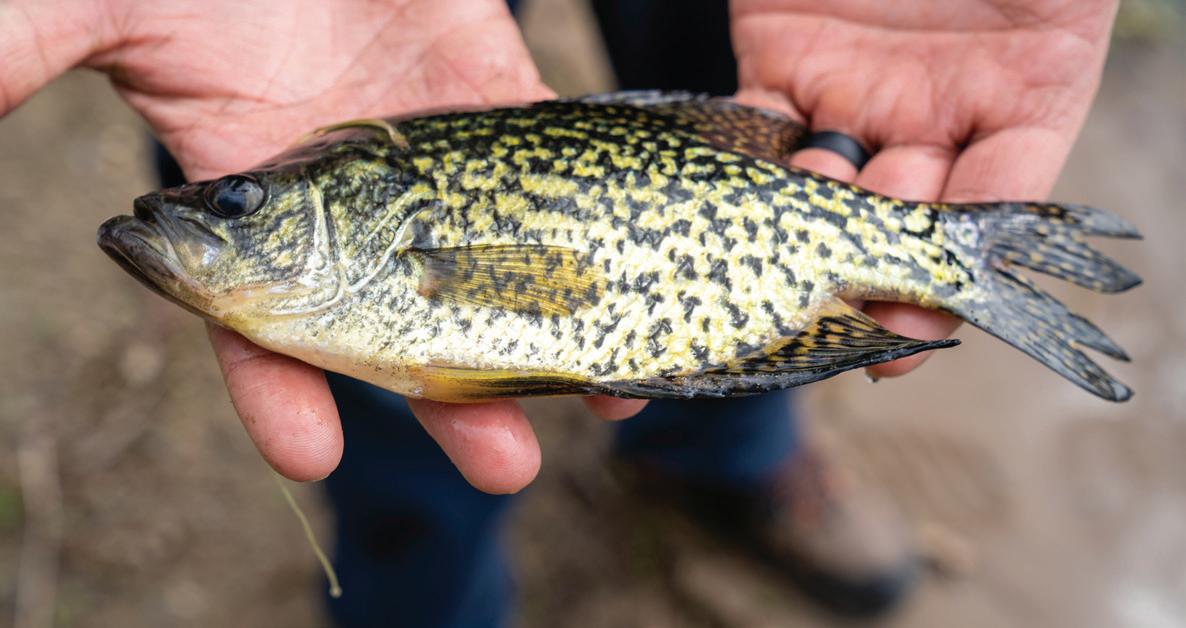
With future generations in mind, over the past four years the SMSC Land and Natural Resources Department has been working to improve water quality and recreational fishing in Pike Lake, located at the corner of Eagle Creek Avenue and County Road 45 in Prior Lake.
One of the challenges faced by staff is the presence of invasive common carp, which impacts water quality by disrupting the lake bottom, uprooting aquatic vegetation, and releasing nutrients into the water column.

During carp removal in February 2021, it was discovered that Pike Lake had suffered significant winter kill due to lack of oxygen in the water. The only fish captured was a bullhead—not exactly what staff members had hoped to see. While this winter kill did reduce invasive carp numbers, it also eliminated the once-thriving populations of bluegill, crappie, and bass.
To help restore the fish population to healthy levels, the SMSC released 7,500 bluegill and 3,750 perch into the lake a few months after the winter kill was discovered. In 2022, representatives from the SMSC joined 10,000 Lakes Aquaculture fish farm to restock the lake with an additional 1,000 bluegill, along with 1,000 black crappie.
This type of stocking will be repeated when necessary as the Land and Natural Resources Department continues to survey the fishery and helps keep the lake’s ecosystem balanced and healthy.
The SMSC takes great pride in protecting Mother Earth and has made significant efforts to understand, restore, and protect the ecosystems that exist within our Community. By taking active measures to preserve nature, the SMSC can help revitalize cultural practices and maintain the natural balance of forest and grassland ecosystems for generations to come.
The Land and Natural Resources Department conducts prescribed burns on SMSC lands and, upon request through mutual aid agreements, in neighboring cities each spring and fall as an effective land preservation tool. Prescribed burns are a critical tool for managing forest and grassland ecosystems. They involve intentionally setting a controlled fire to an area, with the goal of mimicking natural fire cycles and improving the health and resilience of the landscape.
Before colonization, fire was used as a cultural tool by Dakota people and other Indigenous groups for many reasons. The most common uses of fire were to clear land for agriculture; to improve grazing and forage for game species like bison; to reduce brush in woodlands, which helped with easier travel; and to boost plant and seed production.
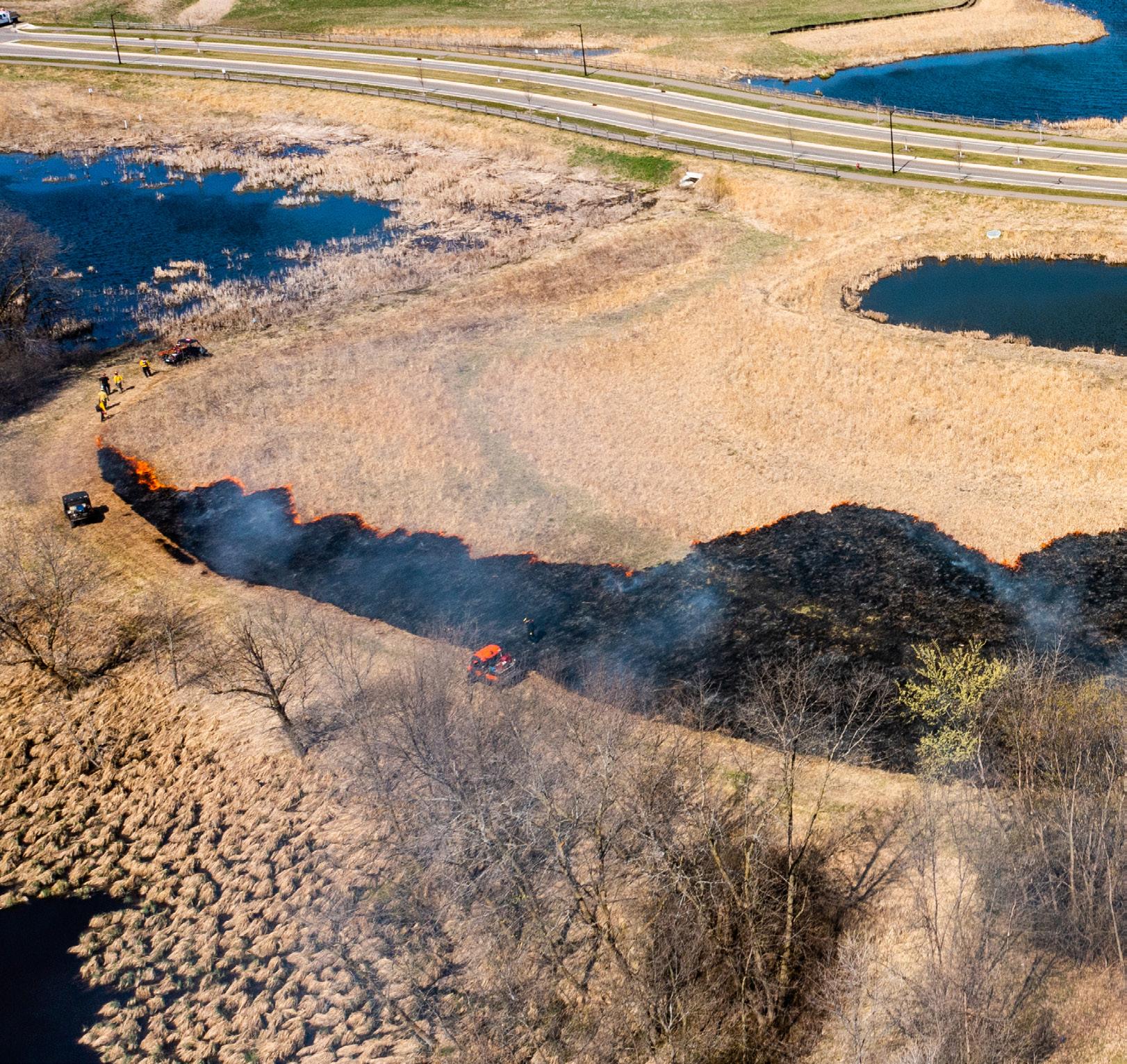
There are a number of benefits to using prescribed burns. For one, they can help reduce the risk of unplanned wildfires by reducing the amount of fuel available for those fires to burn. Additionally, prescribed burns can help restore ecological processes and promote the growth of certain plant species, which can in turn support wildlife populations.
When conducting these prescribed burns, the SMSC Land and Natural Resources Department considers a wide range of factors, including weather conditions, topography, and the presence of sensitive species or habitats. Overall, prescribed burns are a valuable tool for promoting healthy and sustainable ecosystems and reducing the risk of catastrophic wildfires.


Each fall, a grazing goat herd visits SMSC properties to help reduce non-native, invasive buckthorn shrub resprouts. This practice provides many benefits to the land and helps keep ecosystems healthy. Buckthorn can crowd out native plants and displace shrubs and small trees in the mid-layers of forest where birds and other wildlife reside. With the help of these hungry creatures, the SMSC can remove the invasive shrub safely and reduce herbicide use.
The process of goatscaping involves first mowing the affected area to clear as much unwanted shrubbery as possible without negatively impacting the healthy plant life. Goats then work as a secondary treatment to help keep the buckthorn at bay. This process is often completed in the fall because that is when other greenery begins to go dormant and leaves mostly buckthorn to be enjoyed by the goats.
In the fall of 2022, the SMSC and Prairie Island Indian Community worked together to provide a three-day Tribal Water Workshop. Conference participants attended presentations, tours, and breakout sessions on a variety of important topics, including stormwater practices, drone applications, green roof basics, lake and prairie restoration, and Dakota history.
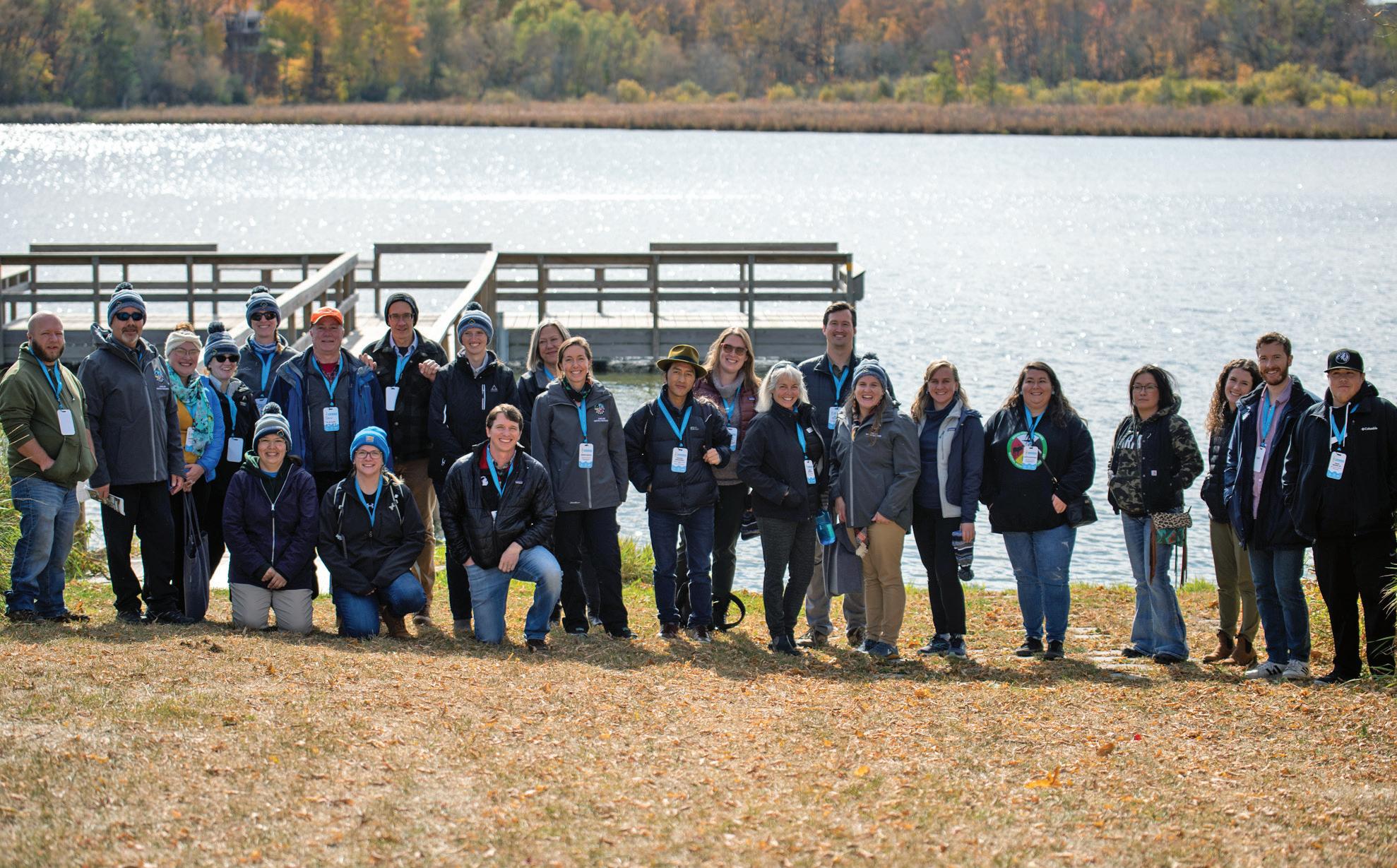
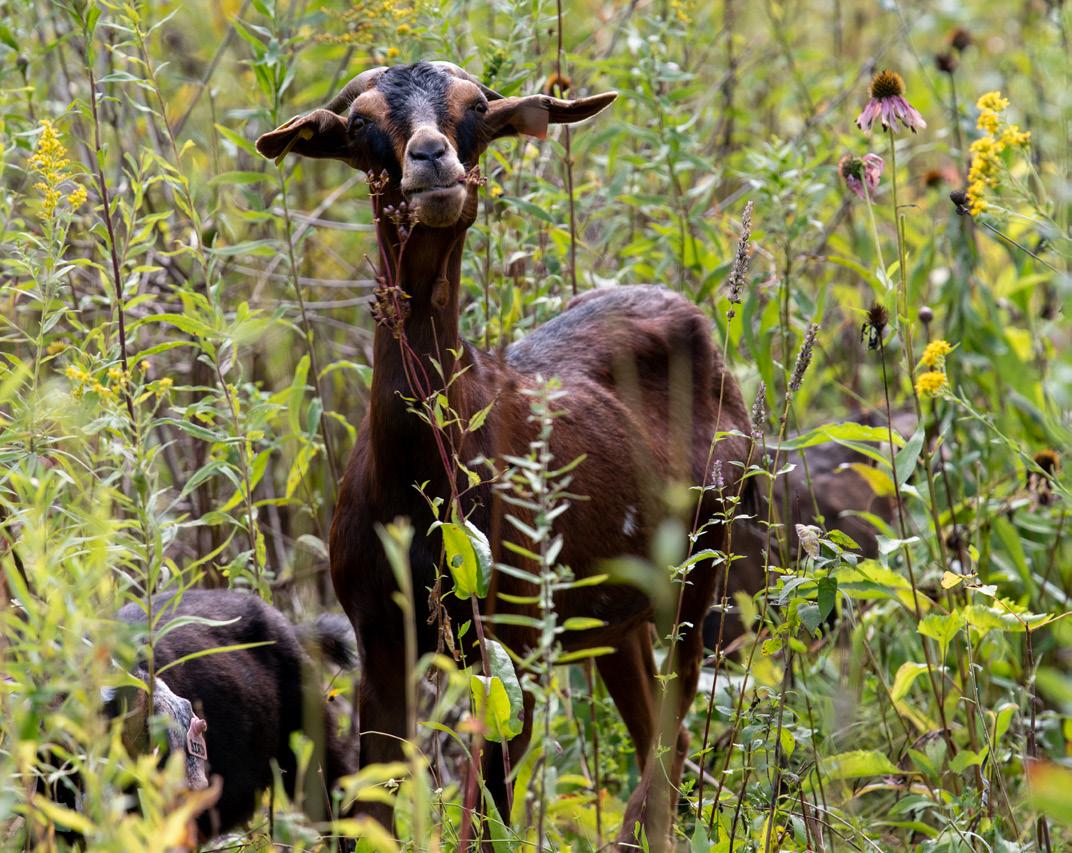
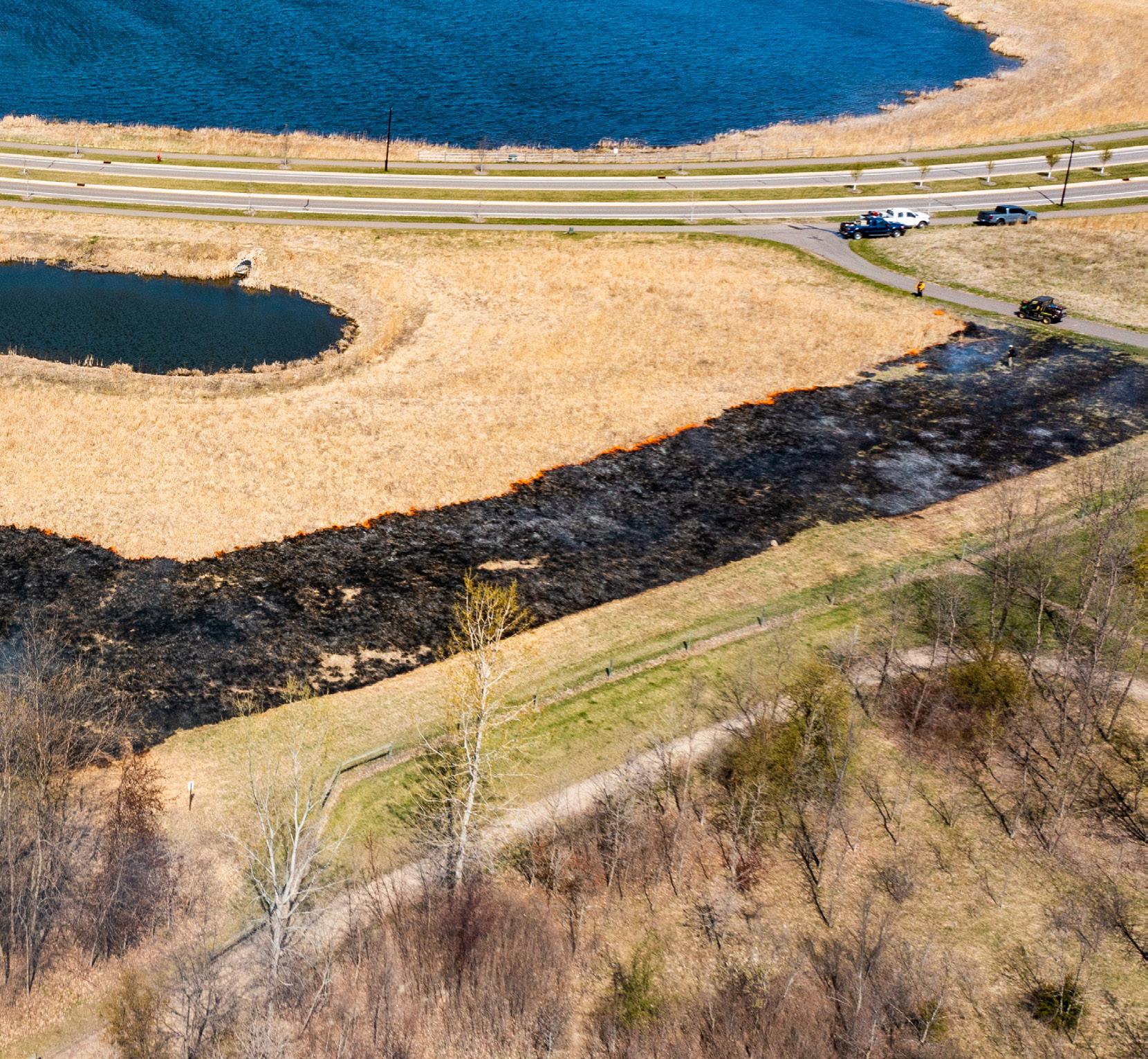
SMSC Water Resources Scientist Jennie Sirota said, “This is the first time a Dakota tribe has hosted this event. There were 31 tribes that were represented, and over 100 participants including vendors.”
The workshop, which took place on the land of both communities, provided knowledge on the kinship the two tribes have with Uŋci Mak a (Grandmother Earth) and highlighted the value of living in harmony with our surroundings.


As part of the SMSC’s commitment to environmental stewardship, the tribe has developed a comprehensive Sustainability Plan that aims to achieve carbon neutrality by 2035 and considers what it means to be sustainable, meeting the needs of the Community for future generations. The plan, which was created with the help of Community Members, staff from the Land and Natural Resources Department, and the outside consulting firm Local Climate Solutions, is grounded in traditional Dakota knowledge and values and informed by innovative practices and technologies. The development of this plan is an important step in providing a framework to realize the SMSC’s mission and work toward ensuring long-term sustainability.
Prior to the completion and adoption of this plan, the SMSC has focused sustainability efforts through the NativeGreen program. This program has served as a foundation for implementing sustainable actions and sharing progress. The SMSC has been a leader in natural
resource management, clean energy, waste diversion, and supporting other communities through its donations and grants program and outreach opportunities. A review of current and past practices serves as a foundation from which this plan is built upon to guide the Community toward a sustainable future that prioritizes local action and global impact.
The Sustainability Plan is structured around three key focus areas: implementing sustainable practices over the next seven generations, achieving carbon neutrality, and adapting to a changing climate. Each area includes strategies and actions that move the SMSC closer to realizing its vision for sustainability over the next 200 years.
The plan is the result of a collaborative process that included conversations with Community Members, Tribal Operations employees, and Gaming Enterprise team members over the course of three listening sessions. The first listening session focused on the development of the SMSC’s vision for sustainability; the second session discussed prioritization of greenhouse gas emissions reductions and offsets; and the third session included broader conversations on climate adaptation and sustainability within and beyond the Community. These conversations informed the vision, strategies, and actions that guide the implementation of the plan.
The implementation of these strategies and actions is not an easy task and may require significant changes to the way people live in the Community and how Tribal Operations and the Gaming Enterprise operate. While achieving the goals of this plan will undoubtedly be challenging, it will also serve as an opportunity to strengthen the Community, preserve the Dakota culture, and safeguard the environment for generations to come. The SMSC is committed to taking bold action and invites all members of the Community to join this journey toward a sustainable future.
for Uŋci Maka (Grandmother Earth) is at the heart of what the SMSC strives to do — now and for future generations. We are fully dedicated to serving our members, supporting other tribes and organizations across the globe, creating strong partnerships, and protecting our natural resources for the benefit of everyone.


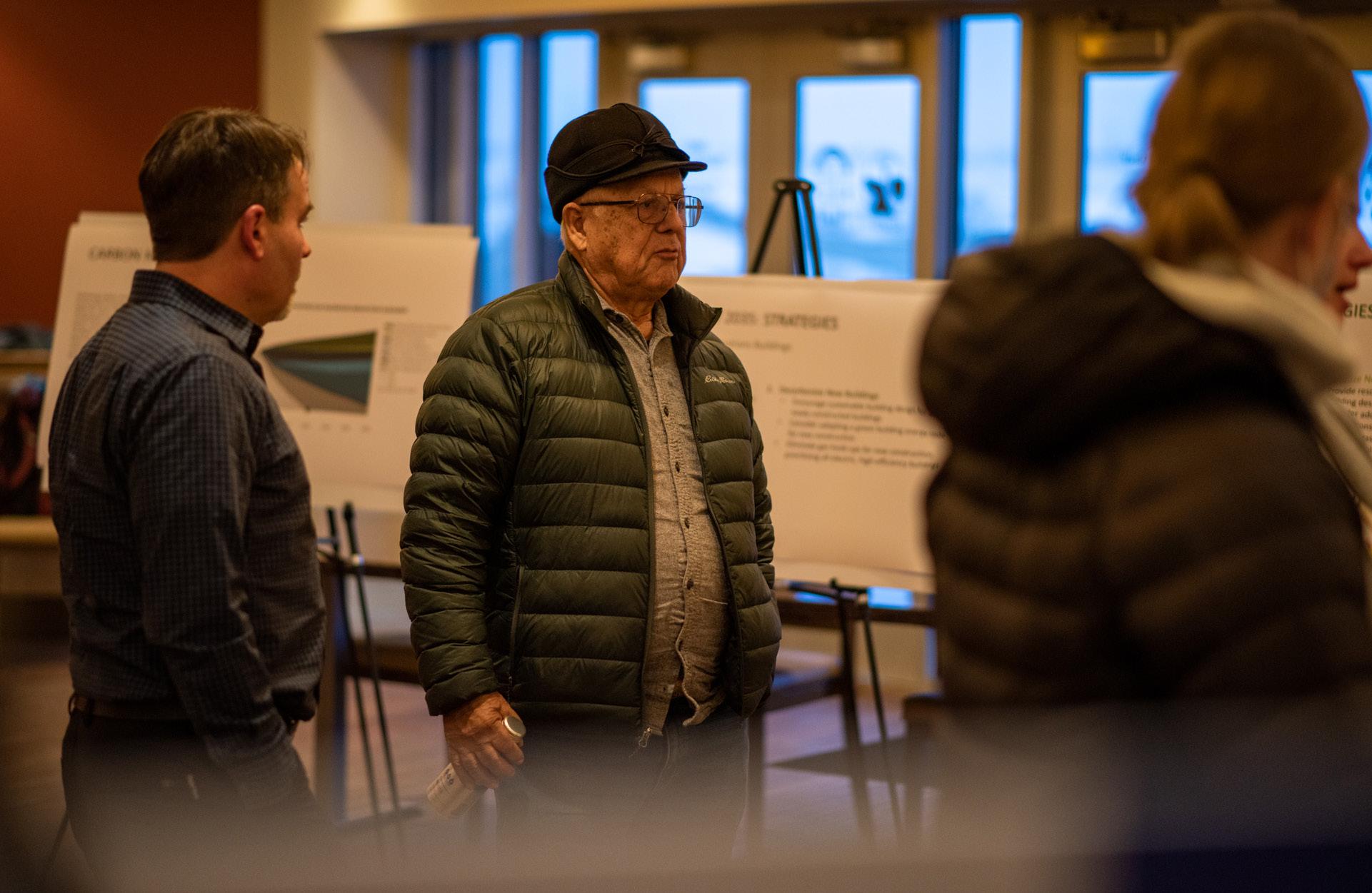
Through periods of scarcity, adversity, and prosperity, the Native American tribes of Minnesota have grown and adapted to meet changing times and conditions. This is the story of the Shakopee Mdewakanton Sioux Community.
Dakota people lived in the Minnesota River Valley for hundreds of years, fishing from rivers and hunting game on the prairies and in the river valley woodlands. Along the banks of the lower Minnesota River, leaders of the Eastern Dakota—including S · akpe, Mazamani, Caške, and Wambdi Taŋka—established villages and followed a natural cycle of life.
First recorded non-Native American contact with Dakota people took place.
After the U.S. government negotiated a variety of treaties with the Dakota, the Dakota lost millions of acres of land for little compensation, eventually surrendering all lands east of the Mississippi River. The Minnesota Territory was created in 1849, and within two years, all remaining Dakota land was in federal hands. The Dakota were forced onto reservations and struggled to survive.
In August and September, the Dakota people’s hunger and destitution escalated into the U.S.-Dakota War of 1862, and the Dakota fought for their homelands, their ways of life, and their basic survival. The largest mass execution in U.S. history was the result—38 Dakota warriors were hanged in Mankato, Minnesota, on December 26, 1862.

A small number of Mdewakanton were allowed to stay in Minnesota, and the U.S. Congress appropriated money throughout the 1880s to provide land for the Mdewakanton who remained in Minnesota. These Acts of Congress led to the formation of the current Mdewakanton tribal governments. The U.S. government purchased land for the Mdewakanton, including land in the Prior Lake area.
Native Americans were granted U.S. citizenship.
The Indian Reorganization Act was implemented, repealing the Dawes Act and enabling tribes to voluntarily organize and adopt federally approved constitutions and bylaws.
Federal termination and relocation policies sent Native Americans to cities to work in an attempt to break up families and tribes. Dakota families living on trust land in Prior Lake worked hard for every meal. Health care, education, and steady employment were out of reach for many.
On November 28, the SMSC formally became a federally recognized Indian tribe, pursuant to the Indian Reorganization Act, with 13 adult voting members and 20 minor members. Norman M. Crooks was elected as the first Chairman of the SMSC.
The tribe’s population grew, even as Members struggled to find adequate housing and employment. Many Community Members depended on food subsidies.
The city of Prior Lake annexed the SMSC reservation.
On October 16, the Little Six Bingo Palace opened under the leadership of Chairman Norman M. Crooks, and busloads of people began arriving. This new source of economic opportunity brought many changes to the tribe. Tribal government services began to improve, and opportunities for the tribe and its Members increased.
The city of Prior Lake redrew precinct boundaries, leaving out the reservation after deciding the 1972 annexation was illegal. Courts later overturned that action and declared that the city had to provide voting rights and municipal services to the SMSC on an equal basis, even though they had no civil jurisdiction over the reservation.
Minnesota tribes were the first in the nation to negotiate and sign compacts with a state government under the authority provided in the Indian Gaming Regulatory Act of 1988. In order to develop Class III gaming operations, each tribe in Minnesota needed to reach compacts with the state government. The result was 22 compacts—one for video games of chance and one for blackjack, for each of the 11 tribes—signed from 1989-1991. On September 25, 1991, a tribal-state compact was signed between the SMSC and the state of Minnesota, authorizing Class III gaming.
The tribe saw significant growth throughout the 1990s, with the addition of residential housing subdivisions, a convenience store, Dakotah! Sport and Fitness, Playworks, and Dakotah Meadows RV Park. In this new era of selfsufficiency, the Community was able to use its inherent sovereign rights and growing economy to purchase additional lands and to radically improve its economic base.
Mystic Lake Casino opened in May.
Dakota Country Casino doubled the gaming space at Mystic Lake and featured retail shops, three new restaurants, and nightly entertainment.
The first hotel tower opened at Mystic Lake Casino, drawing entertainment and guests to the SMSC and further promoting economic success.
Mystic Lake Casino opened a second and third hotel tower. The tribe continued to see significant growth with the opening of Tiowakan Spiritual Center, the SMSC Cemetery, Dakotah Meadows Mini Storage, Playworks LINK Event Center, and the Mystic Lake Store at Mall of America.
Mdewakanton Public Safety was established, providing fire and ambulance services to Community Members, guests, and patrons of the SMSC, and residents of nearby communities. The SMSC purchased Lone Pine Golf Course, initiating a complete remodel and later reopening in 2005 as The Meadows at Mystic Lake.
The SMSC worked with the State Historic Preservation Office and the Minnesota DNR to place Maka Yusota/ Boiling Springs on the National Register as a Traditional Cultural Property (TCP) on January 16, as the first TCP in the State of Minnesota.
A Water Reclamation Facility utilizing European technology to treat wastewater for reuse as irrigation opened, reducing energy costs and consumption. A 1 million-gallon water tower was built to better serve the needs of the tribe, as well as a second water treatment facility and another water tower on the northern portion of the reservation.
The Mystic Showroom opened as a premier entertainment venue, as well as a new Bingo Hall at Mystic Lake Casino Hotel and a second convenience store, Shakopee Dakota Convenience Store #2. Health care services improved for Community Members with the debut of the SMSC Pharmacy and the SMSC Wellness Center. Little Six Casino reopened in December, moving back to its original site.
SMSC Water Bottling, a vision clinic, and a second ice arena at Dakotah! Sport and Fitness opened. After nearly nine years in the federal review process, the SMSC’s application to have 752.41 acres of land be placed into trust was approved.
A 262-foot, 1.5-megawatt wind turbine at the SMSC Wacipi Grounds became operational. The Minnesota Tribal Nations Plaza was dedicated at TCF Bank Stadium at the University of Minnesota in Minneapolis, funded in part by the SMSC. Koda Energy, a joint, green initiative between the SMSC and Rahr Malting of Shakopee, began operations.
Mazopiya, the SMSC’s natural food market, opened its doors. Wozupi Tribal Gardens began operations, providing fruits and vegetables for the tribe.
The SMSC Organics Recycling Facility opened in the fall, further supporting the Dakota tradition of caring for the earth. The SMSC also dedicated a statue in front of the Community Center to honor the SMSC’s first Chairman, Norman M. Crooks.
Together, four Sioux tribes—including the SMSC— purchased the sacred site Pe’ Sla in South Dakota. The SMSC marked the 150th anniversary of the U.S.-Dakota War with marches and funds to build a memorial in Mankato, Minnesota, in honor of the 38 hanged Dakota warriors. Historic partnerships were made with Canterbury Park and St. Francis Regional Medical Center, both in Shakopee.
The first Indian Horse Relay, hosted by the SMSC and Mystic Lake Casino Hotel, came to Canterbury Park in September. The SMSC General Council created the Youth Leadership Council, a group of youth Community ambassadors, role models, and peer mentors. Government-to-government relationships also continued to improve through an agreement between the SMSC and the city of Shakopee regarding shared police services.
SMSC government buildings went smoke free.
Construction began on a new endeavor for the SMSC, the JW Marriott Minneapolis Mall of America, which opened its doors the following year. The SMSC and the city of Prior Lake entered into a water purchase agreement and joint facility, offering the city access to a new water supply for the next 25 years.
The SMSC launched Seeds of Native Health, an $11 million philanthropic campaign to improve nutrition in Native American communities across the country.
The SMSC broke ground at its new cultural center (Hoċokata Ti). Construction began on Mystic Lake Center, a hotel and event space addition to Mystic Lake Casino Hotel.
Funded by the SMSC, Voices of Our Ancestors launched across five tribal communities in an effort to preserve the Dakota language. The SMSC also purchased the historic Ṡakpe village spring site in Shakopee.
Bringing the total hotel room count to 766, Mystic Lake Center opened to the public in January. In March, the first-ever City-Tribal Relations Training was held in Prior Lake, promoting government-to-government relationships among the SMSC and surrounding cities. Community Youth participated in the nation’s first Tribal Youth Gathering to discuss issues affecting young Native Americans.
The Native Farm Bill Coalition—a project of the SMSC’s Seeds of Native Health campaign—worked diligently to advocate for Indian Country’s interest in the 2018 Farm Bill. The bill passed in December 2018, with a historic 63 provisions that positively impacted tribes and Native producers.
Hoċokata Ti, the SMSC’s cultural center, celebrated its grand opening, providing Community Members with a permanent gathering space to meet, teach, celebrate, and preserve all things Dakota. Three of the SMSC’s enterprises—Dakotah Meadows RV Park, Shakopee Dakota Convenience Store #1, and Dakotah! Sport and Fitness—celebrated 25th anniversaries. In September, the SMSC and the city of Prior Lake celebrated the opening of their new joint South Area Water Treatment Plant. The SMSC also honored and recognized its 50th anniversary of federal recognition on November 28, 2019.
The Minnesota Legislature hosted a Tribal Sovereignty Day in the Minnesota House Chambers where tribal leaders addressed state legislators from the Speaker’s podium.
The SMSC launched Understand Native Minnesota, a $5 million strategic initiative and philanthropic campaign to improve the Native American narrative in Minnesota schools.
Life changed across the globe with the onset of the COVID-19 pandemic. The SMSC developed several health and safety protocols and adjusted enterprise operations to protect the Community, its members, employees, and visitors.
The SMSC sold its stake in Koda Energy to Rahr Malting. In an effort to diversify the tribe’s economy, the SMSC invested in Windward Engineers & Consultants, a certified minority business enterprise (MBE) engineering firm.
After pausing smoking in both gaming facilities due to the COVID-19 pandemic, the Gaming Enterprise officially implemented a no smoking policy.
The SMSC’s Understand Native Minnesota campaign launched a new podcast series, titled Native Minnesota with Rebecca Crooks-Stratton.
The SMSC was the first tribal government to have an exhibit at the Minnesota State Fair.
The SMSC returned to the Minnesota State Fair for the second year in a row and was awarded a Minnesota State Fair 2022 Best Award. The SMSC also hosted a booth at the Scott County Fair for the first time.
The SMSC’s Hiŋhaŋkaġa trust application was approved by the Bureau of Indian Affairs.
A technical amendment was made to the Tribal-State Compact for Video Games of Chance/Slots that altered the percentage pay out of Video Games of Chance used in the SMSC Gaming Enterprise.
The 262-foot-tall wind turbine located off of Dakotah Parkway was demolished.
2023
The Minnesota Legislature hosted the second-ever Sovereignty Day at the Capitol, with members of the House and Senate participating for the first time.
The SMSC broke ground on the new location of the SMSC Organics Recycling Facility. The new facility will operate under the name Dakota Prairie Composting, set to open in 2024.
Mazopiya, the tribe’s natural food market, closed in July. The market still offers many of their food items via Playworks Catering.
The SMSC extends its deepest sympathies to all Community families who have lost loved ones in the past four years.
Marvin R. Brewer
October 14, 1955 – June 30, 2023
William “Bill” R. Brewer
April 16, 1964 – November 15, 2020
Katherine M. Brewer-Knight
December 31, 1979 – August 4, 2023
Jennifer C. Campbell
July 30, 1978 – May 28, 2020
George M. Crooks
August 22, 1954 – January 10, 2022
Adam N. Dedeker
January 9, 1980 – June 10, 2021
Ohiyesa P. Firesteel
July 14, 1995 – May 13, 2022

Roxanne J. Haines-Murman
July 18, 1939 – December 16, 2020
Sally J. Milroy
February 28, 1933 – October 4, 2020
Doris M. Perrault-Guion
June 22, 1940 – January 4, 2020
Chyanne A. Rios
June 27, 2014 – August 22, 2022
Lisa K. Rowles
March 27, 1959 – December 16, 2021
Scott R. Vig
October 13, 1981 – February 27, 2020
James “Jim” K. Welch
October 26, 1959 – March 23, 2022


